Inspired by you.
hand crafted in Rome.



















Dubini provides bespoke jewellery services to make timeless and elegant pieces for its customers, using fine Italian techniques blended with Benedetta’s extensive knowledge as a creative designer and gemologist.

01. References

02. Select the ANCIENT Goods

03. HAND CRAFTED

04. Unique jewel with emotional weight
Ancient coins
Beads
Gemstones
Gnostic Gem
Intaglio
Islamic Coins
Italian Coins
Mughal Coins
Patina
Scarabs
Seals
(Ancient coins)
As rare as precious stones, ancient coins, sourced from numismatic dealers and auction houses, are referred to as “gemme nummarie” (nummary gems) and straddle centuries of history.
These miniature pieces of art have been carefully selected for their mythological and historical aspects, which are slowly uncovered while analysing the engraver's work. Each mark provides a hint of the city in which the coin was minted, the victory it was celebrating, or the emperor in power during that period. Owning a coin is like owning a piece of history, with its details intact, allowing us to study and dream.
Ancient coins were made from gold, silver, electrum, and copper and its alloys, such as bronze or brass. Gold coins did not become common until the time of Philip II, the father of Alexander the Great.
Coins of gold and silver are said to have intrinsic value, as their worth closely approximated the value of the bullion making up the coin. The fineness or purity of the metal used for gold and silver coinages was closely monitored.
Throughout Greek and Roman times, gold coins were consistently of very high purity, usually more than 95 percent pure gold. Silver coins were of equally high purity until the time of the Roman Emperor Nero, who lowered the silver content to about 90 percent.
Coins of copper and its alloys were not common until the later fourth century B.C. The Greeks mainly used bronze, an alloy of copper and tin, or simply copper. The Romans used a yellowish alloy of copper and zinc, a type of brass called orichalcum. Numismatists label all copper-alloy coins as bronze.
Every ancient coin has two sides: one called the obverse, the other the reverse; and the figure, and legend, or inscription, on each face, deserve thoughtful consideration. Note that today’s way of describing coins varies slightly.
OBVERSE: The “front” of the coin. On most Roman coins, this is the side with the portrait of a ruler. Technically, it is the side of the coin that lays flat on the anvil when being struck. The ‘legend’, writing on the obverse, typically names the issuer, emperor, titles, or other designations.
REVERSE: The “back” of the coin. Also described as the “Type.” On most Roman coins, this side features figures of people, scenes worthy of note, deities, various symbols, and interesting designs. Sometimes, a provincial city will have a constant design or type on the reverse, in effect a civic symbol or badge. Technically, the reverse is the side struck with the hammer and punch. This is the side of the coin paid most attention to when classifying coins.
EDGE: The “third side” of the coin. Most edges are of plain design, but some are serrated. On modern coins, the edge often has many small ridges or is “reeded,” hoping to prevent the act of clipping a little of the precious metal from the edges. Since the reeds would be missing from a clipped coin anyone would know the coin to be below proper weight. This practice continues today even though precious metals are no longer used in coins for circulation.
Ancient coins were made from gold, silver, electrum, and copper and its alloys, such as bronze or brass. Gold coins did not become common until the time of Philip II, the father of Alexander the Great.
Coins of gold and silver are said to have intrinsic value, as their worth closely approximated the value of the bullion making up the coin. The fineness or purity of the metal used for gold and silver coinages was closely monitored.
Throughout Greek and Roman times, gold coins were consistently of very high purity, usually more than 95 percent pure gold. Silver coins were of equally high purity until the time of the Roman Emperor Nero, who lowered the silver content to about 90 percent.
Coins of copper and its alloys were not common until the later fourth century B.C. The Greeks mainly used bronze, an alloy of copper and tin, or simply copper. The Romans used a yellowish alloy of copper and zinc, a type of brass called orichalcum. Numismatists label all copper-alloy coins as bronze.
Every ancient coin has two sides: one called the obverse, the other the reverse; and the figure, and legend, or inscription, on each face, deserve thoughtful consideration. Note that today’s way of describing coins varies slightly.
OBVERSE: The “front” of the coin. On most Roman coins, this is the side with the portrait of a ruler. Technically, it is the side of the coin that lays flat on the anvil when being struck. The ‘legend’, writing on the obverse, typically names the issuer, emperor, titles, or other designations.
REVERSE: The “back” of the coin. Also described as the “Type.” On most Roman coins, this side features figures of people, scenes worthy of note, deities, various symbols, and interesting designs. Sometimes, a provincial city will have a constant design or type on the reverse, in effect a civic symbol or badge. Technically, the reverse is the side struck with the hammer and punch. This is the side of the coin paid most attention to when classifying coins.
EDGE: The “third side” of the coin. Most edges are of plain design, but some are serrated. On modern coins, the edge often has many small ridges or is “reeded,” hoping to prevent the act of clipping a little of the precious metal from the edges. Since the reeds would be missing from a clipped coin anyone would know the coin to be below proper weight. This practice continues today even though precious metals are no longer used in coins for circulation.
MINTED: Circa 336-323 B.C.
MATERIAL: Silver
DIAMETER: 26-30mm
MATERIAL: Silver
DIAMETER: 26-30mm
The tetradrachm of Alexander III is prized for its artistry and historical value. The obverse depicts Herakles, wearing the Nemean lion's skin—a symbol of strength and bravery, referencing his first labor in Greek mythology.
On the reverse, the coin showcases the supreme god Zeus, the father of Herakles. Zeus is majestically seated on his throne, holding a scepter in one hand and an eagle in the other, embodying his role as the king of the gods.
While some suggest that the image of Herakles might actually represent Alexander, reflecting his view of himself as a godlike figure, this interpretation highlights the strong connection Alexander felt with divine status.
Alexander the Great, born in 356 B.C., was one of history's most accomplished military leaders. By the age of 30, he had created one of the largest empires of the ancient world, stretching from Greece to Egypt and into northwest India. His key accomplishments include the decisive victory at the Battle of Issus in 333 B.C., where he defeated the Persian king Darius III, and the founding of over 20 cities, the most famous being Alexandria in Egypt, which became a major center of Hellenistic culture.
The tetradrachm, nominally equivalent to four drachmae, was a significant coin in ancient Greek commerce. Issued during Alexander’s reign and beyond, these coins facilitated trade across his vast empire and helped spread Greek culture. Today, the Alexander the Great tetradrachm is celebrated not only for its historical context but also for its exquisite craftsmanship, making it a valuable piece for collectors and a testament to the legacy of one of history's most legendary figures.
On the reverse, the coin showcases the supreme god Zeus, the father of Herakles. Zeus is majestically seated on his throne, holding a scepter in one hand and an eagle in the other, embodying his role as the king of the gods.
While some suggest that the image of Herakles might actually represent Alexander, reflecting his view of himself as a godlike figure, this interpretation highlights the strong connection Alexander felt with divine status.
Alexander the Great, born in 356 B.C., was one of history's most accomplished military leaders. By the age of 30, he had created one of the largest empires of the ancient world, stretching from Greece to Egypt and into northwest India. His key accomplishments include the decisive victory at the Battle of Issus in 333 B.C., where he defeated the Persian king Darius III, and the founding of over 20 cities, the most famous being Alexandria in Egypt, which became a major center of Hellenistic culture.
The tetradrachm, nominally equivalent to four drachmae, was a significant coin in ancient Greek commerce. Issued during Alexander’s reign and beyond, these coins facilitated trade across his vast empire and helped spread Greek culture. Today, the Alexander the Great tetradrachm is celebrated not only for its historical context but also for its exquisite craftsmanship, making it a valuable piece for collectors and a testament to the legacy of one of history's most legendary figures.
MINTED: Circa 168-148 B.C.
MATERIAL: Silver
DIAMETER: 29-31mm
MATERIAL: Silver
DIAMETER: 29-31mm
This coin features the goddess Artemis, identifiable by her bow and quiver, within an ornate Macedonian shield. She wears a stephane headpiece, with her hair styled in a triple knot and loose locks cascading down her neck.
Artemis, an Olympian goddess in Greek mythology, was the daughter of Zeus and the twin sister of Apollo. She was highly revered as the goddess of hunting, wildlife, and women, with a special emphasis on childbirth. Artemis had a significant cult following, and her temple in Ephesus, known as the Temple of Artemis, was one of the Seven Wonders of the Ancient World.
The reverse of the coin illustrates a club enclosed within an oak wreath, symbolising strength and victory. An inscription in Greek, "ΜΑΚΕΔΟΝΩΝ ΠΡΩΤΗΣ," translates to "First of the Macedonians," attributing the coin to the first region of the Roman client state. Despite Macedon's conquest by Rome, the region continued to produce coinage in the Hellenistic style, reflecting its enduring cultural legacy. This coin is a testament to the blend of Macedonian and Roman influences during this period.
This tetradrachm not only holds monetary value but also provides a glimpse into the religious and cultural landscape of ancient Macedon, celebrating one of the most admired deities of the ancient Greek pantheon.
Artemis, an Olympian goddess in Greek mythology, was the daughter of Zeus and the twin sister of Apollo. She was highly revered as the goddess of hunting, wildlife, and women, with a special emphasis on childbirth. Artemis had a significant cult following, and her temple in Ephesus, known as the Temple of Artemis, was one of the Seven Wonders of the Ancient World.
The reverse of the coin illustrates a club enclosed within an oak wreath, symbolising strength and victory. An inscription in Greek, "ΜΑΚΕΔΟΝΩΝ ΠΡΩΤΗΣ," translates to "First of the Macedonians," attributing the coin to the first region of the Roman client state. Despite Macedon's conquest by Rome, the region continued to produce coinage in the Hellenistic style, reflecting its enduring cultural legacy. This coin is a testament to the blend of Macedonian and Roman influences during this period.
This tetradrachm not only holds monetary value but also provides a glimpse into the religious and cultural landscape of ancient Macedon, celebrating one of the most admired deities of the ancient Greek pantheon.
MINTED: Circa 148-90 B.C.
MATERIAL: Silver
DIAMETER: 32mm
MATERIAL: Silver
DIAMETER: 32mm
Dionysos (Greek: Διόνυσος) is the ancient Greek god of the grape harvest, winemaking, and wine, as well as ritual madness and ecstasy. This Thracian coin depicts the profile of a youthful Dionysos, wearing a band across his forehead and an ivy wreath.
He was one of the twelve Olympian gods, son of Zeus and the mortal Semele. According to the Cretan version, Dionysos was the son of Zeus and Persephone, queen of the Greek underworld. He was known as the driving force behind ancient Greek theatre and inspired joyful worship and ecstasy during festivals and celebrations. The divine mission of Dionysos was to spread the music of the aulos (an ancient Greek musical instrument) and bring liberation.
On the coin’s reverse, Dionysos is depicted in a moment of pure celebration, holding a cluster of grapes, a cloak, and two narthex canes—stems from the giant fennel plant used to create the thyrsus, a symbol of his power and prosperity. The thyrsus was emblematic of Dionysos' influence over nature and abundance.
Some interpretations suggest that the reverse might also represent Heracles, a fellow patron deity of Thasos in Thrace. The 'cloak' might symbolise the hide of the Nemean Lion, the first of Heracles' famed Twelve Labours. This legendary lion's impenetrable skin was overcome by Heracles' strength and strategy, an act that further cements his heroic legacy.
He was one of the twelve Olympian gods, son of Zeus and the mortal Semele. According to the Cretan version, Dionysos was the son of Zeus and Persephone, queen of the Greek underworld. He was known as the driving force behind ancient Greek theatre and inspired joyful worship and ecstasy during festivals and celebrations. The divine mission of Dionysos was to spread the music of the aulos (an ancient Greek musical instrument) and bring liberation.
On the coin’s reverse, Dionysos is depicted in a moment of pure celebration, holding a cluster of grapes, a cloak, and two narthex canes—stems from the giant fennel plant used to create the thyrsus, a symbol of his power and prosperity. The thyrsus was emblematic of Dionysos' influence over nature and abundance.
Some interpretations suggest that the reverse might also represent Heracles, a fellow patron deity of Thasos in Thrace. The 'cloak' might symbolise the hide of the Nemean Lion, the first of Heracles' famed Twelve Labours. This legendary lion's impenetrable skin was overcome by Heracles' strength and strategy, an act that further cements his heroic legacy.
MINTED: Circa 336-323 B.C.
MATERIAL: Silver
DIAMETER: 18mm
MATERIAL: Silver
DIAMETER: 18mm
The coinage of Alexander the Great, particularly the silver drachma, often depicted him with a lion scalp, symbolising his strength and heroic conquests. These coins were crucial in spreading his image and influence across his vast empire.
Alexander, succeeding his father King Philip II at just 20, led Macedon to unprecedented victories, conquering Persia, Egypt, the Middle East, and parts of Afghanistan and India. Beyond expanding his domain, he aimed to unify his empire's diverse cultures, fostering the Hellenistic Age, a period marked by significant achievements in art, literature, science, and numismatics.
His coins depicted him as Heracles (Hercules to the Romans), wearing a lion scalp, symbolising the hero's slaying of the Nemean Lion, the first of the 12 Labours. The reverse featured Zeus, the supreme Greek god, seated on a decorated throne, holding a sceptre and an eagle, symbolising divine strength and authority. The inscription “ΒΑΣΙΛΕΩΣ ΑΛΕΞΑΝΔΡΟΥ” (Of King Alexander) reinforced Alexander's divine association and legitimised his rule. These coins not only facilitated economic unity but also served as powerful propaganda, promoting his image throughout the ancient world.
The coins of Alexander the Great are tangible pieces of history, offering a glimpse into his life, power, and legacy. They serve as a portal to the early days of civilisation, showing how the past informs the present and future.
Alexander, succeeding his father King Philip II at just 20, led Macedon to unprecedented victories, conquering Persia, Egypt, the Middle East, and parts of Afghanistan and India. Beyond expanding his domain, he aimed to unify his empire's diverse cultures, fostering the Hellenistic Age, a period marked by significant achievements in art, literature, science, and numismatics.
His coins depicted him as Heracles (Hercules to the Romans), wearing a lion scalp, symbolising the hero's slaying of the Nemean Lion, the first of the 12 Labours. The reverse featured Zeus, the supreme Greek god, seated on a decorated throne, holding a sceptre and an eagle, symbolising divine strength and authority. The inscription “ΒΑΣΙΛΕΩΣ ΑΛΕΞΑΝΔΡΟΥ” (Of King Alexander) reinforced Alexander's divine association and legitimised his rule. These coins not only facilitated economic unity but also served as powerful propaganda, promoting his image throughout the ancient world.
The coins of Alexander the Great are tangible pieces of history, offering a glimpse into his life, power, and legacy. They serve as a portal to the early days of civilisation, showing how the past informs the present and future.
MINTED: Circa 210-211 A.D.
MATERIAL: Silver
DIAMETER: 19mm
MATERIAL: Silver
DIAMETER: 19mm
Lucius Septimius Severus was born in 145 A.D. in Lepcis Magna, Libya, and was the first African-born Roman emperor. Minted in the final years of his reign, the coin features sharp detailing, evident in the precision of Severus' features.
He arrived in Rome shortly after turning 18 and was swiftly made a senator by Emperor Marcus Aurelius. Severus is credited with strengthening and revitalising an empire facing imminent decline. He eliminated the dangerous praetorians, unified the empire after periods of turmoil and civil war, strengthened the army, defeated Rome’s most powerful enemy, and founded a successful dynasty. He worked to assert the authority of the emperor, projecting an image of a strong, decisive ruler. This authority is symbolised by his adornment with the laurel wreath.
On the reverse, Minerva is depicted standing tall, brandishing her spear and shield. Minerva, the Roman goddess of wisdom, justice, and warfare, was highly revered and considered by Marcus Varro (roman scholar) to be the personification of the plan for the universe. Her Greek equivalent, Athena, was similarly depicted on Greek coinage, typically wearing a helmet.
He arrived in Rome shortly after turning 18 and was swiftly made a senator by Emperor Marcus Aurelius. Severus is credited with strengthening and revitalising an empire facing imminent decline. He eliminated the dangerous praetorians, unified the empire after periods of turmoil and civil war, strengthened the army, defeated Rome’s most powerful enemy, and founded a successful dynasty. He worked to assert the authority of the emperor, projecting an image of a strong, decisive ruler. This authority is symbolised by his adornment with the laurel wreath.
On the reverse, Minerva is depicted standing tall, brandishing her spear and shield. Minerva, the Roman goddess of wisdom, justice, and warfare, was highly revered and considered by Marcus Varro (roman scholar) to be the personification of the plan for the universe. Her Greek equivalent, Athena, was similarly depicted on Greek coinage, typically wearing a helmet.
MINTED: Circa 188-170 B.C.
MATERIAL: Silver
DIAMETER: 16mm
MATERIAL: Silver
DIAMETER: 16mm
Helios is the personification of the Sun in Greek mythology. Depicted as a handsome young man with a magnificent crown of rays, he guides the chariot of the sun across the sky from east to west.
He is the son of the Titan Hyperion and the Titaness Theia, also known as Euryphaessa, and the brother of the goddesses Selene, the Moon, and Eos, the Dawn.
The Colossus of Rhodes, the sixth of the Seven Wonders of the Ancient World, was a huge statue of Helios measuring 32 metres (100 feet) high. It was built at Rhodes in 280 B.C. but was destroyed by an earthquake later in that century. It has inspired many later sculptures, including the Statue of Liberty. Rhodian plinthophoroi were with some certainty introduced around 190 B.C. and continued for a century until the end of the first Mithridatic War in 84 BC.
The term 'plinthophoric' used to describe this period of Rhodian coinage refers to the characteristic square incuse on the reverse of this series. The Greek πλίνθος translates as “brick” or “ingot.” The Greek for rose was ρόδον (rhodon). It was also the name of the nymph Rhodos, daughter of Aphrodite.
He is the son of the Titan Hyperion and the Titaness Theia, also known as Euryphaessa, and the brother of the goddesses Selene, the Moon, and Eos, the Dawn.
The Colossus of Rhodes, the sixth of the Seven Wonders of the Ancient World, was a huge statue of Helios measuring 32 metres (100 feet) high. It was built at Rhodes in 280 B.C. but was destroyed by an earthquake later in that century. It has inspired many later sculptures, including the Statue of Liberty. Rhodian plinthophoroi were with some certainty introduced around 190 B.C. and continued for a century until the end of the first Mithridatic War in 84 BC.
The term 'plinthophoric' used to describe this period of Rhodian coinage refers to the characteristic square incuse on the reverse of this series. The Greek πλίνθος translates as “brick” or “ingot.” The Greek for rose was ρόδον (rhodon). It was also the name of the nymph Rhodos, daughter of Aphrodite.
MINTED: Circa 147 B.C.
MATERIAL: Silver
DIAMETER: 19mm
MATERIAL: Silver
DIAMETER: 19mm
Early denarii typically display a helmeted head of Roma, the personification and divine patron of Rome, depicted as a war-like figure, wearing a helmet and armour, or holding a shield, spear, sword, or sceptre.
The denarius, introduced in 211 B.C., was the principal silver coin of Rome for five hundred years. The profile head of the goddess Roma was the most popular image depicted on silver denarii in the second and first centuries BC. She embodied Roman ideals of advancement, expansion, and virtue from c. 270 BC. During Emperor Augustus' reign, he made the worship of Roma official.
Roman political, moral, and religious notions were portrayed through Roma in different forms: coins, sculptures, and architectural designs, even in official games and festivals, but seldom in a commonplace or domestic context, as Roma was a construction of Roman state patronage.
Though her depictions were influenced by other goddesses at the time, such as Rome’s Minerva, her Greek equivalent Athena, and the various manifestations of Greek Tyches, Roma stands out as a symbol of “natural” dominance, promising protection to those who obeyed or cooperated with her, and embodying “manly virtue” as a fierce mother of a warrior race. The denarius formed the backbone of Roman currency throughout the Roman Republic and the early Empire.
The denarius, introduced in 211 B.C., was the principal silver coin of Rome for five hundred years. The profile head of the goddess Roma was the most popular image depicted on silver denarii in the second and first centuries BC. She embodied Roman ideals of advancement, expansion, and virtue from c. 270 BC. During Emperor Augustus' reign, he made the worship of Roma official.
Roman political, moral, and religious notions were portrayed through Roma in different forms: coins, sculptures, and architectural designs, even in official games and festivals, but seldom in a commonplace or domestic context, as Roma was a construction of Roman state patronage.
Though her depictions were influenced by other goddesses at the time, such as Rome’s Minerva, her Greek equivalent Athena, and the various manifestations of Greek Tyches, Roma stands out as a symbol of “natural” dominance, promising protection to those who obeyed or cooperated with her, and embodying “manly virtue” as a fierce mother of a warrior race. The denarius formed the backbone of Roman currency throughout the Roman Republic and the early Empire.
MINTED: Circa A.D. 1200-1247
MATERIAL: Gold
DIAMETER: 17mm
MATERIAL: Gold
DIAMETER: 17mm
The central lotus blossom is fringed by a Devagiri legend, positioned above the arrow. The lotus flower symbolises fertility, enlightenment, and rebirth, representing a transcendence of spirit over worldly matter.
This coin belonged to the Seuna Indian Dynasty, which ruled Maharashtra, North Karnataka, and Madhya Pradesh from around 850 AD to 1334 AD. They were feudatories of the Western Chalukyas and often claimed descent from the Yadavas of Dwarka, Lord Krishna’s clan, hence their alternate name: the Yadavas of Devagiri.
The Yadavas of Devagiri issued coins known as ‘padma tankas’ due to the central padma, or lotus motif. These gold coins were cup-shaped, mirroring the lotus shape itself, formed by the force of the central punch.
This coin belonged to the Seuna Indian Dynasty, which ruled Maharashtra, North Karnataka, and Madhya Pradesh from around 850 AD to 1334 AD. They were feudatories of the Western Chalukyas and often claimed descent from the Yadavas of Dwarka, Lord Krishna’s clan, hence their alternate name: the Yadavas of Devagiri.
The Yadavas of Devagiri issued coins known as ‘padma tankas’ due to the central padma, or lotus motif. These gold coins were cup-shaped, mirroring the lotus shape itself, formed by the force of the central punch.
MINTED: Circa 200 – 185 B.C.
MATERIAL: Bronze
DIAMETER: 31mm
MATERIAL: Bronze
DIAMETER: 31mm
Demetrius I (c. 167-222 B.C.) was the Indo-Greek ruler of the kingdom of Bactria. His victories in India are highlighted on this coin through the symbolism of the elephant. The elephant was also a frequent emblem of wealth and achievement.
A bell hangs from the elephant's neck, echoing Hindu traditions where bell sounds are considered auspicious, welcoming divinity and dispelling evil. Elephants were first used in warfare by Indian and Persian armies. Greco-Macedonian troops encountered them during Alexander the Great's campaign, and later Hellenistic rulers continued to use them in battle, integrating the animal into Greco-Roman art.
The reverse of the coin is also significant. With his conquests in India, Demetrius gained control over vast stretches of the Silk Road, earning the epithet "the Unconquered" (aniketos). The depiction of the kerykeion, or caduceus, showed that power was in Demetrius' hands as it guaranteed sanctity to its possessor. This emblem, associated with the Greek god Hermes, signifies his role as a messenger and guide for souls to the Underworld. The intertwined snakes, a symbol of harmony, originate from a legend in which Hermes intervened in a fight between two snakes, causing them to entwine around his rod, symbolising the resolution of disputes. The inscription on the reverse, "ΒΑΣΙΛΕΩΣ ΔΗΜΗΤΡΙΟΥ," translates to "of King Demetrius" or "belonging to King Demetrius."
A bell hangs from the elephant's neck, echoing Hindu traditions where bell sounds are considered auspicious, welcoming divinity and dispelling evil. Elephants were first used in warfare by Indian and Persian armies. Greco-Macedonian troops encountered them during Alexander the Great's campaign, and later Hellenistic rulers continued to use them in battle, integrating the animal into Greco-Roman art.
The reverse of the coin is also significant. With his conquests in India, Demetrius gained control over vast stretches of the Silk Road, earning the epithet "the Unconquered" (aniketos). The depiction of the kerykeion, or caduceus, showed that power was in Demetrius' hands as it guaranteed sanctity to its possessor. This emblem, associated with the Greek god Hermes, signifies his role as a messenger and guide for souls to the Underworld. The intertwined snakes, a symbol of harmony, originate from a legend in which Hermes intervened in a fight between two snakes, causing them to entwine around his rod, symbolising the resolution of disputes. The inscription on the reverse, "ΒΑΣΙΛΕΩΣ ΔΗΜΗΤΡΙΟΥ," translates to "of King Demetrius" or "belonging to King Demetrius."
MINTED: Circa 74 B.C.
MATERIAL: Silver
DIAMETER: 17mm
MATERIAL: Silver
DIAMETER: 17mm
Diana was the Roman goddess of hunting, nature, childbirth, and later the moon. In Roman art, she often appears with a bow and a hound or deer. On this coin, Diana is shown with a bow and quiver, while the reverse depicts a hunting hound with a spear.
As a fertility deity, she was invoked by women to aid conception and delivery. The celestial character of Diana is reflected in her connection to guidance, both in life, the afterlife and as a bearer of light in darkness. She played a crucial role in protecting and honouring childbirth, helping to preserve humankind.
Though perhaps originally an indigenous woodland goddess, Diana became Hellenised and identified with Artemis. The most famous place of worship for the goddess was the grove of Diana Nemorensis (“Diana of the Wood”) on the shores of Lake Nemi at Aricia (modern Ariccia), near Rome.
As a fertility deity, she was invoked by women to aid conception and delivery. The celestial character of Diana is reflected in her connection to guidance, both in life, the afterlife and as a bearer of light in darkness. She played a crucial role in protecting and honouring childbirth, helping to preserve humankind.
Though perhaps originally an indigenous woodland goddess, Diana became Hellenised and identified with Artemis. The most famous place of worship for the goddess was the grove of Diana Nemorensis (“Diana of the Wood”) on the shores of Lake Nemi at Aricia (modern Ariccia), near Rome.
MINTED: Circa 338 – 250 B.C.
MATERIAL: Silver
DIAMETER: 20mm
MATERIAL: Silver
DIAMETER: 20mm
Athena, the revered goddess of war and wisdom, graces this exquisite Corinthian coin. She is depicted wearing a Corinthian helmet, symbolising her integral role in the founding myth of the city-state.
Corinth, a key port city in Magna Graecia, rivaled Athens and Thebes in wealth and influence. Its currency, featuring Athena and Pegasus, was widely recognised and circulated. According to legend, the Corinthian hero Bellerophon received a golden bridle from Athena to tame Pegasus, the immortal winged horse. This myth accentuates Athena's patronage of heroes and leaders. Bellerophon, with Pegasus by his side, went on to slay the Chimera and achieve great feats, cementing Pegasus's frequent appearance on Corinthian coins and those of its colonies.
Pegasus, a symbol of divine inspiration and ascension, is depicted in dynamic motion on the reverse with finely detailed wings, capturing the creature's grace and power. According to myth, Bellerophon later attempted to fly to heaven, but Zeus caused Pegasus to buck, throwing him back to earth in disgrace. Pegasus's name, meaning either "of the spring" or "sprung forth," alludes to its connections with various springs and its birth from the Gorgon Medusa's neck.
Athens and Corinth were renowned for their early and significant coinages, with two of the most famous types in the ancient Greek world: the Owl of Athens and the Pegasus, or "colt," of Corinth. This Corinthian coin not only celebrates Athena's divine influence but also embodies the rich mythological and cultural heritage of ancient Greece.
Corinth, a key port city in Magna Graecia, rivaled Athens and Thebes in wealth and influence. Its currency, featuring Athena and Pegasus, was widely recognised and circulated. According to legend, the Corinthian hero Bellerophon received a golden bridle from Athena to tame Pegasus, the immortal winged horse. This myth accentuates Athena's patronage of heroes and leaders. Bellerophon, with Pegasus by his side, went on to slay the Chimera and achieve great feats, cementing Pegasus's frequent appearance on Corinthian coins and those of its colonies.
Pegasus, a symbol of divine inspiration and ascension, is depicted in dynamic motion on the reverse with finely detailed wings, capturing the creature's grace and power. According to myth, Bellerophon later attempted to fly to heaven, but Zeus caused Pegasus to buck, throwing him back to earth in disgrace. Pegasus's name, meaning either "of the spring" or "sprung forth," alludes to its connections with various springs and its birth from the Gorgon Medusa's neck.
Athens and Corinth were renowned for their early and significant coinages, with two of the most famous types in the ancient Greek world: the Owl of Athens and the Pegasus, or "colt," of Corinth. This Corinthian coin not only celebrates Athena's divine influence but also embodies the rich mythological and cultural heritage of ancient Greece.
MINTED: Circa 194 – 217 A.D.
MATERIAL: Silver
DIAMETER: 18-20mm
MATERIAL: Silver
DIAMETER: 18-20mm
Julia Domna, Roman empress from A.D. 193-211, second wife of Emperor Septimius Severus and mother of Caracalla and Geta. Her distinct profile and elaborate hairstyling are captured here, with a chignon, ridged waves, and the small curl on the cheek.
A woman of intelligence, talent, and beauty, Julia Domna wielded considerable influence during her husband's reign and played a crucial role in administering the empire for her sons. Her adept counsel and public presence earned her the honorific title "Mother of the Invincible Camps," reflecting her integrity and importance as empress.
Julia Domna became a symbol of female virtue and imperial authority, setting a precedent for the roles women could assume in the empire. Her patronage of the arts, philosophy, and literature fostered a vibrant cultural and intellectual environment at the imperial court, contributing to her lasting legacy.
On the reverse side of the coin, the figure of Diana Lucifera ("light-bearer") is depicted, gracefully holding a torch in both hands. Revered by many as the embodiment of the moon, Diana was believed to have the divine power to transform darkness into daylight. This mystical association highlights her role as a celestial guide and protector, illuminating the night with her radiant presence.
A woman of intelligence, talent, and beauty, Julia Domna wielded considerable influence during her husband's reign and played a crucial role in administering the empire for her sons. Her adept counsel and public presence earned her the honorific title "Mother of the Invincible Camps," reflecting her integrity and importance as empress.
Julia Domna became a symbol of female virtue and imperial authority, setting a precedent for the roles women could assume in the empire. Her patronage of the arts, philosophy, and literature fostered a vibrant cultural and intellectual environment at the imperial court, contributing to her lasting legacy.
On the reverse side of the coin, the figure of Diana Lucifera ("light-bearer") is depicted, gracefully holding a torch in both hands. Revered by many as the embodiment of the moon, Diana was believed to have the divine power to transform darkness into daylight. This mystical association highlights her role as a celestial guide and protector, illuminating the night with her radiant presence.
MINTED: Circa 356 – 342 B.C.
MATERIAL: Silver
DIAMETER: 11mm
MATERIAL: Silver
DIAMETER: 11mm
Larissa, a water nymph, was the daughter of the primordial man Pelasgus. She was renowned for her radiance and is often depicted with flowing hair confined by an ampyx and floating loosely, all within a dotted border.
In the late 5th century B.C., Larissa ceased minting federal coins shared with other Thessalian towns and adopted its own coinage, choosing local motifs. The obverse features Larissa, the nymph of the local spring and the town's namesake, inspired by the famous coins of Kimon depicting the Syracusan nymph Arethusa.
The reverse depicts a horse, an appropriate symbol for Thessaly, a land of plains known for its horses. In early Greek culture, the horse symbolised human power and the ability to domesticate animals. It also represented status, nobility, and political domination, remaining one of the most depicted animals in the Classical world.
In the late 5th century B.C., Larissa ceased minting federal coins shared with other Thessalian towns and adopted its own coinage, choosing local motifs. The obverse features Larissa, the nymph of the local spring and the town's namesake, inspired by the famous coins of Kimon depicting the Syracusan nymph Arethusa.
The reverse depicts a horse, an appropriate symbol for Thessaly, a land of plains known for its horses. In early Greek culture, the horse symbolised human power and the ability to domesticate animals. It also represented status, nobility, and political domination, remaining one of the most depicted animals in the Classical world.
MINTED: Circa 1st century B.C.
MATERIAL: Silver
DIAMETER: 8-9mm
MATERIAL: Silver
DIAMETER: 8-9mm
The principality of Persis emerged in the 8th century B.C. as a satrapy of Elam. Featured here is a crowned bust of the king. Coins of Persis were minted in small quantities for local use only, enhancing their rarity and value.
Persis was situated in southeastern Iran along the Persian Gulf. The kings of Persis maintained a degree of autonomy under Parthian rule, primarily due to their role as guardians of Zoroastrianism. The last king of Persis, Ardeshir V, successfully revolted against the Parthians and became the first Sasanian king. The Sasanian Empire succeeded the Parthian Empire and later endured for over four centuries, making it the longest-lived Persian imperial dynasty.
The coin's design was influenced by Parthian coinage, particularly in the depiction of the ruler's attire and headgear.
Persis was situated in southeastern Iran along the Persian Gulf. The kings of Persis maintained a degree of autonomy under Parthian rule, primarily due to their role as guardians of Zoroastrianism. The last king of Persis, Ardeshir V, successfully revolted against the Parthians and became the first Sasanian king. The Sasanian Empire succeeded the Parthian Empire and later endured for over four centuries, making it the longest-lived Persian imperial dynasty.
The coin's design was influenced by Parthian coinage, particularly in the depiction of the ruler's attire and headgear.
MINTED: Circa 57-38 B.C.
MATERIAL: Silver
DIAMETER: 28-30mm
MATERIAL: Silver
DIAMETER: 28-30mm
The coin depicts a Parthian king with finely detailed hair and beard, adorned in traditional attire. The king wears a diadem or rounded tiara, often embellished with ornamentation around the crest and a beaded border.
Instead of the archer typically featured on the reverse of silver drachms, these larger coins often depict more elaborate scenes. The goddess Tyche, the goddess of good fortune and fate, is seen giving a diadem to the king. This was a symbol of legitimization for Parthian monarchical power. Around the scene are lines of inscription, which rarely fit entirely on the flan.
The dynastic name ΑΡΣΑΚΟΥ (Arsaces) is found on almost every coin. Between the heads of Tyche and the king, there is usually a Greek numeral indicating the year of the Seleucid era. Year dating was common on Seleucid coins but rare on Parthian issues from mints other than Seleucia. All Parthian tetradrachms, it is currently believed, were produced at the Seleucia mint, first conquered by the Parthians in 141 B.C.
Instead of the archer typically featured on the reverse of silver drachms, these larger coins often depict more elaborate scenes. The goddess Tyche, the goddess of good fortune and fate, is seen giving a diadem to the king. This was a symbol of legitimization for Parthian monarchical power. Around the scene are lines of inscription, which rarely fit entirely on the flan.
The dynastic name ΑΡΣΑΚΟΥ (Arsaces) is found on almost every coin. Between the heads of Tyche and the king, there is usually a Greek numeral indicating the year of the Seleucid era. Year dating was common on Seleucid coins but rare on Parthian issues from mints other than Seleucia. All Parthian tetradrachms, it is currently believed, were produced at the Seleucia mint, first conquered by the Parthians in 141 B.C.
MINTED: Circa 4th century B.C.
MATERIAL: Silver
DIAMETER: 13mm
MATERIAL: Silver
DIAMETER: 13mm
The lion, an emblem of power and a symbol of Chersonesos' natural locality, adds to the coin's elegant simplicity. The design features a backward-looking lion with its tongue out and a curving body, gracefully following the coin's curvature.
Little is known about Chersonesos apart from its coinage. Like many other Greek city-states, the city of Chersonesos was built on a site that offered significant military or economic advantages. Located on a peninsula extending from Europe into the Aegean Sea on the west and the Dardanelles on the east, its name derives from the ancient Greek word for peninsula, ‘χερσόνησος’.
From 560 to 338 B.C., Chersonesos was under Athenian control, during which the hemidrachma coin played a crucial role in facilitating trade with cities along the Black Sea coast.
Little is known about Chersonesos apart from its coinage. Like many other Greek city-states, the city of Chersonesos was built on a site that offered significant military or economic advantages. Located on a peninsula extending from Europe into the Aegean Sea on the west and the Dardanelles on the east, its name derives from the ancient Greek word for peninsula, ‘χερσόνησος’.
From 560 to 338 B.C., Chersonesos was under Athenian control, during which the hemidrachma coin played a crucial role in facilitating trade with cities along the Black Sea coast.
MINTED: Circa 116 – 101 B.C.
MATERIAL: Silver
DIAMETER: 18-20mm
MATERIAL: Silver
DIAMETER: 18-20mm
Profile of the diademed head of the King of Cappadocia from the Ariarathid Dynasty. After Alexander the Great ended Persian rule, Ariarathes, a Persian aristocrat, regained control of Cappadocia and became its first king.
Ariarathes I proved to be a capable ruler, expanding the kingdom's borders westward to the Black Sea. Following Alexander's death, Perdiccas appointed Eumenes to govern the region. Despite facing defeat, capture, and crucifixion, Ariarathes I's son reclaimed the kingdom during the ensuing Macedonian turmoil. The dynasty, named predominantly after its founder, continued to rule.
Under Ariarathes IV, Cappadocia allied with Rome, maintaining its autonomy until A.D. 17, when Tiberius reclassified it as a Roman province.
The obverse depicts Athena Nikephoros, bearing a spear. Nike, considered an aspect of the Greek goddess Athena, is portrayed here specifically as the bringer of victory.
Ariarathes I proved to be a capable ruler, expanding the kingdom's borders westward to the Black Sea. Following Alexander's death, Perdiccas appointed Eumenes to govern the region. Despite facing defeat, capture, and crucifixion, Ariarathes I's son reclaimed the kingdom during the ensuing Macedonian turmoil. The dynasty, named predominantly after its founder, continued to rule.
Under Ariarathes IV, Cappadocia allied with Rome, maintaining its autonomy until A.D. 17, when Tiberius reclassified it as a Roman province.
The obverse depicts Athena Nikephoros, bearing a spear. Nike, considered an aspect of the Greek goddess Athena, is portrayed here specifically as the bringer of victory.
MINTED: Circa A.D. 330-337
MATERIAL: Bronze
DIAMETER: 18-19mm
MATERIAL: Bronze
DIAMETER: 18-19mm
This bronze coin was issued by Constantine the Great in A.D. 330 to mark the founding of Constantinople, his new capital. On one side, it shows the goddess "Constantinopolis" in a helmet and military gear, representing the city's importance and strength.
Constantine and his sons made these coins to show that both Rome and Constantinople were equally important, highlighting the new significance of Constantinople in the empire.
On the other side of the coin, Victory stands on the front of a ship, celebrating the naval victory of Crispus, Constantine's son, who captured Byzantium and renamed it Constantinople.
Constantine the Great is known for his major reforms and for supporting Christianity. His work in establishing Constantinople marked a key turning point in Roman history and helped shape the future of the empire.
Constantine and his sons made these coins to show that both Rome and Constantinople were equally important, highlighting the new significance of Constantinople in the empire.
On the other side of the coin, Victory stands on the front of a ship, celebrating the naval victory of Crispus, Constantine's son, who captured Byzantium and renamed it Constantinople.
Constantine the Great is known for his major reforms and for supporting Christianity. His work in establishing Constantinople marked a key turning point in Roman history and helped shape the future of the empire.
MINTED: Circa 54–68 A.D.
MATERIAL: Bronze
DIAMETER: 30mm
MATERIAL: Bronze
DIAMETER: 30mm
Possibly the most infamous of the Roman Emperors, Nero ruled Rome from 54 A.D. until his death by his own hand in 68 A.D.
From murdering his mother and other political opponents to (according to rumour) starting the great fires of Rome, the stories about his reign paint a picture of a tyrannical and impulsive Emperor that the people of Rome were glad to see gone. Victoria (Victory) on the reverse of this coin is the personification of the goddess of victory. She is the equivalent of Nike, the Greek goddess who is often seen in the hand of Athena on ancient Greek coins.
From murdering his mother and other political opponents to (according to rumour) starting the great fires of Rome, the stories about his reign paint a picture of a tyrannical and impulsive Emperor that the people of Rome were glad to see gone. Victoria (Victory) on the reverse of this coin is the personification of the goddess of victory. She is the equivalent of Nike, the Greek goddess who is often seen in the hand of Athena on ancient Greek coins.
MINTED: Circa 155-143 B.C.
MATERIAL: Silver
DIAMETER: 32mm
MATERIAL: Silver
DIAMETER: 32mm
The diademed profile of Kyme, one of the most illustrious Amazonian generals and the founding figure of the city, is depicted. Kyme's commanding presence, adorned with a detailed tainia (ribbon), signifies her role as a formidable leader and strategic genius.
The Amazons, a legendary tribe of fierce female warriors, were renowned for their unmatched archery skills and superior horsemanship. They defied Greek norms with their matriarchal society, raising only daughters and sending their sons back to their fathers, engaging with them briefly only for reproductive purposes. Brave and fiercely independent, the Amazons embarked on extensive military campaigns under the leadership of their queens, playing a dramatic role in Greek mythology. They were an active force in Greek mythology, featuring in the Trojan War under Queen Penthesilea and also as one of the Labours of Hercules, who was tasked with obtaining Queen Hippolyte’s magic belt.
Among the ancient Greeks, the term 'Amazon' was popularly folk-etymologised as originating from the Greek ‘amazos’ meaning breastless. This was connected with a tradition that claimed Amazons had their right breast cut or burnt off as it was thought a hindrance in battle.
Reversing the coin reveals a beautifully rendered bridled horse, lifting its foreleg with a cup beneath it. This symbol reflects the prosperity and equine prowess of the city of Kyme, emphasising the significance of the region's thriving horse industry.
This coin is a prime example of the artistic mastery of Hellenistic coinage, featuring an elaborate laurel wreath encircling the horse, showcasing the exceptional craftsmanship and detail of the period.
The Amazons, a legendary tribe of fierce female warriors, were renowned for their unmatched archery skills and superior horsemanship. They defied Greek norms with their matriarchal society, raising only daughters and sending their sons back to their fathers, engaging with them briefly only for reproductive purposes. Brave and fiercely independent, the Amazons embarked on extensive military campaigns under the leadership of their queens, playing a dramatic role in Greek mythology. They were an active force in Greek mythology, featuring in the Trojan War under Queen Penthesilea and also as one of the Labours of Hercules, who was tasked with obtaining Queen Hippolyte’s magic belt.
Among the ancient Greeks, the term 'Amazon' was popularly folk-etymologised as originating from the Greek ‘amazos’ meaning breastless. This was connected with a tradition that claimed Amazons had their right breast cut or burnt off as it was thought a hindrance in battle.
Reversing the coin reveals a beautifully rendered bridled horse, lifting its foreleg with a cup beneath it. This symbol reflects the prosperity and equine prowess of the city of Kyme, emphasising the significance of the region's thriving horse industry.
This coin is a prime example of the artistic mastery of Hellenistic coinage, featuring an elaborate laurel wreath encircling the horse, showcasing the exceptional craftsmanship and detail of the period.
MINTED: Circa 4th-3rd century B.C.
MATERIAL: Silver
DIAMETER: 18mm
MATERIAL: Silver
DIAMETER: 18mm
This rare coin features an intricate female janiform head with a central earring on the obverse. The term 'janiform' derives from the Roman god Janus, revered as the deity presiding over beginnings, endings, and transitions.
Traditionally depicted with two heads facing opposite directions, Janus gazes simultaneously into the past and future. This female depiction of Janus is especially intriguing, as the deity was typically portrayed as a bearded male, often appealed to alongside Jupiter himself. According to legend, Janus was gifted with foresight by Saturn in recognition of his hospitality. He had a core presence in religious ceremonies throughout the year, as he was ritually invoked at the beginning of each ceremony, regardless of the main deity honoured.
Janus-like depictions of gods associated with Hermes have been unearthed in Greece, possibly suggesting a syncretic deity, but there is no direct Greek equivalent for the Roman god. The janiform motif often signifies duality, encompassing concepts such as past and future, life and death, or the merging of rulership and divinity.
On the reverse, the coin features Athena wearing a crested Corinthian helmet, further reflecting the interplay between gods and the realm of men. In Greek religion and mythology, Athena embodies wisdom, courage, civilisation, justice, strategic warfare, and strength. Renowned for her active role in many glorious battles, such as the Trojan War, this coin exemplifies the duality of classical deities.
Traditionally depicted with two heads facing opposite directions, Janus gazes simultaneously into the past and future. This female depiction of Janus is especially intriguing, as the deity was typically portrayed as a bearded male, often appealed to alongside Jupiter himself. According to legend, Janus was gifted with foresight by Saturn in recognition of his hospitality. He had a core presence in religious ceremonies throughout the year, as he was ritually invoked at the beginning of each ceremony, regardless of the main deity honoured.
Janus-like depictions of gods associated with Hermes have been unearthed in Greece, possibly suggesting a syncretic deity, but there is no direct Greek equivalent for the Roman god. The janiform motif often signifies duality, encompassing concepts such as past and future, life and death, or the merging of rulership and divinity.
On the reverse, the coin features Athena wearing a crested Corinthian helmet, further reflecting the interplay between gods and the realm of men. In Greek religion and mythology, Athena embodies wisdom, courage, civilisation, justice, strategic warfare, and strength. Renowned for her active role in many glorious battles, such as the Trojan War, this coin exemplifies the duality of classical deities.
MINTED: Circa 520-450 B.C
MATERIAL: Silver
DIAMETER: 10mm
MATERIAL: Silver
DIAMETER: 10mm
This coin features a detailed depiction of a roaring lion, Miletos' civic badge, encircled by an intricate, flaring mane. The lion, filling the flan of the coin, serves as an emblem of strength and nobility.
The Miletos Lion diverges from a realistic, representational depiction of a lion head. Lions were a primary symbol throughout the Grecian world, used to convey the wisdom, ferocity and authority of the people it represented. Recurring in many Greek myths, the most famous association with the great creature was the Nemean Lion, which Hercules was tasked to kill as the first of his Twelve Labours. Other representations include the Sphinx, which had the body of a lioness and the head and breast of a woman, and the Chimera, which had the forepart of a lion.
Flipping the coin displays a more ambiguous symbol, described variously in the literature as the sun symbol, ornamented star, floral star or rosette. The stellate pattern may be in reference to Apollo, Miletos’ patron and the god of the Sun, light, healing, prophecy and music. Miletos was a character from Greek mythology, the eponymous mythical founder of the city. He was the son of Apollo and Areia, a nymph. Following the advice of Sarpedon, a son of Zeus, he went with an army, founding the city.
Miletos also held the sanctuary, Didyma, which was dedicated to Apollo. Its’ famed oracle of Apollo announced prophecies from the highest room in the temple, where inquiries and answers were written and some inscriptions with them were uncovered by excavators. Prophetic practice was at the core of ancient Greek politics and society, and the celebration of Apollo was seen as key to encouraging favourable oracles.
Miletos was an important and wealthy Ancient Greek city on the western coast of Anatolia, among the twelve cities forming Ionia. It was a significant sea power and trading port, catalysed by the confluence of stability, prosperity and leisure, the city became the world’s premiere centre for science and learning. In the sixth century B.C., it was one of the first Greek cities to mint coinage before coming under Persian domination. In the following century, Miletos played a major role in the Ionian Revolt of the Greek cities in Asia Minor against Persia. This coin may have been minted in support of the military effort.
The Miletos Lion diverges from a realistic, representational depiction of a lion head. Lions were a primary symbol throughout the Grecian world, used to convey the wisdom, ferocity and authority of the people it represented. Recurring in many Greek myths, the most famous association with the great creature was the Nemean Lion, which Hercules was tasked to kill as the first of his Twelve Labours. Other representations include the Sphinx, which had the body of a lioness and the head and breast of a woman, and the Chimera, which had the forepart of a lion.
Flipping the coin displays a more ambiguous symbol, described variously in the literature as the sun symbol, ornamented star, floral star or rosette. The stellate pattern may be in reference to Apollo, Miletos’ patron and the god of the Sun, light, healing, prophecy and music. Miletos was a character from Greek mythology, the eponymous mythical founder of the city. He was the son of Apollo and Areia, a nymph. Following the advice of Sarpedon, a son of Zeus, he went with an army, founding the city.
Miletos also held the sanctuary, Didyma, which was dedicated to Apollo. Its’ famed oracle of Apollo announced prophecies from the highest room in the temple, where inquiries and answers were written and some inscriptions with them were uncovered by excavators. Prophetic practice was at the core of ancient Greek politics and society, and the celebration of Apollo was seen as key to encouraging favourable oracles.
Miletos was an important and wealthy Ancient Greek city on the western coast of Anatolia, among the twelve cities forming Ionia. It was a significant sea power and trading port, catalysed by the confluence of stability, prosperity and leisure, the city became the world’s premiere centre for science and learning. In the sixth century B.C., it was one of the first Greek cities to mint coinage before coming under Persian domination. In the following century, Miletos played a major role in the Ionian Revolt of the Greek cities in Asia Minor against Persia. This coin may have been minted in support of the military effort.
MINTED: Circa A.D. 41-50
MATERIAL: Bronze
DIAMETER: 32mm
MATERIAL: Bronze
DIAMETER: 32mm
Tiberius Claudius Caesar Augustus Germanicus was the fourth Roman emperor from 41 to 54 A.D. He was renowned for his able and efficient leadership, deified by Nero and the Senate post-humously.
Claudius is best remembered for successfully expanding Roman influence into Britain, Africa, and the Middle East. He was a distinguished leader who introduced significant reforms to the empire's judicial system. His laws safeguarded enslaved workers, extended Roman citizenship, and centralised the power structures of the senate. Claudius's reign was marked by remarkable dynamism and progressive policies that contributed to Rome's enduring legacy of governance and administration.
The reverse of the coin depicts Ceres Augusta, the goddess of agriculture, motherhood, and fertility, in a seated position. Ceres was honoured during the seven-day April festival of Cerealia, which included the popular Ludi Ceriales, a series of public games. She was also invoked for blessings and power during Roman marriages and funeral rites. The use of Ceres' image underscores Claudius' association with prosperity and success, while also bolstering his connection with justice, as Ceres was the patron and protector of plebeian laws.
Claudius is best remembered for successfully expanding Roman influence into Britain, Africa, and the Middle East. He was a distinguished leader who introduced significant reforms to the empire's judicial system. His laws safeguarded enslaved workers, extended Roman citizenship, and centralised the power structures of the senate. Claudius's reign was marked by remarkable dynamism and progressive policies that contributed to Rome's enduring legacy of governance and administration.
The reverse of the coin depicts Ceres Augusta, the goddess of agriculture, motherhood, and fertility, in a seated position. Ceres was honoured during the seven-day April festival of Cerealia, which included the popular Ludi Ceriales, a series of public games. She was also invoked for blessings and power during Roman marriages and funeral rites. The use of Ceres' image underscores Claudius' association with prosperity and success, while also bolstering his connection with justice, as Ceres was the patron and protector of plebeian laws.
MINTED: Circa 480-450 B.C.
MATERIAL: Silver
DIAMETER: 7mm
MATERIAL: Silver
DIAMETER: 7mm
Beautifully detailed rosette, featuring a striking centre point that accentuates the curvature of the coin. The rosette motif was an esteemed symbol of religious celebration and the splendour of nature.
The rosette, or rose, is a timeless symbol whose name derives from the Greek word for rose, ‘rodon’ (ρόδον). Its use began in the Mycenaean era, spreading across Mesopotamia, Egypt, Greece, and other ancient civilisations. Inspired by a Mycenaean rosette bead found at Mycenae and dated to 1400-1300 B.C., this motif was extensively used in Mycenaean jewellery, architecture, pottery, and sculptures from 1500 B.C. Mycenaean rosettes typically featured 6, 8, or 12 leaves, evolving to 16 leaves during the Macedonian Dynasty. The specific shape and number of leaves varied with the era and cultural beliefs.
Rosettes adorned the clothing, belts, and wreaths of kings, with each configuration carrying symbolic meaning. They could represent the four elements of nature (wind, earth, fire, water), the seven wonders of the ancient world, the twelve gods of ancient Greece, or the world dominance and radiance of Macedonian kings. These motifs signified beauty, purity, worship, and power. The rosette, or rodax, was one of the most popular decorative elements in the Mycenaean era and classical antiquity.
The rosette, or rose, is a timeless symbol whose name derives from the Greek word for rose, ‘rodon’ (ρόδον). Its use began in the Mycenaean era, spreading across Mesopotamia, Egypt, Greece, and other ancient civilisations. Inspired by a Mycenaean rosette bead found at Mycenae and dated to 1400-1300 B.C., this motif was extensively used in Mycenaean jewellery, architecture, pottery, and sculptures from 1500 B.C. Mycenaean rosettes typically featured 6, 8, or 12 leaves, evolving to 16 leaves during the Macedonian Dynasty. The specific shape and number of leaves varied with the era and cultural beliefs.
Rosettes adorned the clothing, belts, and wreaths of kings, with each configuration carrying symbolic meaning. They could represent the four elements of nature (wind, earth, fire, water), the seven wonders of the ancient world, the twelve gods of ancient Greece, or the world dominance and radiance of Macedonian kings. These motifs signified beauty, purity, worship, and power. The rosette, or rodax, was one of the most popular decorative elements in the Mycenaean era and classical antiquity.
MINTED: Circa 81 B.C.
MATERIAL: Silver
DIAMETER: 19mm
MATERIAL: Silver
DIAMETER: 19mm
In Roman mythology, Diana was the goddess of the hunt, the moon, and nature, associated with the woodlands and possessing the power to communicate with and control animals. She is often depicted with a bow and quiver, emblematic of her strength and role as the huntress.
Distinct from her Greek counterpart Artemis, Diana has deep roots in Italy, where her worship began in the early 6th century B.C. with the establishment of a sacred sanctuary on the Aventine Hill. Her veneration continued through Roman Neopaganism and Stregheria, marking her enduring influence. One of her notable celebrations was the Nemoralia, or Festival of Torches, which honoured her as the bringer of light and celebrated her role in guiding and protecting.
Diana, along with Minerva and Vesta, was one of the three maiden goddesses who pledged eternal chastity. This vow linked her to aspects of childbirth and women’s health, with her lunar connection symbolising fertility and the cyclical nature of life.
On the reverse side of this exquisite coin, a togate figure stands before a lit altar, performing a solemn sacrifice of an ox, a traditional Roman rite honouring the gods. This scene not only highlights the religious practices of the time but also underscores the sacred role Diana played in the spiritual and daily lives of the ancients.
Distinct from her Greek counterpart Artemis, Diana has deep roots in Italy, where her worship began in the early 6th century B.C. with the establishment of a sacred sanctuary on the Aventine Hill. Her veneration continued through Roman Neopaganism and Stregheria, marking her enduring influence. One of her notable celebrations was the Nemoralia, or Festival of Torches, which honoured her as the bringer of light and celebrated her role in guiding and protecting.
Diana, along with Minerva and Vesta, was one of the three maiden goddesses who pledged eternal chastity. This vow linked her to aspects of childbirth and women’s health, with her lunar connection symbolising fertility and the cyclical nature of life.
On the reverse side of this exquisite coin, a togate figure stands before a lit altar, performing a solemn sacrifice of an ox, a traditional Roman rite honouring the gods. This scene not only highlights the religious practices of the time but also underscores the sacred role Diana played in the spiritual and daily lives of the ancients.
MINTED: Circa 4th century B.C.
MATERIAL: Silver
DIAMETER: 19mm
MATERIAL: Silver
DIAMETER: 19mm
This unique design features two youthful male heads positioned side by side, one upright and the other inverted. This captivating motif has been variously interpreted as representing the Dioscuri, the rising and setting sun, or the two branches of the river Danube.
The Dioscuri, Castor and Pollux, epitomised courage and bravery and were especially revered by soldiers and cavalry. Renowned as protectors of sailors, they were believed to have the power to calm seas and still winds. In Rome, their legendary intervention at the Battle of Lake Regillus in 496 B.C. secured a pivotal victory for the Romans against the Latins. Their legacy was celebrated with annual games featuring horse racing on January 27th, highlighting their strong association with horsemanship.
The constellation Gemini is intrinsically linked to the Dioscuri. Sharing the same mother, Leda, Castor was the mortal son of Tyndareus, the king of Sparta, while Pollux was the divine offspring of Zeus. Together, they joined Jason on the Argo and famously saved the ship from a deadly storm. When Castor perished in battle, Pollux implored Zeus to reunite them. Zeus granted this wish, immortalising them in the stars and allowing them to alternate between Earth and the heavens. Sailors who spotted the twin stars believed they were blessed with a prosperous voyage.
Flipping the coin reveals a majestic sea eagle grasping a dolphin in its talons. This emblem, prominent in the coinage of Olbia, Istros, and Sinope, ancient cities along the Black Sea, highlights a powerful union. The eagle, representing Zeus, and the dolphin, symbolising Poseidon or Apollo Delphinios, suggest a harmony between the celestial and aquatic realms. This imagery also showcases the marine resources vital to these port cities.
Ancient Istros was a Greek colony founded in 657 B.C., located in the region of Thrace, near the Danube river. Situated near fertile, arable land, it flourished as a centre of commercial importance. The Eagle-on-Dolphin design persisted in Istros' coinage until as late as 211 A.D., underscoring its enduring significance and the lasting heritage of this powerful symbol.
The Dioscuri, Castor and Pollux, epitomised courage and bravery and were especially revered by soldiers and cavalry. Renowned as protectors of sailors, they were believed to have the power to calm seas and still winds. In Rome, their legendary intervention at the Battle of Lake Regillus in 496 B.C. secured a pivotal victory for the Romans against the Latins. Their legacy was celebrated with annual games featuring horse racing on January 27th, highlighting their strong association with horsemanship.
The constellation Gemini is intrinsically linked to the Dioscuri. Sharing the same mother, Leda, Castor was the mortal son of Tyndareus, the king of Sparta, while Pollux was the divine offspring of Zeus. Together, they joined Jason on the Argo and famously saved the ship from a deadly storm. When Castor perished in battle, Pollux implored Zeus to reunite them. Zeus granted this wish, immortalising them in the stars and allowing them to alternate between Earth and the heavens. Sailors who spotted the twin stars believed they were blessed with a prosperous voyage.
Flipping the coin reveals a majestic sea eagle grasping a dolphin in its talons. This emblem, prominent in the coinage of Olbia, Istros, and Sinope, ancient cities along the Black Sea, highlights a powerful union. The eagle, representing Zeus, and the dolphin, symbolising Poseidon or Apollo Delphinios, suggest a harmony between the celestial and aquatic realms. This imagery also showcases the marine resources vital to these port cities.
Ancient Istros was a Greek colony founded in 657 B.C., located in the region of Thrace, near the Danube river. Situated near fertile, arable land, it flourished as a centre of commercial importance. The Eagle-on-Dolphin design persisted in Istros' coinage until as late as 211 A.D., underscoring its enduring significance and the lasting heritage of this powerful symbol.
MINTED: Circa 1860-1867
MATERIAL: Gold
DIAMETER: 35x20mm
MATERIAL: Gold
DIAMETER: 35x20mm
The koban (小判) was an oval gold coin from the Edo period in feudal Japan, circulated by samurai and the elite. Its rarity is accentuated by the presence of the fan-shaped imperial Kiri crest, a symbol of its regal provenance.
First introduced in A.D. 1601 during the reign of Tokugawa Ieyasu, the founder of the Tokugawa shogunate, koban coins played a crucial role in stabilising Japan's monetary system and facilitating trade. These oval-shaped gold coins were more than mere currency; they were emblems of wealth, stability, and the flourishing culture of Japan during this pivotal era.
The Keichō era koban, one of the most renowned variants, contained approximately one ryō of gold, which determined its face value. However, as time progressed, subsequent mintings of the koban contained varying, often diminishing, amounts of gold. This divergence led to a distinction between the ryō as a unit of weight and the ryō as the face value of the koban.
The Man’en era, the period of this coin’s origin, was created to mark the destruction caused by a fire at Edo Castle and the assassination of Ii Naosuke, the Tairō of the shogunate. During this period, the first foreign mission to the United States occurred, this coin saw the expansion of international Japanese networks in a burgeoning new era of change.
First introduced in A.D. 1601 during the reign of Tokugawa Ieyasu, the founder of the Tokugawa shogunate, koban coins played a crucial role in stabilising Japan's monetary system and facilitating trade. These oval-shaped gold coins were more than mere currency; they were emblems of wealth, stability, and the flourishing culture of Japan during this pivotal era.
The Keichō era koban, one of the most renowned variants, contained approximately one ryō of gold, which determined its face value. However, as time progressed, subsequent mintings of the koban contained varying, often diminishing, amounts of gold. This divergence led to a distinction between the ryō as a unit of weight and the ryō as the face value of the koban.
The Man’en era, the period of this coin’s origin, was created to mark the destruction caused by a fire at Edo Castle and the assassination of Ii Naosuke, the Tairō of the shogunate. During this period, the first foreign mission to the United States occurred, this coin saw the expansion of international Japanese networks in a burgeoning new era of change.
MINTED: Circa 200-185 B.C.
MATERIAL: Silver
DIAMETER: 33 mm
MATERIAL: Silver
DIAMETER: 33 mm
Demetrius I, depicted with an elephant scalp, emulated the victories of Alexander the Great (336-323 B.C.). His conquests in the east were celebrated through various styles of Demetrius' coins.
He ruled the Indo-Greek kingdom of Bactria from 200 to 180 BC and minted this coin to commemorate his conquests over territories to the south, in present-day Pakistan.
After ascending to the throne, Demetrius launched an invasion of Northern India, extending Greek control into eastern territories. His energy as a conqueror has led historians to suggest that Demetrius subdued more tribes than Alexander the Great. He made Taxila in Punjab his capital, and during his reign, the Greco-Bactrian kingdom reached its greatest extent.
By portraying himself with an elephant scalp, Demetrius linked his image to Alexander, who depicted himself with a lion scalp after his Indian conquest. The reverse side of the coin features Hercules, the Greek hero, whom Alexander the Great identified as an ancestor. The inscription reads "BASILEOS DEMETRIOU," translating to "Of King Demetrius".
He ruled the Indo-Greek kingdom of Bactria from 200 to 180 BC and minted this coin to commemorate his conquests over territories to the south, in present-day Pakistan.
After ascending to the throne, Demetrius launched an invasion of Northern India, extending Greek control into eastern territories. His energy as a conqueror has led historians to suggest that Demetrius subdued more tribes than Alexander the Great. He made Taxila in Punjab his capital, and during his reign, the Greco-Bactrian kingdom reached its greatest extent.
By portraying himself with an elephant scalp, Demetrius linked his image to Alexander, who depicted himself with a lion scalp after his Indian conquest. The reverse side of the coin features Hercules, the Greek hero, whom Alexander the Great identified as an ancestor. The inscription reads "BASILEOS DEMETRIOU," translating to "Of King Demetrius".
MINTED: Circa 48 B.C.
MATERIAL: Silver
DIAMETER: 18mm
MATERIAL: Silver
DIAMETER: 18mm
Pietas, the divine embodiment of duty, religiosity, and loyalty, was one of the foremost virtues of ancient Rome. Pietas was more than a concept; she was personified as a goddess, symbolising the sacred essence of devotion.
According to a miraculous legend, a poor woman who was starving in prison was saved when her daughter gave her breast milk. Caught in the act, the daughter was not punished but recognised for her pietas. Mother and daughter were set free and given public support for the rest of their lives. The site was regarded as sacred to the goddess Pietas (consecratus deae) because she had chosen to manifest her presence there. The story exemplified pietas erga parentes, the proper devotion one ought to show to one's parents.
The reverse of the coin features two clasped hands overlapping a winged caduceus with intertwining snakes, a symbol of harmony. According to legend, Hermes intervened in a fight between two snakes, causing them to entwine around his rod, symbolising peace and unity.
This denarius was issued by Albinus Brutus, one of the three assassins of Julius Caesar, as indicated by the markings on the reverse. The symbolism of pietas juxtaposed with the character of its issuer adds a layer of historical irony and intrigue.
According to a miraculous legend, a poor woman who was starving in prison was saved when her daughter gave her breast milk. Caught in the act, the daughter was not punished but recognised for her pietas. Mother and daughter were set free and given public support for the rest of their lives. The site was regarded as sacred to the goddess Pietas (consecratus deae) because she had chosen to manifest her presence there. The story exemplified pietas erga parentes, the proper devotion one ought to show to one's parents.
The reverse of the coin features two clasped hands overlapping a winged caduceus with intertwining snakes, a symbol of harmony. According to legend, Hermes intervened in a fight between two snakes, causing them to entwine around his rod, symbolising peace and unity.
This denarius was issued by Albinus Brutus, one of the three assassins of Julius Caesar, as indicated by the markings on the reverse. The symbolism of pietas juxtaposed with the character of its issuer adds a layer of historical irony and intrigue.
MINTED: Circa 46 B.C.
MATERIAL: Silver
DIAMETER: 19mm
MATERIAL: Silver
DIAMETER: 19mm
Conjoined heads of the Dioscuri, Castor and Pollux, adorned with the pileus hat, a classical headwear, lined with an array of stars. The Dioscuri symbolised the eternal cycle of light and darkness and were revered as gods of athletes.
Twin brothers celebrated in both Greek and Roman cultures, Castor and Pollux were supreme models of courage and bravery, especially for soldiers and cavalry. Beyond this role, they were known as protectors of sailors, capable of calming seas and stilling winds. They were especially venerated in Rome due to their legendary appearance at Lake Regillus, where they helped secure a Roman victory against the Latins in 496 B.C. Games in their honour, featuring horse racing, were held on 27th January well into the Roman Imperial period, reflecting their association with horsemanship.
The origin of the constellation Gemini is associated with the Dioscuri brothers. They shared the same mother, Leda, but had different fathers: Castor was the mortal son of Tyndareus, the king of Sparta, while Pollux was the divine son of Zeus. Together, they joined Jason on the Argo and saved the ship from a terrible storm. When Castor was killed in battle, Pollux pleaded with Zeus to bring him back. Zeus agreed to immortalise both brothers, allowing them to spend half their time on Earth and the other half among the stars. Since then, sailors who saw these two stars together believed their journey would be prosperous.
This coin was minted by the moneyer Manius Cordius Rufus, as indicated by the monogram displayed on the obverse. The Cordia family hailed from Tusculum, a city twelve miles from Rome and a centre of Dioscuri worship, with the acropolis housing the Dioscuri temple.
Flipping the coin displays Venus Verticordia, with Cupid perched on her shoulder. The reverse is a clever play on the moneyer’s name, ‘Cordius’ and ‘Cordia’, which both hold the same etymology from the Latin ‘cor’ meaning heart. Venus Verticordia was conceived as having the power to convert women from possessing dissolute desire to absolute sexual virtue, termed pudicitia. Under this title, Venus was especially cultivated by married women, and on 1st April, the Veneralia festival was held in her honour. She features here as an intentional complement to Julius Caesar, who claimed direct descent from Venus. This particular representation of Venus may also be derived from a statue erected in the Temple of Venus Genetrix in the year of issue.
Twin brothers celebrated in both Greek and Roman cultures, Castor and Pollux were supreme models of courage and bravery, especially for soldiers and cavalry. Beyond this role, they were known as protectors of sailors, capable of calming seas and stilling winds. They were especially venerated in Rome due to their legendary appearance at Lake Regillus, where they helped secure a Roman victory against the Latins in 496 B.C. Games in their honour, featuring horse racing, were held on 27th January well into the Roman Imperial period, reflecting their association with horsemanship.
The origin of the constellation Gemini is associated with the Dioscuri brothers. They shared the same mother, Leda, but had different fathers: Castor was the mortal son of Tyndareus, the king of Sparta, while Pollux was the divine son of Zeus. Together, they joined Jason on the Argo and saved the ship from a terrible storm. When Castor was killed in battle, Pollux pleaded with Zeus to bring him back. Zeus agreed to immortalise both brothers, allowing them to spend half their time on Earth and the other half among the stars. Since then, sailors who saw these two stars together believed their journey would be prosperous.
This coin was minted by the moneyer Manius Cordius Rufus, as indicated by the monogram displayed on the obverse. The Cordia family hailed from Tusculum, a city twelve miles from Rome and a centre of Dioscuri worship, with the acropolis housing the Dioscuri temple.
Flipping the coin displays Venus Verticordia, with Cupid perched on her shoulder. The reverse is a clever play on the moneyer’s name, ‘Cordius’ and ‘Cordia’, which both hold the same etymology from the Latin ‘cor’ meaning heart. Venus Verticordia was conceived as having the power to convert women from possessing dissolute desire to absolute sexual virtue, termed pudicitia. Under this title, Venus was especially cultivated by married women, and on 1st April, the Veneralia festival was held in her honour. She features here as an intentional complement to Julius Caesar, who claimed direct descent from Venus. This particular representation of Venus may also be derived from a statue erected in the Temple of Venus Genetrix in the year of issue.
MINTED: Circa 45 B.C.
MATERIAL: Silver
DIAMETER: 18mm
MATERIAL: Silver
DIAMETER: 18mm
Mythological scene of Phoenician princess Europa riding the bull, an embodiment of Zeus in disguise. This masterfully detailed depiction of the bull in motion and Europa’s billowing veil exquisitely captures the drama and beauty of this legendary tale.
The tale of Europa and Cadmus, rooted in Greek mythology, tells of the siblings born to the king of Phoenicia, now modern-day Lebanon. Europa was celebrated as the epitome of feminine beauty, so much so that she became the personification of an entire continent. Captivated by her charm, Zeus, the ruler of the Olympian gods, transformed himself into a majestic white bull to lure her. Unaware of the bull's true identity, Europa climbed onto its back, and Zeus swiftly carried her across the sea, away from her homeland. Heartbroken, her father sent her brother Cadmus to find her. His journey took him to Greece, where, though he never found his sister, it is said he introduced the alphabet to the Greeks, leaving an enduring legacy.
Flipping the coin reveals the head of Apollo Soranus, with his hair in parallel corkscrew curls held in a taenia. Behind his head rests a dolabra, a pickaxe symbolising the carving of rock for tombs and catacomb chambers, a reference to Soranus, the god of the underworld. Before the rise of the Romans, Soranus was venerated in Italy by the Etruscans, Sabines, and Falisci. Following Rome's conquest of the tribes, Soranus became associated with Apollo, who assumed his shrine at Mount Soracte under the title of Apollo Soranus. This deity was known for anointing and laying bodies to rest, facilitating the soul's release from the flesh. The star detailed above his forehead further signifies his role as the patron of light and the sun.
The tale of Europa and Cadmus, rooted in Greek mythology, tells of the siblings born to the king of Phoenicia, now modern-day Lebanon. Europa was celebrated as the epitome of feminine beauty, so much so that she became the personification of an entire continent. Captivated by her charm, Zeus, the ruler of the Olympian gods, transformed himself into a majestic white bull to lure her. Unaware of the bull's true identity, Europa climbed onto its back, and Zeus swiftly carried her across the sea, away from her homeland. Heartbroken, her father sent her brother Cadmus to find her. His journey took him to Greece, where, though he never found his sister, it is said he introduced the alphabet to the Greeks, leaving an enduring legacy.
Flipping the coin reveals the head of Apollo Soranus, with his hair in parallel corkscrew curls held in a taenia. Behind his head rests a dolabra, a pickaxe symbolising the carving of rock for tombs and catacomb chambers, a reference to Soranus, the god of the underworld. Before the rise of the Romans, Soranus was venerated in Italy by the Etruscans, Sabines, and Falisci. Following Rome's conquest of the tribes, Soranus became associated with Apollo, who assumed his shrine at Mount Soracte under the title of Apollo Soranus. This deity was known for anointing and laying bodies to rest, facilitating the soul's release from the flesh. The star detailed above his forehead further signifies his role as the patron of light and the sun.
MINTED: Circa 47 B.C.
MATERIAL: Silver
DIAMETER: 19mm
MATERIAL: Silver
DIAMETER: 19mm
The striking head of Medusa, the legendary Gorgon, is framed by exquisitely detailed curls and serpents. This captivating depiction captures Medusa's mythic power as an apotropaic symbol, believed to repel other evils with her petrifying gaze.
Once a beautiful mortal, Medusa incurred Athena's wrath when Poseidon violated her in the goddess's temple. In retribution, Athena transformed Medusa into a snake-haired killer with menacing teeth and brass claws. This act is interpreted as either a severe punishment or a means of protecting Medusa from further violation.
Beheaded by the legendary hero Perseus, Medusa’s severed head retained its formidable power to turn anyone who gazed upon it into stone. In a twist of fate, this head became a divine talisman, gifted to Athena and embedded on her aegis. Its presence shielded Athena in countless battles, and even the mighty Zeus adorned his breastplate with the Gorgoneion for added protection.
The reverse displays either Aurora, the goddess of dawn, flying forward and leading the four horses of the sun, or Victory, the Roman equivalent of the Greek Nike, and the goddess of victory in both war and peace. The ancient Greeks and Romans believed that Aurora raced across the sky in her chariot daily, alerting her brother and sister, the sun and the moon, to the breaking of a new day.
These intertwined symbols of Medusa and Aurora or Victory represent protection, renewal, and triumph. This coin seamlessly merges ancient myth with enduring symbols of hope and security, making it an emblem of strength and inspiration.
Once a beautiful mortal, Medusa incurred Athena's wrath when Poseidon violated her in the goddess's temple. In retribution, Athena transformed Medusa into a snake-haired killer with menacing teeth and brass claws. This act is interpreted as either a severe punishment or a means of protecting Medusa from further violation.
Beheaded by the legendary hero Perseus, Medusa’s severed head retained its formidable power to turn anyone who gazed upon it into stone. In a twist of fate, this head became a divine talisman, gifted to Athena and embedded on her aegis. Its presence shielded Athena in countless battles, and even the mighty Zeus adorned his breastplate with the Gorgoneion for added protection.
The reverse displays either Aurora, the goddess of dawn, flying forward and leading the four horses of the sun, or Victory, the Roman equivalent of the Greek Nike, and the goddess of victory in both war and peace. The ancient Greeks and Romans believed that Aurora raced across the sky in her chariot daily, alerting her brother and sister, the sun and the moon, to the breaking of a new day.
These intertwined symbols of Medusa and Aurora or Victory represent protection, renewal, and triumph. This coin seamlessly merges ancient myth with enduring symbols of hope and security, making it an emblem of strength and inspiration.
MINTED: Circa A.D. 330-333
MATERIAL: Bronze
DIAMETER: 18mm
MATERIAL: Bronze
DIAMETER: 18mm
A commemorative coin featuring the iconic she-wolf, affectionately nurturing the infant twins Romulus and Remus. This striking depiction honours the legendary foundation of Rome, a timeless tale intertwined with the identity of Constantine the Great as he sought to solidify his stature as the supreme ruler of the Empire.
According to the revered myth, Romulus and Remus, children of the god Mars and the vestal Rhea Silvia, a descendant of Aeneas, were abandoned in the wild and suckled by a she-wolf. As they grew, the twins founded Rome, but a dispute over which hill to build upon led to Remus's tragic death. The enduring "wolf and twins" motif has graced countless Roman coins since the Republic era, symbolising Rome's origins and resilience.
Considered one of the first ever commemorative coins, this piece by Constantine the Great was likely a strategic celebration of Rome. By honouring the city's legendary founders, Constantine emphasised the Roman Empire's continuity and its profound cultural heritage, despite the political shift to the new capital in Constantinople.
The reverse of this coin features the helmeted profile of Roma, the divine patron and personification of the city. Depicted as a warrior, she dons a helmet and armour, reinforcing Rome's glory and martial prowess. Encircling her profile is the Latin inscription "Urbs Roma," meaning "To the City of Rome." Through various forms, coins, sculptures, and architectural designs, Roma embodied Roman political, moral, and religious ideals.
Although influenced by goddesses such as Minerva, Athena, and Greek Tyches, Roma stands out as a symbol of natural dominance, offering protection to those who obeyed or allied with her, and embodying "manly virtue" as the fierce mother of a warrior race.
This commemorative coin is not just a piece of history; it's a testament to the grandeur of Rome and the enduring legacy of its founders.
According to the revered myth, Romulus and Remus, children of the god Mars and the vestal Rhea Silvia, a descendant of Aeneas, were abandoned in the wild and suckled by a she-wolf. As they grew, the twins founded Rome, but a dispute over which hill to build upon led to Remus's tragic death. The enduring "wolf and twins" motif has graced countless Roman coins since the Republic era, symbolising Rome's origins and resilience.
Considered one of the first ever commemorative coins, this piece by Constantine the Great was likely a strategic celebration of Rome. By honouring the city's legendary founders, Constantine emphasised the Roman Empire's continuity and its profound cultural heritage, despite the political shift to the new capital in Constantinople.
The reverse of this coin features the helmeted profile of Roma, the divine patron and personification of the city. Depicted as a warrior, she dons a helmet and armour, reinforcing Rome's glory and martial prowess. Encircling her profile is the Latin inscription "Urbs Roma," meaning "To the City of Rome." Through various forms, coins, sculptures, and architectural designs, Roma embodied Roman political, moral, and religious ideals.
Although influenced by goddesses such as Minerva, Athena, and Greek Tyches, Roma stands out as a symbol of natural dominance, offering protection to those who obeyed or allied with her, and embodying "manly virtue" as the fierce mother of a warrior race.
This commemorative coin is not just a piece of history; it's a testament to the grandeur of Rome and the enduring legacy of its founders.
MINTED: Circa A.D. 1648
MATERIAL: Gold
DIAMETER: 24mm
MATERIAL: Gold
DIAMETER: 24mm
Ottoman Empire coin of Mehmet IV (A.H. 1058-1099 / A.D. 1648-1687), displaying intricate calligraphy, highlights the prosperity of the empire, which reached the height of its territorial expansion in Europe during his reign.
Known as Mehmed the Hunter due to his keen interest in hunting from a young age, he ascended to the throne at six after his father was overthrown in a coup. Mehmed IV became the second-longest reigning sultan in Ottoman history, following Suleiman the Magnificent. He was recognised by his contemporaries as a particularly pious ruler and was honoured with the title "gazi," or “holy warrior,” for his significant role in numerous conquests during his lengthy reign.
His rule was marked by a revival of Ottoman fortunes, largely driven by the Grand Vizier Köprülü Mehmed and his son Fazil Ahmed. They reclaimed the Aegean islands from Venice and Crete during the Cretan War (1645-1669) and fought successful campaigns against Transylvania and Poland. Minted in Constantinople at the onset of Mehmed's reign, this coin commemorates the beginning of a prosperous and lucrative era, characterised by global growth and affluence.
Note the hole marked on the coin’s edge, hinting at a fascinating chapter in its history. This unique feature suggests that the coin was once repurposed as a piece of jewellery or decorative ornament. Far from diminishing its value, this alteration highlights the enduring tradition of transforming coins into personal adornments. It’s a striking reminder of how the allure of coinage has transcended time, evolving from mere currency into cherished personal treasures.
Known as Mehmed the Hunter due to his keen interest in hunting from a young age, he ascended to the throne at six after his father was overthrown in a coup. Mehmed IV became the second-longest reigning sultan in Ottoman history, following Suleiman the Magnificent. He was recognised by his contemporaries as a particularly pious ruler and was honoured with the title "gazi," or “holy warrior,” for his significant role in numerous conquests during his lengthy reign.
His rule was marked by a revival of Ottoman fortunes, largely driven by the Grand Vizier Köprülü Mehmed and his son Fazil Ahmed. They reclaimed the Aegean islands from Venice and Crete during the Cretan War (1645-1669) and fought successful campaigns against Transylvania and Poland. Minted in Constantinople at the onset of Mehmed's reign, this coin commemorates the beginning of a prosperous and lucrative era, characterised by global growth and affluence.
Note the hole marked on the coin’s edge, hinting at a fascinating chapter in its history. This unique feature suggests that the coin was once repurposed as a piece of jewellery or decorative ornament. Far from diminishing its value, this alteration highlights the enduring tradition of transforming coins into personal adornments. It’s a striking reminder of how the allure of coinage has transcended time, evolving from mere currency into cherished personal treasures.
MINTED: Circa 530-510 B.C.
MATERIAL: Silver
DIAMETER: 29mm
MATERIAL: Silver
DIAMETER: 29mm
The Sybaris coin depicts a bull with its head turned backwards, as if leading the herd or watching over the Sybarite fields. The bull, a powerful and revered animal in ancient Greek culture, symbolised strength, fertility, and prosperity.
This distinctive design, set on a circular flan, also symbolises the two rivers, Krathis and Sybaris, flowing through the Taranto Valley. This coin is celebrated as one of the most artistic examples from Southern Italy and the broader Greek world. The Sybaris elite, known for their opulent lifestyle, inspired the modern term “sybarite.” Legend has it that Sybarite chefs could patent their recipes, and the games hosted by this city-state were even more elaborate than those of Olympia.
In 510 B.C., an uprising in Sybaris led rebels to seek refuge in nearby Croton. Sybaris demanded their extradition, but Croton's refusal ignited a conflict. Despite being outnumbered, Croton successfully defended itself and razed Sybaris. To ensure it remained uninhabitable, Croton diverted the Crathis River through the heart of the old city. As a result, the central remains of Sybaris remain buried, with coins serving as rare surviving artefacts from this captivating ancient city-state.
This distinctive design, set on a circular flan, also symbolises the two rivers, Krathis and Sybaris, flowing through the Taranto Valley. This coin is celebrated as one of the most artistic examples from Southern Italy and the broader Greek world. The Sybaris elite, known for their opulent lifestyle, inspired the modern term “sybarite.” Legend has it that Sybarite chefs could patent their recipes, and the games hosted by this city-state were even more elaborate than those of Olympia.
In 510 B.C., an uprising in Sybaris led rebels to seek refuge in nearby Croton. Sybaris demanded their extradition, but Croton's refusal ignited a conflict. Despite being outnumbered, Croton successfully defended itself and razed Sybaris. To ensure it remained uninhabitable, Croton diverted the Crathis River through the heart of the old city. As a result, the central remains of Sybaris remain buried, with coins serving as rare surviving artefacts from this captivating ancient city-state.
MINTED: Circa A.D. 190-208
MATERIAL: Silver
DIAMETER: 19mm
MATERIAL: Silver
DIAMETER: 19mm
Profile of Osroes II, Parthian monarch, detailed with a tapered beard and wearing an intricate tiara adorned with pellets and pendants along the diadem. The Parthian Kingdom, founded around 238 B.C., eventually grew to encompass a vast territory with the military strength to challenge Rome.
Reigning for nearly 500 years, the Parthians represent one of the most significant dynasties of the post-Hellenistic and pre-Islamic Middle East. This Iranian dynasty revived pre-Hellenistic traditions, such as royal titles and regalia, which were subsequently inherited by the Sasanians and later Islamic dynasties. Coins from Osroes II's reign were minted at Ecbatana, suggesting he controlled Media.
Flipping the coin displays an archer seated, holding a bow and encircled in an inscription with the name of Osroes. The figure has also been typified as the figure of Arsaces I, the first king of Parthia and the founder of the Arsacid Dynasty. Due to Arsaces’ achievements as monarch and conqueror, his name was used as a royal honorific and was celebrated throughout the Parthian kingdom.
Reigning for nearly 500 years, the Parthians represent one of the most significant dynasties of the post-Hellenistic and pre-Islamic Middle East. This Iranian dynasty revived pre-Hellenistic traditions, such as royal titles and regalia, which were subsequently inherited by the Sasanians and later Islamic dynasties. Coins from Osroes II's reign were minted at Ecbatana, suggesting he controlled Media.
Flipping the coin displays an archer seated, holding a bow and encircled in an inscription with the name of Osroes. The figure has also been typified as the figure of Arsaces I, the first king of Parthia and the founder of the Arsacid Dynasty. Due to Arsaces’ achievements as monarch and conqueror, his name was used as a royal honorific and was celebrated throughout the Parthian kingdom.
MINTED: Circa 300- 264 B.C.
MATERIAL: Silver
DIAMETER: 20mm
MATERIAL: Silver
DIAMETER: 20mm
Detailed wreathed head of Tanit, the Carthaginian deity of fertility and motherhood. Her intricate hair and central earring exemplify the excellence of Carthaginian artistry.
Tanit was the chief deity of Ancient Carthage, deriving from a local Berber deity and the consort of Baal Hammon, the king of the Gods. Tanit was a representation of the matriarchal aspect of North African society and was identified with Neith by the Egyptians and Athena by the Greeks.
Tanit and Baal were also associated with the moon and the sun respectively, acting as powerful juxtaposing opposites that were worshipped for prosperity and success. Tanit specifically represented dance, sexuality and creativity, with her powers being specifically linked to natural water sources. She is still venerated today in Ibiza as the island’s protector and many locals perform traditional dances around wells and springs throughout the summer months, highlighting her enduring influence.
Although Tanit did not appear at Carthage before the 5th century B.C., she soon eclipsed the more established cult of Baal Hammon and grew to be frequently listed before him on the monuments. Revered as the “Lady of Carthage” and the “Face of Ba’al,” she was seen as a core protector of the great city.
Flipping the coin, the majestic horse profile may be a reference to the foundation legend of the city. According to the myth, Juno showed the Phoenicians the future site of Carthage, by indicating where they should dig up a horse’s head. This horse’s head would later be a symbol of their military prowess and opulence. Additionally, the horse is linked to Baal Hammon, serving as an emblem of his divinity.
The Punic letter ‘ayin’, seen as a small oval beside the horse, derives from the proto-Semitic ‘ayn’ meaning ‘eye’. The ovular shape represents an eye itself, perhaps acting as a symbol of protection or guidance.
Tanit was the chief deity of Ancient Carthage, deriving from a local Berber deity and the consort of Baal Hammon, the king of the Gods. Tanit was a representation of the matriarchal aspect of North African society and was identified with Neith by the Egyptians and Athena by the Greeks.
Tanit and Baal were also associated with the moon and the sun respectively, acting as powerful juxtaposing opposites that were worshipped for prosperity and success. Tanit specifically represented dance, sexuality and creativity, with her powers being specifically linked to natural water sources. She is still venerated today in Ibiza as the island’s protector and many locals perform traditional dances around wells and springs throughout the summer months, highlighting her enduring influence.
Although Tanit did not appear at Carthage before the 5th century B.C., she soon eclipsed the more established cult of Baal Hammon and grew to be frequently listed before him on the monuments. Revered as the “Lady of Carthage” and the “Face of Ba’al,” she was seen as a core protector of the great city.
Flipping the coin, the majestic horse profile may be a reference to the foundation legend of the city. According to the myth, Juno showed the Phoenicians the future site of Carthage, by indicating where they should dig up a horse’s head. This horse’s head would later be a symbol of their military prowess and opulence. Additionally, the horse is linked to Baal Hammon, serving as an emblem of his divinity.
The Punic letter ‘ayin’, seen as a small oval beside the horse, derives from the proto-Semitic ‘ayn’ meaning ‘eye’. The ovular shape represents an eye itself, perhaps acting as a symbol of protection or guidance.
MINTED: Circa 454-404 B.C
MATERIAL: Silver
DIAMETER: 24mm
MATERIAL: Silver
DIAMETER: 24mm
Athenian coin featuring the profile of Athena, the city's patron goddess, adorned with a crested Attic helmet decorated with three olive leaves. The intricate detail of her round earrings and pearl necklace complements her martial gear, presenting both her femininity and military strength.
In Greek mythology and religion, Athena represents wisdom, courage, justice, and strategic warfare. She was widely worshipped but is primarily associated with Athens, to which she gave her name. Her emergence as the city goddess, Athena Polias, accompanied the ancient city-state’s transition from monarchy to democracy, as she was the embodiment of practical reason and statecraft.
Athena competed with her uncle Poseidon, the god of the sea, for the patronage of Athens. Each god offered the city a gift, and the citizens chose the winner based on which they preferred. Poseidon struck the ground with his trident, causing a mighty salt-water spring to emerge. Undismayed, Athena gave the citizens an olive tree, which proved more bountiful and valuable for the city. She was victorious in the competition, though her rivalry with Poseidon remained tumultuous, as portrayed in Homeric poetry and other myths.
Flipping the coin, we see an owl, standing face forward, in front of an olive sprig and crescent. The owl of Athena symbolises knowledge and wisdom, still revered today. Some suggest Athena was associated with the owl due to the bird’s characteristics, such as its ability to see in the dark. Others propose a connection between the founding myths of Athens and the significant number of little owls in the region. Athens adopted the owl as a symbol of allegiance to its patron goddess, not only depicting the animal on coins, but also on vases, weights and prize amphoras.
Athens had the largest economy in the Greek world, and its coin became the standard due to its purity and stability, with the profile of the goddess enhancing Athenian pride as the coinage spread through trade. While other cities modernised their coins over the centuries, Athens retained this design, first used around 520 BC, to emphasise the dependability of its currency. With silver extracted locally, the city had a constant source of revenue for financing civic projects.
In Greek mythology and religion, Athena represents wisdom, courage, justice, and strategic warfare. She was widely worshipped but is primarily associated with Athens, to which she gave her name. Her emergence as the city goddess, Athena Polias, accompanied the ancient city-state’s transition from monarchy to democracy, as she was the embodiment of practical reason and statecraft.
Athena competed with her uncle Poseidon, the god of the sea, for the patronage of Athens. Each god offered the city a gift, and the citizens chose the winner based on which they preferred. Poseidon struck the ground with his trident, causing a mighty salt-water spring to emerge. Undismayed, Athena gave the citizens an olive tree, which proved more bountiful and valuable for the city. She was victorious in the competition, though her rivalry with Poseidon remained tumultuous, as portrayed in Homeric poetry and other myths.
Flipping the coin, we see an owl, standing face forward, in front of an olive sprig and crescent. The owl of Athena symbolises knowledge and wisdom, still revered today. Some suggest Athena was associated with the owl due to the bird’s characteristics, such as its ability to see in the dark. Others propose a connection between the founding myths of Athens and the significant number of little owls in the region. Athens adopted the owl as a symbol of allegiance to its patron goddess, not only depicting the animal on coins, but also on vases, weights and prize amphoras.
Athens had the largest economy in the Greek world, and its coin became the standard due to its purity and stability, with the profile of the goddess enhancing Athenian pride as the coinage spread through trade. While other cities modernised their coins over the centuries, Athens retained this design, first used around 520 BC, to emphasise the dependability of its currency. With silver extracted locally, the city had a constant source of revenue for financing civic projects.
MINTED: Circa 143-142 B.C
MATERIAL: Bronze
DIAMETER: 25mm
MATERIAL: Bronze
DIAMETER: 25mm
Antiochus VI Dionysos (148-142/1 B.C.), the 13th monarch of the Hellenistic Seleucid Kingdom. His radiate and diademed head complements the irregular, serrate edges of the coin.
The boy king Antiochus was nominated by the general Diodotus Tryphon, later heralded as ‘The Magnificent’, as heir to the throne, opposing Demetrius II. Throughout his short life, he remained a tool of the general, who declared himself king of the empire following Antiochus's sudden death. Some ancient authors claim Diodotus Tryphon was responsible for the king's demise, while others suggest he died during surgery.
Antiochus VI, or rather, Diodotus’ centre of power was initially at Chalcis by Bellus, but he soon took control of Apamea. Diodotus was eventually successful in forcing Demetrius II out of Antioch in 143 B.C., and Antiochus VI's domain expanded further into Cilicia, Coele Syria and Phoenicia.
Minted after these military successes, the coin's reverse features an advancing elephant bearing a torch, a powerful emblem of victory. Elephants on coins symbolised eternity, as ancients believed the creatures lived two or even three hundred years. For the Seleucid Empire, the elephant also represented monarchy, as war elephants were integral to their military after an alliance between Seleucus I and Chandragupta Maurya, the emperor of the Maurya Empire. This alliance included the gift of 500 war elephants from Chandragupta, a decisive asset in many battles. To the right of the elephant, a symbol interpreted variously as a star, cornucopia, palm branch, or thunderbolt, enhances the coin's symbolism of success and prosperity.
The boy king Antiochus was nominated by the general Diodotus Tryphon, later heralded as ‘The Magnificent’, as heir to the throne, opposing Demetrius II. Throughout his short life, he remained a tool of the general, who declared himself king of the empire following Antiochus's sudden death. Some ancient authors claim Diodotus Tryphon was responsible for the king's demise, while others suggest he died during surgery.
Antiochus VI, or rather, Diodotus’ centre of power was initially at Chalcis by Bellus, but he soon took control of Apamea. Diodotus was eventually successful in forcing Demetrius II out of Antioch in 143 B.C., and Antiochus VI's domain expanded further into Cilicia, Coele Syria and Phoenicia.
Minted after these military successes, the coin's reverse features an advancing elephant bearing a torch, a powerful emblem of victory. Elephants on coins symbolised eternity, as ancients believed the creatures lived two or even three hundred years. For the Seleucid Empire, the elephant also represented monarchy, as war elephants were integral to their military after an alliance between Seleucus I and Chandragupta Maurya, the emperor of the Maurya Empire. This alliance included the gift of 500 war elephants from Chandragupta, a decisive asset in many battles. To the right of the elephant, a symbol interpreted variously as a star, cornucopia, palm branch, or thunderbolt, enhances the coin's symbolism of success and prosperity.
MINTED: Circa 30-27 B.C.
MATERIAL: Silver
DIAMETER: 17mm
MATERIAL: Silver
DIAMETER: 17mm
Laureate head of Apollo, adorned with a tainia, a Grecian headband typically worn by deities, accentuating his intricately detailed curls. Revered in both Greek and Roman religions, Apollo was the god of prophecy, healing, truth, and music.
The son of Zeus and Leto, Apollo was a primary Olympian, revered as a ward against evil, earning him the epithet “apotropaios,” meaning ‘averting evil.’ As the father of Asklepios (Aesculapius to the Romans), the god of medicine, and a healer himself, Apollo was the ultimate emblem of protection and goodness.
The reverse depicts a professional version of the lyre, a kithara. As opposed to the standard lyre, which was predominantly used as a folk instrument, the kithara was reserved for skilled musicians called kitharodes and the singers of Greek epic poetry. The modern English word “guitar” is directly derived from the Greek kithara.
According to mythology, the kithara was invented by the Greek messenger god Hermes, Apollo’s brother. Hermes was on a journey to steal oxen from his brother, who was away from his herd, when he brushed against a turtle shell and thought to stretch strings across it, creating the kithara. After reaching the heard, Hermes attempted to steal fifty oxen, but Apollo discovered him and the brothers began to quarrel. To settle the dispute, Hermes offered Apollo the new instrument. Having only ever played a standard three-string lyre, Apollo was enthralled, forgiving Hermes and granting him dominion over all flocks and herds. Hermes became the god of herdsmen, swearing to never steal the kithara, and in turn, Apollo devoted himself fully to the art of music, bringing stability and order into chaos with his playing.
Minted in Kragos, a city of the Lykian League, which became Roman province from 43 A.D. under the emperor Claudius, this coin exemplifies the rich interaction between Greek and Roman culture.
The son of Zeus and Leto, Apollo was a primary Olympian, revered as a ward against evil, earning him the epithet “apotropaios,” meaning ‘averting evil.’ As the father of Asklepios (Aesculapius to the Romans), the god of medicine, and a healer himself, Apollo was the ultimate emblem of protection and goodness.
The reverse depicts a professional version of the lyre, a kithara. As opposed to the standard lyre, which was predominantly used as a folk instrument, the kithara was reserved for skilled musicians called kitharodes and the singers of Greek epic poetry. The modern English word “guitar” is directly derived from the Greek kithara.
According to mythology, the kithara was invented by the Greek messenger god Hermes, Apollo’s brother. Hermes was on a journey to steal oxen from his brother, who was away from his herd, when he brushed against a turtle shell and thought to stretch strings across it, creating the kithara. After reaching the heard, Hermes attempted to steal fifty oxen, but Apollo discovered him and the brothers began to quarrel. To settle the dispute, Hermes offered Apollo the new instrument. Having only ever played a standard three-string lyre, Apollo was enthralled, forgiving Hermes and granting him dominion over all flocks and herds. Hermes became the god of herdsmen, swearing to never steal the kithara, and in turn, Apollo devoted himself fully to the art of music, bringing stability and order into chaos with his playing.
Minted in Kragos, a city of the Lykian League, which became Roman province from 43 A.D. under the emperor Claudius, this coin exemplifies the rich interaction between Greek and Roman culture.
MINTED: Circa 200-100 B.C.
MATERIAL: Silver
DIAMETER: 28mm
MATERIAL: Silver
DIAMETER: 28mm
Artemis, identifiable by her bow, was the Greek goddess of the hunt, nature, childbirth, and animals, depicted here with a practical hairstyle crowned by a wreath of laurels. She was celebrated as a patron of healing and protector against disease, particularly for women and the young.
Minted in Perge, a Greek city in Pamphylia, this coin celebrates the city’s strong links to the goddess Artemis. In the 2nd century B.C., the city became prosperous and began minting its own coins with the image of Artemis. Renowned for its worship of Artemis, the city boasted a temple dedicated to her on the acropolis in its northern part and held annual festivals in her honour.
The reverse depicts Artemis standing, holding a wreath and sceptre, with a deer by her side. The deer, commonly associated with Artemis, serves as a sacred emblem of her role as the huntress. According to mythology, Artemis's mother, Leto, was forbidden by Hera from giving birth on solid land, and only the island of Delos gave her refuge. Artemis was raised in the forests of Delos, mingling freely with the wildlife and developing a love for nature, hence she was commonly depicted alongside a deer or dog.
The myth of Actaeon and Artemis highlights the darker side of her association with deer. One night, the young hunter Actaeon encountered Artemis bathing. Spellbound, he found himself unable to look away, enraging the goddess and her nymphs. Artemis splashed Actaeon with water, and he soon began to morph into a deer. In a brutal turn of events, Actaeon’s own hunting dogs turned on him and killed him. This enduring myth reveals Artemis’s power as a goddess and the complex nature of her character.
Artemis was one of the most widely venerated of the Olympian deities with her great temple at Ephesus being considered one of the Seven Wonders of the Ancient World. This coin not only displays the celebration of her locally in Perge but highlights the power she held throughout antiquity.
Minted in Perge, a Greek city in Pamphylia, this coin celebrates the city’s strong links to the goddess Artemis. In the 2nd century B.C., the city became prosperous and began minting its own coins with the image of Artemis. Renowned for its worship of Artemis, the city boasted a temple dedicated to her on the acropolis in its northern part and held annual festivals in her honour.
The reverse depicts Artemis standing, holding a wreath and sceptre, with a deer by her side. The deer, commonly associated with Artemis, serves as a sacred emblem of her role as the huntress. According to mythology, Artemis's mother, Leto, was forbidden by Hera from giving birth on solid land, and only the island of Delos gave her refuge. Artemis was raised in the forests of Delos, mingling freely with the wildlife and developing a love for nature, hence she was commonly depicted alongside a deer or dog.
The myth of Actaeon and Artemis highlights the darker side of her association with deer. One night, the young hunter Actaeon encountered Artemis bathing. Spellbound, he found himself unable to look away, enraging the goddess and her nymphs. Artemis splashed Actaeon with water, and he soon began to morph into a deer. In a brutal turn of events, Actaeon’s own hunting dogs turned on him and killed him. This enduring myth reveals Artemis’s power as a goddess and the complex nature of her character.
Artemis was one of the most widely venerated of the Olympian deities with her great temple at Ephesus being considered one of the Seven Wonders of the Ancient World. This coin not only displays the celebration of her locally in Perge but highlights the power she held throughout antiquity.
MINTED: Circa 350-280 B.C.
MATERIAL: Silver
DIAMETER: 22mm
MATERIAL: Silver
DIAMETER: 22mm
This Heraclean coin displays the classic Corinthian design featuring Athena on the obverse, adorned with a Corinthian helmet. The helmet's beautifully detailed Scylla motif and striking plume enhance the goddess's bold appearance.
In Greek mythology and religion, Athena represents wisdom, courage, justice, and strategic warfare. She was widely worshipped but is primarily associated with Athens, to which she gave her name. Her emergence as the city goddess, Athena Polias, accompanied the ancient city-state’s transition from monarchy to democracy, as she was the embodiment of practical reason and statecraft.
Heraclea began minting coins to the Achaian standard shortly after its foundation. Athena on the obverse pays homage to its Ionic, Athenian, heritage, while the reverse reflects the Dorian influence of the Tarantines, showcasing Heracles (Hercules) in dynamic combat with the mythological Nemean lion, the first of his twelve Labours. This exquisitely detailed depiction of Heracles, shown nude and battling the lion, serves as a powerful emblem of the city's strength and resilience.
Approximately 2,700 years ago, as ancient Greece faced dwindling farmland, large populations migrated to Sicily and Southern Italy, a region known as Magna Graecia. While most cities were established during the early settlement period around 700-600 B.C., Heraclea was founded around 430 B.C. as a strategic compromise between the Athenians and the Tarantines, who were both vying for control of the nearby city of Siris.
In Greek mythology and religion, Athena represents wisdom, courage, justice, and strategic warfare. She was widely worshipped but is primarily associated with Athens, to which she gave her name. Her emergence as the city goddess, Athena Polias, accompanied the ancient city-state’s transition from monarchy to democracy, as she was the embodiment of practical reason and statecraft.
Heraclea began minting coins to the Achaian standard shortly after its foundation. Athena on the obverse pays homage to its Ionic, Athenian, heritage, while the reverse reflects the Dorian influence of the Tarantines, showcasing Heracles (Hercules) in dynamic combat with the mythological Nemean lion, the first of his twelve Labours. This exquisitely detailed depiction of Heracles, shown nude and battling the lion, serves as a powerful emblem of the city's strength and resilience.
Approximately 2,700 years ago, as ancient Greece faced dwindling farmland, large populations migrated to Sicily and Southern Italy, a region known as Magna Graecia. While most cities were established during the early settlement period around 700-600 B.C., Heraclea was founded around 430 B.C. as a strategic compromise between the Athenians and the Tarantines, who were both vying for control of the nearby city of Siris.
MINTED: Circa 133-135 B.C.
MATERIAL: Silver
DIAMETER: 18mm
MATERIAL: Silver
DIAMETER: 18mm
Hadrian was emperor of Rome and is recognised as the third of the Five Good Emperors (Nerva, Trajan, Hadrian, Antoninus Pius, and Marcus Aurelius) who ruled justly. His profile bust is crowned by a finely detailed laurel wreath.
His reign marked the height of the Roman Empire, usually given as circa 117 A.D., and provided a firm foundation for his successor. Hadrian is best known for his literary pursuits, extensive building projects throughout the Roman Empire, and, notably, Hadrian’s Wall in northern Britain. Deeply interested in literature, particularly Greek literature, and Egyptian mysticism and magic, Hadrian was among the most cultured of the Roman emperors. He wrote his own poetry and other works, and personally supervised many of the building projects he commissioned.
Flipping the coin displays Pietas standing beside an altar, hands raised in prayer. Pietas was one of the chief virtues among ancient Romans, translating as “duty”, “religiosity” or “loyalty”. Pietas, as a virtue, resided within an individual, unlike gifts such as Victoria, which were bestowed by the gods. A Roman possessing Pietas did not confine their religious duties to the temple; they carried them everywhere, adhering to the will of the gods in their business transactions, public conduct and daily life. The sacred nature of pietas is personified here as a goddess. The inscription surrounding the figure reads “PIETAS AVG,” meaning “Piety of the Emperor,” a clear affirmation of the Emperor’s esteemed virtue.
His reign marked the height of the Roman Empire, usually given as circa 117 A.D., and provided a firm foundation for his successor. Hadrian is best known for his literary pursuits, extensive building projects throughout the Roman Empire, and, notably, Hadrian’s Wall in northern Britain. Deeply interested in literature, particularly Greek literature, and Egyptian mysticism and magic, Hadrian was among the most cultured of the Roman emperors. He wrote his own poetry and other works, and personally supervised many of the building projects he commissioned.
Flipping the coin displays Pietas standing beside an altar, hands raised in prayer. Pietas was one of the chief virtues among ancient Romans, translating as “duty”, “religiosity” or “loyalty”. Pietas, as a virtue, resided within an individual, unlike gifts such as Victoria, which were bestowed by the gods. A Roman possessing Pietas did not confine their religious duties to the temple; they carried them everywhere, adhering to the will of the gods in their business transactions, public conduct and daily life. The sacred nature of pietas is personified here as a goddess. The inscription surrounding the figure reads “PIETAS AVG,” meaning “Piety of the Emperor,” a clear affirmation of the Emperor’s esteemed virtue.
MINTED: Circa A.D. 293-305
MATERIAL: Bronze
DIAMETER: 26mm
MATERIAL: Bronze
DIAMETER: 26mm
Caesar of the Eastern Empire and later Augustus, Gaius Galerius Valerius was born circa 250 A.D. near Serdica. Galerius’ profile is crowned by a laurel wreath, a symbol of triumph and a celebration of his military victories.
Diocletian nominated him as junior emperor in A.D. 293 after his success as a commander. Galerius effectively ruled Egypt and became Augustus in A.D. 305 when Diocletian abdicated.
As Augustus of the East, Galerius was theoretically subordinate to the Western emperor but managed to appoint two favourites, Maximinus and Valerius Severus, as the junior Caesars. Upon the death of Constantius, he grudgingly allowed his son Constantine, later termed 'the Great', to become Caesar, but insisted that Severus be Augustus.
Galerius held a notably ambitious spirit, seeking throughout his career to become the supreme ruler of the Empire. While his aspirations were not achieved, he retained a primary position politically, even in his later years.
Diocletian nominated him as junior emperor in A.D. 293 after his success as a commander. Galerius effectively ruled Egypt and became Augustus in A.D. 305 when Diocletian abdicated.
As Augustus of the East, Galerius was theoretically subordinate to the Western emperor but managed to appoint two favourites, Maximinus and Valerius Severus, as the junior Caesars. Upon the death of Constantius, he grudgingly allowed his son Constantine, later termed 'the Great', to become Caesar, but insisted that Severus be Augustus.
Galerius held a notably ambitious spirit, seeking throughout his career to become the supreme ruler of the Empire. While his aspirations were not achieved, he retained a primary position politically, even in his later years.
MINTED: Circa 136-135 B.C
MATERIAL: Silver
DIAMETER: 30-32mm
MATERIAL: Silver
DIAMETER: 30-32mm
Athena, the Greek goddess of wisdom and war, is prominently featured on the new Athenian coins. Known for her strategic prowess, Athena is depicted wearing a helmet with three crests, signifying her martial attributes.
These coins originate from Greece, recently conquered by the Romans. While retaining a profile of the Greek goddess Athena on the obverse and an owl (one of her symbols) on the reverse, several elaborate additions have been made to the older style of tetradrachm coinage’s design. The new style of Athenian coins highlights Athena’s helmet, now adorned with three crests to emphasise her role as the goddess of war and wisdom. A mythological creature, either a Pegasus or a griffin, is found on the side of the helmet.
Athena’s owl perches upon an amphora, a large, often ceramic vessel used to transport and store various products such as wine or olive oil, that symbolises Athens’ prowess in the olive oil trade. Inscriptions recording the date of issue and the city magistrate who produced the coins have also been added.
Athena became the patron goddess of Athens as a result of a contest between her and Poseidon, her uncle and the god of the sea. Each god offered the city one gift, and the citizens would choose the winner based on which they preferred. Poseidon struck the ground with his trident, causing a mighty saltwater spring to emerge. Undismayed, Athena gave the citizens an olive tree, which proved more bountiful and valuable for the city. She was victorious in the competition, but her rivalry with her uncle remained tumultuous, portrayed as such in Homeric poetry and other myths.
These coins originate from Greece, recently conquered by the Romans. While retaining a profile of the Greek goddess Athena on the obverse and an owl (one of her symbols) on the reverse, several elaborate additions have been made to the older style of tetradrachm coinage’s design. The new style of Athenian coins highlights Athena’s helmet, now adorned with three crests to emphasise her role as the goddess of war and wisdom. A mythological creature, either a Pegasus or a griffin, is found on the side of the helmet.
Athena’s owl perches upon an amphora, a large, often ceramic vessel used to transport and store various products such as wine or olive oil, that symbolises Athens’ prowess in the olive oil trade. Inscriptions recording the date of issue and the city magistrate who produced the coins have also been added.
Athena became the patron goddess of Athens as a result of a contest between her and Poseidon, her uncle and the god of the sea. Each god offered the city one gift, and the citizens would choose the winner based on which they preferred. Poseidon struck the ground with his trident, causing a mighty saltwater spring to emerge. Undismayed, Athena gave the citizens an olive tree, which proved more bountiful and valuable for the city. She was victorious in the competition, but her rivalry with her uncle remained tumultuous, portrayed as such in Homeric poetry and other myths.
MINTED: Circa 90 B.C.
MATERIAL: Silver
DIAMETER: 18mm
MATERIAL: Silver
DIAMETER: 18mm
Pegasus, the immortal winged horse, is depicted springing from a tablet with its ornately detailed wings outstretched. The flight of Pegasus symbolises the soul's immortality and bravery.
In legend, Bellerophon, the hero who became king of Corinth, rode Pegasus against armies of mortal enemies. Infatuated with his successes, Bellerophon grew arrogant and attempted to fly to Mount Olympus. As punishment, Zeus caused him to fall off Pegasus. The horse lived on Olympus, carrying thunderbolts for Zeus. As a reward for his dedicated service, Zeus placed him in the firmament as the northern constellation of Pegasus.
Pegasus' symbolism evolved over centuries, serving diverse needs. In the ancient Greek world, he was primarily associated with success in battle, protection, and duty. Pegasus became an appropriate military emblem and was chosen as the insignia of at least four Roman Republic legions.
Issued by the moneyer Q. Titius in 90 B.C., this coin was minted in the Greek style specifically for trading with the Greek towns to the south. The reverse of the coin features Bacchus, also known as Dionysus, the god of wine, festivity, religious ecstasy, and theatre, adorned with an ivy wreath. In the Roman Republic, he was known as Liber and associated with the goddess Ceres, the patron of agriculture, symbolising prosperity and growth.
In Greek tradition, Bacchus was the son of Zeus and Semele. He was associated with mystery cults and had a strong connection to the fertility rites at Eleusis, near Athens. The images associated with Bacchus were so iconic that once some equivalence with Liber was established, he was always depicted with Bacchic attributes: ivy wreath, panther, thyrsus, and cantharus. The festival of Liber, the Liberalia, held around the same time of year as the previously banned Bacchanalia was encouraged. In the Republic, this festival was comparatively less wild than the Grecian Bacchanalia and centred around coming-of-age ceremonies for young men, serving a useful social purpose.
In legend, Bellerophon, the hero who became king of Corinth, rode Pegasus against armies of mortal enemies. Infatuated with his successes, Bellerophon grew arrogant and attempted to fly to Mount Olympus. As punishment, Zeus caused him to fall off Pegasus. The horse lived on Olympus, carrying thunderbolts for Zeus. As a reward for his dedicated service, Zeus placed him in the firmament as the northern constellation of Pegasus.
Pegasus' symbolism evolved over centuries, serving diverse needs. In the ancient Greek world, he was primarily associated with success in battle, protection, and duty. Pegasus became an appropriate military emblem and was chosen as the insignia of at least four Roman Republic legions.
Issued by the moneyer Q. Titius in 90 B.C., this coin was minted in the Greek style specifically for trading with the Greek towns to the south. The reverse of the coin features Bacchus, also known as Dionysus, the god of wine, festivity, religious ecstasy, and theatre, adorned with an ivy wreath. In the Roman Republic, he was known as Liber and associated with the goddess Ceres, the patron of agriculture, symbolising prosperity and growth.
In Greek tradition, Bacchus was the son of Zeus and Semele. He was associated with mystery cults and had a strong connection to the fertility rites at Eleusis, near Athens. The images associated with Bacchus were so iconic that once some equivalence with Liber was established, he was always depicted with Bacchic attributes: ivy wreath, panther, thyrsus, and cantharus. The festival of Liber, the Liberalia, held around the same time of year as the previously banned Bacchanalia was encouraged. In the Republic, this festival was comparatively less wild than the Grecian Bacchanalia and centred around coming-of-age ceremonies for young men, serving a useful social purpose.
MINTED: Circa 95-75 B.C.
MATERIAL: Silver
DIAMETER: 26mm
MATERIAL: Silver
DIAMETER: 26mm
Diademed profile of Philip I, the reigning Seleucid monarch of Syria from 94 B.C. The Seleucid Empire emerged as a prominent Hellenistic state following Alexander the Great's death in 323 B.C.
Spanning from the Aegean to Bactria, the Seleucids governed a vast empire that remained a formidable power for nearly three centuries until its absorption by the emerging superpower, Rome.
Upon the Roman annexation of Syria, Philip I was possibly regarded as the final legitimate Seleucid king. Roman coins minted in Syria bore copies of Philip I's image, often accompanied by the monogram of the Roman governor.
The name Philip (Greek Phílippos) means "lover of horses." While Seleucid kings typically bore names like Seleucus and Antiochus, "Philip" was historically used by the Antigonid dynasty and later adopted by the Seleucids. This was likely done to assert their lineage from the Antigonids through Queen Stratonice, who was Queen of the Seleucid Empire at the beginning of the 3rd century B.C.
The reverse of the coin depicts Zeus Nikephoros, bare-chested, holding Nike, the personification of Victory, in his outstretched hand. Minted in the final decades of Seleucid autonomy, this coin preserves the memory of a proud and glorious empire.
Spanning from the Aegean to Bactria, the Seleucids governed a vast empire that remained a formidable power for nearly three centuries until its absorption by the emerging superpower, Rome.
Upon the Roman annexation of Syria, Philip I was possibly regarded as the final legitimate Seleucid king. Roman coins minted in Syria bore copies of Philip I's image, often accompanied by the monogram of the Roman governor.
The name Philip (Greek Phílippos) means "lover of horses." While Seleucid kings typically bore names like Seleucus and Antiochus, "Philip" was historically used by the Antigonid dynasty and later adopted by the Seleucids. This was likely done to assert their lineage from the Antigonids through Queen Stratonice, who was Queen of the Seleucid Empire at the beginning of the 3rd century B.C.
The reverse of the coin depicts Zeus Nikephoros, bare-chested, holding Nike, the personification of Victory, in his outstretched hand. Minted in the final decades of Seleucid autonomy, this coin preserves the memory of a proud and glorious empire.
MINTED: Circa 103 B.C.
MATERIAL: Silver
DIAMETER: 19mm
MATERIAL: Silver
DIAMETER: 19mm
Profile of Mars, the Roman god of war, and guardian of Rome. Adorned in a crested helmet, ornamented with a plume and an intricate annulet, this symbol highlights the glory of the Roman Republic.
Mars was one of the chief gods of Rome from the earliest times; the god of war, both as aggressor and defender, and protector of the farmers' crops. In myth, Mars was the father of Romulus, the founder of Rome. The month of March was named after him, and there were several Roman festivals for him in that month; the third day of the week was, and still is, named after him. One notable ritual, Equus October, involved the sacrifice of a horse to Mars.
Mars was one of the "old triad" of Roman deities, together with Jupiter and Quirinus, and so one of the three most important priests of Rome, the Flamen Martialis, was dedicated to him. Even though the newer trio of Jupiter, Juno and Minerva became Rome's chief deities, with their temple on the Capitoline Hill, the older priesthood still maintained its supremacy.
On the reverse side, the coin depicts a dramatic scene of two warriors in combat, each armed with a detailed sword and shield. One warrior on the left protects his fallen comrade, while the other wears a beautifully horned helmet. The inscription names the moneyer, Q. Minucius Thermus. This fighting scene likely represents a Roman legionary and a barbarian, alluding to the bravery of Thermus’ ancestor during the war against the Ligurians in 193 B.C. Quintus Minucius Q. f. L. n. Thermus, the moneyer's namesake, was elected consul in 193 B.C., assigned Liguria as his province, and achieved victory over the Ligurians, remaining there until 191–190 B.C.
Mars was one of the chief gods of Rome from the earliest times; the god of war, both as aggressor and defender, and protector of the farmers' crops. In myth, Mars was the father of Romulus, the founder of Rome. The month of March was named after him, and there were several Roman festivals for him in that month; the third day of the week was, and still is, named after him. One notable ritual, Equus October, involved the sacrifice of a horse to Mars.
Mars was one of the "old triad" of Roman deities, together with Jupiter and Quirinus, and so one of the three most important priests of Rome, the Flamen Martialis, was dedicated to him. Even though the newer trio of Jupiter, Juno and Minerva became Rome's chief deities, with their temple on the Capitoline Hill, the older priesthood still maintained its supremacy.
On the reverse side, the coin depicts a dramatic scene of two warriors in combat, each armed with a detailed sword and shield. One warrior on the left protects his fallen comrade, while the other wears a beautifully horned helmet. The inscription names the moneyer, Q. Minucius Thermus. This fighting scene likely represents a Roman legionary and a barbarian, alluding to the bravery of Thermus’ ancestor during the war against the Ligurians in 193 B.C. Quintus Minucius Q. f. L. n. Thermus, the moneyer's namesake, was elected consul in 193 B.C., assigned Liguria as his province, and achieved victory over the Ligurians, remaining there until 191–190 B.C.
MINTED: Circa 4th century B.C.
MATERIAL: Silver
DIAMETER: 13mm
MATERIAL: Silver
DIAMETER: 13mm
The Gorgoneion mask, encircled by snakes, bared teeth, and a protruding tongue, epitomises the powerful, protective ‘evil eye’ in the Classical World. This menacing depiction was revered for its ability to ward off malevolent forces.
Among the infamous Gorgon sisters, Stheno, Euryale, and Medusa, the latter stands out in mythological lore. Once a stunning beauty with flowing hair, Medusa incurred the wrath of Athena after Poseidon violated her in Athena’s temple. In retaliation, Athena transformed Medusa into a fearsome creature with serpentine hair, sharp fangs, and brass claws. This transformation has been interpreted either as a severe punishment or a protective measure to shield Medusa from future harm.
The Gorgoneion’s terrifying visage on coins served a propagandistic purpose, highlighting the issuing city’s strength and invincibility to its enemies. This symbolism is deeply rooted in mythology, as demonstrated when Perseus used Medusa’s head to petrify King Polydectes and his court. Perseus then gifted the head to Athena, who had Hermes mount it on her shield. Wielding this shield, Athena became impervious to Apollo’s spear and even Zeus’s thunderbolt. Various Olympian deities, including Zeus, have been depicted wearing the Gorgoneion as a protective emblem to ward off evil.
The reverse features a bull looking back, a symbol of power and virility. This imagery underscores the strength of the region where the coin was minted, Parion in Mysia. Parion's abundant coinage attests to its prolific output and advanced minting techniques. This coin not only offers insight into the importance of mythological symbolism to the Greeks but also highlights the defensive power attributed to the Gorgoneion, transforming Medusa's tragic story into a formidable force.
Among the infamous Gorgon sisters, Stheno, Euryale, and Medusa, the latter stands out in mythological lore. Once a stunning beauty with flowing hair, Medusa incurred the wrath of Athena after Poseidon violated her in Athena’s temple. In retaliation, Athena transformed Medusa into a fearsome creature with serpentine hair, sharp fangs, and brass claws. This transformation has been interpreted either as a severe punishment or a protective measure to shield Medusa from future harm.
The Gorgoneion’s terrifying visage on coins served a propagandistic purpose, highlighting the issuing city’s strength and invincibility to its enemies. This symbolism is deeply rooted in mythology, as demonstrated when Perseus used Medusa’s head to petrify King Polydectes and his court. Perseus then gifted the head to Athena, who had Hermes mount it on her shield. Wielding this shield, Athena became impervious to Apollo’s spear and even Zeus’s thunderbolt. Various Olympian deities, including Zeus, have been depicted wearing the Gorgoneion as a protective emblem to ward off evil.
The reverse features a bull looking back, a symbol of power and virility. This imagery underscores the strength of the region where the coin was minted, Parion in Mysia. Parion's abundant coinage attests to its prolific output and advanced minting techniques. This coin not only offers insight into the importance of mythological symbolism to the Greeks but also highlights the defensive power attributed to the Gorgoneion, transforming Medusa's tragic story into a formidable force.
MINTED: Circa 250-230 B.C.
MATERIAL: Silver
DIAMETER: 21mm
MATERIAL: Silver
DIAMETER: 21mm
An exquisite Rhodian coin, featuring the radiate head of Helios, the patron god of Rhodes and the personification of the Sun. Helios, revered for bringing harmony and order to both society and the cosmos, is magnificently depicted here, embodying his divine essence.
According to myth, the island of Rhodes emerged from the sea as a special gift to Helios from Zeus, who had overlooked him when allocating cities and islands to the gods. This mythological connection highlights the island's deep reverence for Helios.
The reverse of the coin shows the iconic rose, emblematic of Rhodes. The Greek word for rose, ρόδov (rhodon), also names the nymph Rhodos, daughter of Aphrodite and mother of Helios' seven sons. This symbol highlights the intertwined legacy of Helios and the island’s mythological heritage.
Rhodes itself is a stunning island, spanning approximately 45 miles in length and 23 miles at its widest point, located just 12 miles off the southernmost tip of the southwestern Carian mainland, now modern-day Turkey.
According to myth, the island of Rhodes emerged from the sea as a special gift to Helios from Zeus, who had overlooked him when allocating cities and islands to the gods. This mythological connection highlights the island's deep reverence for Helios.
The reverse of the coin shows the iconic rose, emblematic of Rhodes. The Greek word for rose, ρόδov (rhodon), also names the nymph Rhodos, daughter of Aphrodite and mother of Helios' seven sons. This symbol highlights the intertwined legacy of Helios and the island’s mythological heritage.
Rhodes itself is a stunning island, spanning approximately 45 miles in length and 23 miles at its widest point, located just 12 miles off the southernmost tip of the southwestern Carian mainland, now modern-day Turkey.
MINTED: Circa 510-470 B.C.
MATERIAL: Silver
DIAMETER: 26mm
MATERIAL: Silver
DIAMETER: 26mm
An ear of barley is a symbol for Demeter, the Goddess of grain and harvest. Demeter's emblem asserted Lucania as a fertile and abundant territory.
Metapontion, a colony in Lucania, was known for its fruitful farmland, and this coin represents the type of grain most plentiful in the region. The coins of Metapontum are among the most recognisable from the ancient world due to the prominent barley symbol. This large grain-ear signifies either the agricultural wealth of the area or an etymological link to the Greek word for the autumn harvest, ‘metoporinos,’ marking the time when the city’s grain crop was gathered.
Barley was often used in religion, one would cup the grain in their hands, say a prayer and throw the grain forwards. This practice is described in Homeric epics and many Greek plays. Throwing barley remains a gesture of celebration and joy, seen in weddings, New Year's celebrations, and other occasions.
Given the city’s reliance on barley grain, this symbolic nod to Demeter is fitting. Beyond her association with grain and threshing, her functions extend beyond the fields, and she was often identified with the earth goddess, Gaia.
The reverse exhibits the same design as the obverse, but in an incuse (concave) form. It has been suggested that the great mathematician Pythagoras was responsible for this style as he had lived in all three of the cities that produced early incuse coins.
Metapontion, a colony in Lucania, was known for its fruitful farmland, and this coin represents the type of grain most plentiful in the region. The coins of Metapontum are among the most recognisable from the ancient world due to the prominent barley symbol. This large grain-ear signifies either the agricultural wealth of the area or an etymological link to the Greek word for the autumn harvest, ‘metoporinos,’ marking the time when the city’s grain crop was gathered.
Barley was often used in religion, one would cup the grain in their hands, say a prayer and throw the grain forwards. This practice is described in Homeric epics and many Greek plays. Throwing barley remains a gesture of celebration and joy, seen in weddings, New Year's celebrations, and other occasions.
Given the city’s reliance on barley grain, this symbolic nod to Demeter is fitting. Beyond her association with grain and threshing, her functions extend beyond the fields, and she was often identified with the earth goddess, Gaia.
The reverse exhibits the same design as the obverse, but in an incuse (concave) form. It has been suggested that the great mathematician Pythagoras was responsible for this style as he had lived in all three of the cities that produced early incuse coins.
MINTED: Circa 351-280 B.C.
MATERIAL: Bronze
DIAMETER: 20mm
MATERIAL: Bronze
DIAMETER: 20mm
The obverse features a lion's mask, referencing the great mythological Nemean lion. A green patina enhances the mane of the lion, the ultimate emblem of strength and nobility.
The Nemean lion was a fearsome monster in Greek mythology that could not be killed by mortal weapons and could destroy any armour. It was eventually slain by Heracles, who wore the lion's coat as it was impervious to all but the most powerful weapons. The Nemean lion’s image on this coin is a nod to the Messenian component of the Rhegium population. This majestic animal was also a symbol of guardianship and protection, often carved into the entrances of gates and temples to signify strength and vigilance.
The reverse depicts the laureate head of Apollo, the Greek god of truth, music, dance, and healing. As the son of Zeus and Leto, Apollo was revered as a powerful deity in both Greek and Roman religion. In classical mythology, Apollo's primary role was to ward off evil, earning him the epithet “apotropaios,” meaning ‘averting evil.’ As a healer and bringer of light, Apollo was a symbol of protection and goodness. To the left of his profile is a small, detailed depiction of an omphalos, a sacred conical stone representing the navel of the earth and the centrality of prophecy in the Hellenic world. The omphalos resided within the prophetic chamber at Delphi, over which Apollo presided.
In the 4th century B.C., Rhegium, the city of this coin's origin, was briefly renamed Phoibeia, meaning 'bright,' in honour of Apollo. This change was initiated by Dionysius II of Syracuse, a Greek politician whom Plato labelled as the archetypal philosopher-king.
The Nemean lion was a fearsome monster in Greek mythology that could not be killed by mortal weapons and could destroy any armour. It was eventually slain by Heracles, who wore the lion's coat as it was impervious to all but the most powerful weapons. The Nemean lion’s image on this coin is a nod to the Messenian component of the Rhegium population. This majestic animal was also a symbol of guardianship and protection, often carved into the entrances of gates and temples to signify strength and vigilance.
The reverse depicts the laureate head of Apollo, the Greek god of truth, music, dance, and healing. As the son of Zeus and Leto, Apollo was revered as a powerful deity in both Greek and Roman religion. In classical mythology, Apollo's primary role was to ward off evil, earning him the epithet “apotropaios,” meaning ‘averting evil.’ As a healer and bringer of light, Apollo was a symbol of protection and goodness. To the left of his profile is a small, detailed depiction of an omphalos, a sacred conical stone representing the navel of the earth and the centrality of prophecy in the Hellenic world. The omphalos resided within the prophetic chamber at Delphi, over which Apollo presided.
In the 4th century B.C., Rhegium, the city of this coin's origin, was briefly renamed Phoibeia, meaning 'bright,' in honour of Apollo. This change was initiated by Dionysius II of Syracuse, a Greek politician whom Plato labelled as the archetypal philosopher-king.
MINTED: Circa 317-289 B.C.
MATERIAL: Bronze
DIAMETER: 23mm
MATERIAL: Bronze
DIAMETER: 23mm
Profile of Artemis, the Greek goddess of the hunt, nature, childbirth and the wilderness. She is displayed with her symbolic quiver over her shoulder, sporting a beautifully detailed practical hairstyle, highlighting her spirited character.
Artemis ‘Soteira’, meaning the ‘saviour’ or ‘deliverer’, was a form of the goddess that only appears on Syracusan coinage. This suggests this was a local cult title, distinct to the Syracusan population. Invoked in this form, the Syracusans sought to celebrate their piousness and association with the strength of Artemis, especially in a period where they successfully resisted the invasions of the Athenians and Carthaginians.
Artemis was one of the most widely venerated of the Olympian deities with her great temple at Ephesus being considered one of the Seven Wonders of the Ancient World. This coin not only displays the celebration of her locally in Syracuse but highlights the power she held throughout antiquity.
The reverse of the coin features a beautifully winged thunderbolt, flanked by an inscription naming Agathocles, the "king" of Sicily. This coin holds significant historical context, as Agathocles was renowned for his tyranny. He is cited in Machiavelli’s The Prince as an exemplar of successful tyranny and glory. The thunderbolt symbolizes cosmic order, reinforcing the propagandistic aspect of the coin and highlighting the control Agathocles held over his territory.
Artemis ‘Soteira’, meaning the ‘saviour’ or ‘deliverer’, was a form of the goddess that only appears on Syracusan coinage. This suggests this was a local cult title, distinct to the Syracusan population. Invoked in this form, the Syracusans sought to celebrate their piousness and association with the strength of Artemis, especially in a period where they successfully resisted the invasions of the Athenians and Carthaginians.
Artemis was one of the most widely venerated of the Olympian deities with her great temple at Ephesus being considered one of the Seven Wonders of the Ancient World. This coin not only displays the celebration of her locally in Syracuse but highlights the power she held throughout antiquity.
The reverse of the coin features a beautifully winged thunderbolt, flanked by an inscription naming Agathocles, the "king" of Sicily. This coin holds significant historical context, as Agathocles was renowned for his tyranny. He is cited in Machiavelli’s The Prince as an exemplar of successful tyranny and glory. The thunderbolt symbolizes cosmic order, reinforcing the propagandistic aspect of the coin and highlighting the control Agathocles held over his territory.
MINTED: Circa A.D. 267-268
MATERIAL: Bronze
DIAMETER: 20mm
MATERIAL: Bronze
DIAMETER: 20mm
A majestic mythological centaur displayed in motion, holding a globe and trophy and encircled in writing in praise and protection of the empire. This design highlights the centaur’s legendary prowess, as well as embodying the ancient values of strength and guardianship.
The centaur was a creature from Greek mythology with the upper body of a human and the lower body and legs of a horse. Their half-human, half-horse composition has led writers to treat them as liminal beings, caught between the two natures they embody, that of the untamed nature as displayed in their battles, and their wisdom, exemplified by the great teacher Chiron.
The inscription surrounding the symbol can be translated as ‘Apollo the protector of the Emperor’, referencing the link between centaurs and the deity Apollo. Apollo instructed the centaur Chiron, who grew to become renowned for his skills in medicine, music, and prophecy. In turn, he had many distinguished heroes as his pupils, notably Hercules, Achilles, Jason and Asklepios. The centaur thus represents Apollo’s role as a source of political stability, medical knowledge and guardian of Rome.
The globe held by the centaur was an emblem of Fortuna, the Roman personification of luck. While it isn’t clear why the centaur would have been associated with luck, a very common reverse inscription on other coins of Gallienus is "Fortuna Redux", meaning "To the fortunate return" (of the emperor). This attribute of Fortuna watches over travellers, being well suited to Gallienus since he was almost constantly traversing his empire, fighting revolts and barbaric incursions.
Emperor Gallienus, the Roman emperor from A.D. 253-260 with his father Valerian, and alone until A.D. 260 features in profile on the reverse. Seen adorned with radiate headwear, the emperor was instrumental as a ruler during the Crisis of the Third Century. He won numerous military victories against usurpers and Germanic tribes, and his fifteen-year reign was the longest in half a century.
The centaur was a creature from Greek mythology with the upper body of a human and the lower body and legs of a horse. Their half-human, half-horse composition has led writers to treat them as liminal beings, caught between the two natures they embody, that of the untamed nature as displayed in their battles, and their wisdom, exemplified by the great teacher Chiron.
The inscription surrounding the symbol can be translated as ‘Apollo the protector of the Emperor’, referencing the link between centaurs and the deity Apollo. Apollo instructed the centaur Chiron, who grew to become renowned for his skills in medicine, music, and prophecy. In turn, he had many distinguished heroes as his pupils, notably Hercules, Achilles, Jason and Asklepios. The centaur thus represents Apollo’s role as a source of political stability, medical knowledge and guardian of Rome.
The globe held by the centaur was an emblem of Fortuna, the Roman personification of luck. While it isn’t clear why the centaur would have been associated with luck, a very common reverse inscription on other coins of Gallienus is "Fortuna Redux", meaning "To the fortunate return" (of the emperor). This attribute of Fortuna watches over travellers, being well suited to Gallienus since he was almost constantly traversing his empire, fighting revolts and barbaric incursions.
Emperor Gallienus, the Roman emperor from A.D. 253-260 with his father Valerian, and alone until A.D. 260 features in profile on the reverse. Seen adorned with radiate headwear, the emperor was instrumental as a ruler during the Crisis of the Third Century. He won numerous military victories against usurpers and Germanic tribes, and his fifteen-year reign was the longest in half a century.
MINTED: Circa 300-380 B.C.
MATERIAL: Silver
DIAMETER: 20mm
MATERIAL: Silver
DIAMETER: 20mm
A beautifully detailed lion in motion, below an intricate pentagram. As an ultimate emblem of power and strength, the lion champions the prosperity of Velia.
Throughout the Grecian world, lions were revered as symbols of wisdom, ferocity, and dominance. They appear frequently in Greek mythology, most famously as the Nemean Lion, which Hercules defeated in the first of his Twelve Labors. Other mythological representations include the Sphinx, with the body of a lioness and the head and breasts of a woman, and the Chimera, which had the forepart of a lion.
Above the lion are the Greek letters Φ and Ι, flanking a pentagram, likely referencing the renowned mathematician Pythagoras. Lucania, where Velia is located, had strong ties to the Pythagorean school. Aresas of Lucania, a notable philosopher, led the school after fleeing Croton due to hostility toward Pythagoreanism. Velia itself was culturally significant, known for the Eleatic School of philosophy founded by Parmenides, a celebrated thinker and writer.
The reverse side of the coin features the head of Athena, adorned with an elaborate Attic helmet decorated with a griffin. Athena, representing wisdom, courage, justice, and strategic warfare, was widely worshipped, especially in Athens, the city named in her honour. The recent discovery of a temple dedicated to Athena in Velia highlights her veneration in the area.
Throughout the Grecian world, lions were revered as symbols of wisdom, ferocity, and dominance. They appear frequently in Greek mythology, most famously as the Nemean Lion, which Hercules defeated in the first of his Twelve Labors. Other mythological representations include the Sphinx, with the body of a lioness and the head and breasts of a woman, and the Chimera, which had the forepart of a lion.
Above the lion are the Greek letters Φ and Ι, flanking a pentagram, likely referencing the renowned mathematician Pythagoras. Lucania, where Velia is located, had strong ties to the Pythagorean school. Aresas of Lucania, a notable philosopher, led the school after fleeing Croton due to hostility toward Pythagoreanism. Velia itself was culturally significant, known for the Eleatic School of philosophy founded by Parmenides, a celebrated thinker and writer.
The reverse side of the coin features the head of Athena, adorned with an elaborate Attic helmet decorated with a griffin. Athena, representing wisdom, courage, justice, and strategic warfare, was widely worshipped, especially in Athens, the city named in her honour. The recent discovery of a temple dedicated to Athena in Velia highlights her veneration in the area.
MINTED: Circa 272-240 B.C.
MATERIAL: Silver
DIAMETER: 19mm
MATERIAL: Silver
DIAMETER: 19mm
A youth riding a dolphin, a representation of Taras, the son of Poseidon, the sea deity. Holding a trident and accompanied by Nike crowning him, this image beautifully evokes the divine connection between Taras and Tarentum.
According to the founding myth of the city of Taras (Tarentum), Taras was rescued by a dolphin when lost at sea, delivering him to the shores of Calabria in Italy, where the city of Taras would flourish. Another legend tells of Taras performing sacrifices to honour his father, Poseidon, and a dolphin's appearance as a good omen, encouraging the founding of the city. To this day, dolphins inhabit the Gulf of Taranto, a living testament to these ancient stories.
When this coin was struck, four hundred years after Taras's founding, the city was under the rule of the philosopher Archytas, known for his governance and the exceptional beauty of his coinage designs. Taras’s commercial success and the need to pay mercenary soldiers for defence led to the production of millions of silver didrachms in the two centuries before Rome’s conquest around 207 B.C.
The reverse side of this coin celebrates the Tarentines' deep love of horses and horse racing, highlighting the rich cultural heritage of this ancient city. Unlike their Spartan forebears, who viewed horse riding as a sign of weakness, the people of Taras embraced horses as powerful tools of warfare. They became expert horsemen and breeders, recognising that well-trained cavalry could easily defeat infantry.
According to the founding myth of the city of Taras (Tarentum), Taras was rescued by a dolphin when lost at sea, delivering him to the shores of Calabria in Italy, where the city of Taras would flourish. Another legend tells of Taras performing sacrifices to honour his father, Poseidon, and a dolphin's appearance as a good omen, encouraging the founding of the city. To this day, dolphins inhabit the Gulf of Taranto, a living testament to these ancient stories.
When this coin was struck, four hundred years after Taras's founding, the city was under the rule of the philosopher Archytas, known for his governance and the exceptional beauty of his coinage designs. Taras’s commercial success and the need to pay mercenary soldiers for defence led to the production of millions of silver didrachms in the two centuries before Rome’s conquest around 207 B.C.
The reverse side of this coin celebrates the Tarentines' deep love of horses and horse racing, highlighting the rich cultural heritage of this ancient city. Unlike their Spartan forebears, who viewed horse riding as a sign of weakness, the people of Taras embraced horses as powerful tools of warfare. They became expert horsemen and breeders, recognising that well-trained cavalry could easily defeat infantry.
MINTED: Circa 109-108 B.C.
MATERIAL: Silver
DIAMETER: 20mm
MATERIAL: Silver
DIAMETER: 20mm
Borrowed directly from Greek mythology, Apollo was a Roman god who inspired music, poetry, and artistic creativity. A law-giver and protector of the sick, Apollo brought order to humankind and was seen as the source of all medical knowledge.
The laurel, seen atop Apollo’s head on the obverse, was sacred to him, as it was known to have health-giving and cleansing properties. Father of Asklepios or Aesculapius, the god of medicine to the Romans, Apollo reared his son and taught him about the art of healing. Both father and son shared the epithet ‘Paean’, meaning ‘the Healer’.
He also served as the champion of prophets and was considered the source of the gift of prophecy. Apollo was believed to reside at Delphi, the centre of oracular thought in the ancient Mediterranean. According to mythology, he slew the dragon Python at Delphi, and games were held there in honour of this victory. This event solidified his role as the patron of Delphi’s renowned oracle, the Pythia.
On the reverse, the Dioscuri are depicted before their horses. Castor and Pollux (the Dioscuri) are figures from Greek and Roman mythology considered the twin sons of Zeus or Jupiter. Semi-divine figures, they were credited with the role of saving those in trouble at sea or in grave danger in war and were particularly associated with horses and sports. The brothers were linked with Sparta especially and had their own temples in Athens and on Delos. The Dioscuri were the patrons of the Roman knights and played an important role in martial ceremonies into the imperial period.
The laurel, seen atop Apollo’s head on the obverse, was sacred to him, as it was known to have health-giving and cleansing properties. Father of Asklepios or Aesculapius, the god of medicine to the Romans, Apollo reared his son and taught him about the art of healing. Both father and son shared the epithet ‘Paean’, meaning ‘the Healer’.
He also served as the champion of prophets and was considered the source of the gift of prophecy. Apollo was believed to reside at Delphi, the centre of oracular thought in the ancient Mediterranean. According to mythology, he slew the dragon Python at Delphi, and games were held there in honour of this victory. This event solidified his role as the patron of Delphi’s renowned oracle, the Pythia.
On the reverse, the Dioscuri are depicted before their horses. Castor and Pollux (the Dioscuri) are figures from Greek and Roman mythology considered the twin sons of Zeus or Jupiter. Semi-divine figures, they were credited with the role of saving those in trouble at sea or in grave danger in war and were particularly associated with horses and sports. The brothers were linked with Sparta especially and had their own temples in Athens and on Delos. The Dioscuri were the patrons of the Roman knights and played an important role in martial ceremonies into the imperial period.
MINTED: Circa 390-370 B.C.
MATERIAL: Silver
DIAMETER: 19mm
MATERIAL: Silver
DIAMETER: 19mm
Minted during the reign of Mithrapata, the dynast of Lycia in the early 4th century B.C., this coin features a lion with an intricately detailed mane. At the time, Lycia was subject to the Persian Empire.
Lycia, located in what is now the southern coast of Turkey and parts of inland Anatolia, has been known since ancient Egyptian and Hittite records of the Late Bronze Age. This region, rich in archaeological treasures, was home to speakers of the Luwian language group and was renowned for its distinctive cultural heritage.
The lion held significance in Persian ideology, often depicted as a guardian, protector, and symbol of divinity. The Persian lion could be seen not only on coins but in palatial architecture and ceremonial objects, embodying the essence of kingly grandeur and the might of the empire.
The coin provides a fascinating glimpse into the classical antiquity of Lycia, a region known for its impressive archaeological finds. Mithrapata, believed to have been based at Antiphellus, was a prominent figure competing for power with the rival Arttumpara. The name Mithrapata, derived from Persian origins, is evident from Lycian coins and inscriptions. During the 5th and 4th centuries B.C., Lycian nobility often adopted Persian names, suggesting Mithrapata may have been one of them. Alternatively, he could have been a Persian appointed by Artaxerxes II to govern Lycia.
Lycia, located in what is now the southern coast of Turkey and parts of inland Anatolia, has been known since ancient Egyptian and Hittite records of the Late Bronze Age. This region, rich in archaeological treasures, was home to speakers of the Luwian language group and was renowned for its distinctive cultural heritage.
The lion held significance in Persian ideology, often depicted as a guardian, protector, and symbol of divinity. The Persian lion could be seen not only on coins but in palatial architecture and ceremonial objects, embodying the essence of kingly grandeur and the might of the empire.
The coin provides a fascinating glimpse into the classical antiquity of Lycia, a region known for its impressive archaeological finds. Mithrapata, believed to have been based at Antiphellus, was a prominent figure competing for power with the rival Arttumpara. The name Mithrapata, derived from Persian origins, is evident from Lycian coins and inscriptions. During the 5th and 4th centuries B.C., Lycian nobility often adopted Persian names, suggesting Mithrapata may have been one of them. Alternatively, he could have been a Persian appointed by Artaxerxes II to govern Lycia.
MINTED: Circa 43-42 B.C.
MATERIAL: Silver
DIAMETER: 19mm
MATERIAL: Silver
DIAMETER: 19mm
Perhaps no coin of antiquity is as striking, or as important, as the 'Eid Mar’. Featuring a unique profile of Brutus, the supposed ‘liberator’, this coin serves as a direct and powerful monument to one of the pivotal events in Western history.
The assassination of Julius Caesar in the Senate House on the Ides of March, 44 B.C., marked a major turning point in Roman history. Had Caesar not been murdered, the trajectory of the Roman world might have been vastly different. Caesar, a populist and opportunist, aimed to dismantle the traditional senatorial authority concentrated in the hands of the elite families. Brutus and his fellow conspirators viewed their act as a necessary defence of this traditional power structure, striking down Caesar to preserve the Republic and its longstanding aversion to autocrats and kings. The twin leadership of Brutus and Cassius symbolised this struggle, reminiscent of the two consuls and the mythical saviours of Rome, Castor and Pollux.
The assassin, Brutus, appears on the obverse and has been referenced as the only identifiable portrait of the politician. The coins were ordered by Brutus himself, in order to suggest that the assassination was legitimised by the state. It was a form of political propaganda, to emphasise that the Roman state was liberated from slavery with the assassination of Caesar.
The reverse testifies to the murder of Caesar by naming the date of the event, by showing daggers as the instruments of delivery, and by displaying the pileus, or freedman's cap, which symbolises the professed goal of the assassins' work. Though dozens of men were involved in the plot against Caesar, all are represented by only two daggers, a clear allusion to Brutus and Cassius as leaders of the coup and, subsequently, of the armed opposition to Antony and Octavian.
Unlike the more anonymous mass of ancient coinage, this coin is considered one of the rarest and powerful pieces of the ancient world, even eliciting commentary from the ancient historian Dio Cassius (XLVII.25). The 'Eid Mar’ is not just a coin but a potent symbol of a critical moment in history, embodying the themes of liberty, power, and resistance that resonate throughout history.
The assassination of Julius Caesar in the Senate House on the Ides of March, 44 B.C., marked a major turning point in Roman history. Had Caesar not been murdered, the trajectory of the Roman world might have been vastly different. Caesar, a populist and opportunist, aimed to dismantle the traditional senatorial authority concentrated in the hands of the elite families. Brutus and his fellow conspirators viewed their act as a necessary defence of this traditional power structure, striking down Caesar to preserve the Republic and its longstanding aversion to autocrats and kings. The twin leadership of Brutus and Cassius symbolised this struggle, reminiscent of the two consuls and the mythical saviours of Rome, Castor and Pollux.
The assassin, Brutus, appears on the obverse and has been referenced as the only identifiable portrait of the politician. The coins were ordered by Brutus himself, in order to suggest that the assassination was legitimised by the state. It was a form of political propaganda, to emphasise that the Roman state was liberated from slavery with the assassination of Caesar.
The reverse testifies to the murder of Caesar by naming the date of the event, by showing daggers as the instruments of delivery, and by displaying the pileus, or freedman's cap, which symbolises the professed goal of the assassins' work. Though dozens of men were involved in the plot against Caesar, all are represented by only two daggers, a clear allusion to Brutus and Cassius as leaders of the coup and, subsequently, of the armed opposition to Antony and Octavian.
Unlike the more anonymous mass of ancient coinage, this coin is considered one of the rarest and powerful pieces of the ancient world, even eliciting commentary from the ancient historian Dio Cassius (XLVII.25). The 'Eid Mar’ is not just a coin but a potent symbol of a critical moment in history, embodying the themes of liberty, power, and resistance that resonate throughout history.
MINTED: Circa 340 - 315 B.C.
MATERIAL: Silver
DIAMETER: 24mm
MATERIAL: Silver
DIAMETER: 24mm
The finely detailed laureate head of Apollo, his short curly hair cascading in a timeless, classical style. Apollo, a figure central to both Greek and Roman mythology, was revered as the god of music, poetry, and artistic inspiration. He symbolised order, healing, and prophecy, bringing light and harmony to the ancient world.
Apollo's laurel crown, featured prominently in the design, held great significance. The laurel was sacred to Apollo and was associated with purification and health. The god was the father of Asklepios (Aesculapius to the Romans), the god of medicine, whom he instructed in the healing arts. Both were known as ‘Paean’, a title denoting their roles as healers.
Apollo’s most famous sanctuary was at Delphi, where he was celebrated as the god of prophecy. The myth of Apollo slaying the Python, a monstrous serpent, at Delphi marked the site as a place of divine oracular wisdom. The Pythian Games, held in his honour, further reinforced his importance as the patron deity of Delphi.
On the reverse side, the coin captures a dynamic scene: a Paeonian horseman, helmeted and crested, charges rightward on a prancing horse. Below, a fallen foot soldier lies supine, his back almost parallel to the ground, symbolising defeat and the power of the mounted warrior. The horseman, with spear in hand, directs his weapon toward the bareheaded fallen soldier, epitomising the valor and martial prowess of the Paeonian cavalry. The monogram behind the rider and the inscription "ΠΑΤΡΑΟΥ" (Patraos) underscore the authority and legacy of King Patraos.
Apollo's laurel crown, featured prominently in the design, held great significance. The laurel was sacred to Apollo and was associated with purification and health. The god was the father of Asklepios (Aesculapius to the Romans), the god of medicine, whom he instructed in the healing arts. Both were known as ‘Paean’, a title denoting their roles as healers.
Apollo’s most famous sanctuary was at Delphi, where he was celebrated as the god of prophecy. The myth of Apollo slaying the Python, a monstrous serpent, at Delphi marked the site as a place of divine oracular wisdom. The Pythian Games, held in his honour, further reinforced his importance as the patron deity of Delphi.
On the reverse side, the coin captures a dynamic scene: a Paeonian horseman, helmeted and crested, charges rightward on a prancing horse. Below, a fallen foot soldier lies supine, his back almost parallel to the ground, symbolising defeat and the power of the mounted warrior. The horseman, with spear in hand, directs his weapon toward the bareheaded fallen soldier, epitomising the valor and martial prowess of the Paeonian cavalry. The monogram behind the rider and the inscription "ΠΑΤΡΑΟΥ" (Patraos) underscore the authority and legacy of King Patraos.
MINTED: Circa A.D. 590-628
MATERIAL: Silver
DIAMETER: 30-31mm
MATERIAL: Silver
DIAMETER: 30-31mm
A detailed crowned bust of Khusrau II, showcasing the elaborate royal headgear adorned with symbols of divinity and authority. This image is emblematic of the king's status as a divine ruler, chosen by Ahura Mazda, the supreme god of Zoroastrianism.
On the reverse, the coin depicts a fire altar flanked by two attendants. The fire altar is a potent symbol, representing the eternal flame that was kept burning in the temples and signifying the presence of Ahura Mazda. The attendants, often depicted with raised hands, serve as guardians of this sacred fire, reinforcing the idea that the Sasanian kings were protectors of the Zoroastrian faith.
The Sasanian Empire, founded by Ardeshir I in 224 A.D., marked a new era of Persian imperial power that lasted over four centuries, succeeding the Parthian Empire and re-establishing the Iranians as a superpower. For the next four hundred years, it was recognised as one of the leading world powers in late antiquity, rivalled only by the Roman-Byzantine Empire. Among its most notable rulers was Khusrau II, also known as Khusrau Parviz, who reigned from 590 to 628 A.D. His reign was characterised by both military successes and internal strife, yet it also gave rise to some of the most iconic artefacts of Sasanian culture, including the AR Drachm. The legacy of the Sasanian Empire remains evident in regions like Tabaristan, a province in northern Iran known for its diverse nature, rich resources, and outstanding beauty, where several fortresses from the Parthian and Sasanian periods still stand.
On the reverse, the coin depicts a fire altar flanked by two attendants. The fire altar is a potent symbol, representing the eternal flame that was kept burning in the temples and signifying the presence of Ahura Mazda. The attendants, often depicted with raised hands, serve as guardians of this sacred fire, reinforcing the idea that the Sasanian kings were protectors of the Zoroastrian faith.
The Sasanian Empire, founded by Ardeshir I in 224 A.D., marked a new era of Persian imperial power that lasted over four centuries, succeeding the Parthian Empire and re-establishing the Iranians as a superpower. For the next four hundred years, it was recognised as one of the leading world powers in late antiquity, rivalled only by the Roman-Byzantine Empire. Among its most notable rulers was Khusrau II, also known as Khusrau Parviz, who reigned from 590 to 628 A.D. His reign was characterised by both military successes and internal strife, yet it also gave rise to some of the most iconic artefacts of Sasanian culture, including the AR Drachm. The legacy of the Sasanian Empire remains evident in regions like Tabaristan, a province in northern Iran known for its diverse nature, rich resources, and outstanding beauty, where several fortresses from the Parthian and Sasanian periods still stand.
MINTED: Circa 320-294 B.C.
MATERIAL: Silver
DIAMETER: 10mm
MATERIAL: Silver
DIAMETER: 10mm
The griffin, a mythical creature with the body of a lion and the head and wings of an eagle, is depicted seated to the right with its right forepaw raised. This powerful symbol often represented divine protection and strength, reflecting the city's aspirations and beliefs.
The reverse of the coin bears the name "ΜΕΝΤΩΡ" (Mentor) and the inscription "ΤΗΙ" within the design of a chelys, an ancient Greek musical instrument akin to a lyre. The chelys was associated with the god Apollo, highlighting the cultural and religious significance of the arts in Teos. The presence of the magistrate's name suggests that Mentor was responsible for the production of this coinage, ensuring its quality and authenticity.
The ancient city of Teos, located in the region of Ionia on the western coast of Asia Minor (modern-day Turkey), was a prominent member of the Ionian League and known for its rich cultural heritage.
The diobol of Teos, with its intricate design and historical context, is a remarkable example of ancient Greek numismatics. Its small size and the precision of its imagery reflect the high level of craftsmanship of the period. The use of symbols like the griffin and the chelys not only served a decorative purpose but also conveyed the values and identity of the city-state of Teos, making this coin a valuable piece of ancient history.
The reverse of the coin bears the name "ΜΕΝΤΩΡ" (Mentor) and the inscription "ΤΗΙ" within the design of a chelys, an ancient Greek musical instrument akin to a lyre. The chelys was associated with the god Apollo, highlighting the cultural and religious significance of the arts in Teos. The presence of the magistrate's name suggests that Mentor was responsible for the production of this coinage, ensuring its quality and authenticity.
The ancient city of Teos, located in the region of Ionia on the western coast of Asia Minor (modern-day Turkey), was a prominent member of the Ionian League and known for its rich cultural heritage.
The diobol of Teos, with its intricate design and historical context, is a remarkable example of ancient Greek numismatics. Its small size and the precision of its imagery reflect the high level of craftsmanship of the period. The use of symbols like the griffin and the chelys not only served a decorative purpose but also conveyed the values and identity of the city-state of Teos, making this coin a valuable piece of ancient history.
MINTED: Circa 470-440 B.C.
MATERIAL: Silver
DIAMETER: 12mm
MATERIAL: Silver
DIAMETER: 12mm
An ear of barley, depicted on this coin, serves as a potent emblem of agricultural prosperity, closely linked to Demeter, the revered Greek Goddess of the harvest and fertility. This symbol not only underscores the abundant yield of Metapontion, a prominent colony in Lucania, but also highlights the region's reliance on barley as a staple crop.
The choice of barley on this coin is emblematic of Metapontion's rich and fertile lands, renowned throughout the ancient world. The meticulous depiction of the six-grained barley ear symbolises the city’s agricultural wealth and its role as a major grain producer in the region.
On the reverse of the coin, an incuse (concave) rendering of the ox's head mirrors the artistic and technical innovation attributed to the Pythagorean influence, a mathematician who lived in this region. The ox, a symbol of strength and vitality, complements the barley ear on the obverse, together representing the harmony between agriculture and livestock that sustained the economy of Metapontion.
The choice of barley on this coin is emblematic of Metapontion's rich and fertile lands, renowned throughout the ancient world. The meticulous depiction of the six-grained barley ear symbolises the city’s agricultural wealth and its role as a major grain producer in the region.
On the reverse of the coin, an incuse (concave) rendering of the ox's head mirrors the artistic and technical innovation attributed to the Pythagorean influence, a mathematician who lived in this region. The ox, a symbol of strength and vitality, complements the barley ear on the obverse, together representing the harmony between agriculture and livestock that sustained the economy of Metapontion.
MINTED: Circa 275-250 B.C.
MATERIAL: Bronze
DIAMETER: 21mm
MATERIAL: Bronze
DIAMETER: 21mm
A powerful bull is depicted charging to the right, symbolising strength, vitality, and the agrarian foundations of the region. The inscription "ΠYΛΛO" below the bull references the ancient city-state of Arpi.
Arpi was once one of the most influential cities in Apulia, famed for its loyalty to Rome during the Second Punic War. The imagery of the bull likely reflects both the city's martial spirit and its pastoral economy, which was central to its wealth and power.
On the reverse, the coin features a horse galloping to the right, with the inscription "APΠA-NOY" honouring the city's name. The horse, an enduring symbol of nobility, speed, and the elite cavalry units that were crucial in ancient warfare, underscores Arpi's military prowess. In the context of Apulia, the horse also symbolises the region's famed equestrian traditions and the close ties between the local aristocracy and their horses.
This Arpi coin, through its detailed depiction of the bull and horse, not only represents the economic and military strengths of the city-state but also serves as a testament to the rich cultural tapestry of ancient Apulia. The dynamic images on both sides of the coin reflect the importance of animal symbolism in the region, encapsulating the ideals of power, speed, and loyalty that were highly valued in the ancient world.
Arpi was once one of the most influential cities in Apulia, famed for its loyalty to Rome during the Second Punic War. The imagery of the bull likely reflects both the city's martial spirit and its pastoral economy, which was central to its wealth and power.
On the reverse, the coin features a horse galloping to the right, with the inscription "APΠA-NOY" honouring the city's name. The horse, an enduring symbol of nobility, speed, and the elite cavalry units that were crucial in ancient warfare, underscores Arpi's military prowess. In the context of Apulia, the horse also symbolises the region's famed equestrian traditions and the close ties between the local aristocracy and their horses.
This Arpi coin, through its detailed depiction of the bull and horse, not only represents the economic and military strengths of the city-state but also serves as a testament to the rich cultural tapestry of ancient Apulia. The dynamic images on both sides of the coin reflect the importance of animal symbolism in the region, encapsulating the ideals of power, speed, and loyalty that were highly valued in the ancient world.
MINTED: Circa mid 1st century B.C.
MATERIAL: Silver
DIAMETER: 19mm
MATERIAL: Silver
DIAMETER: 19mm
The diademed and draped bust of King Darius II, adorned with a Parthian-style tiara, a distinctive headdress marked by a crescent. This tiara symbolises royal authority and divine favour, reflecting the blending of Persian and Parthian influences in the region’s art and governance.
The kingdom of Persis, situated in the heartland of the ancient Persian Empire, was a significant cultural and political centre. Although under the suzerainty of the Parthian Empire during Darius II’s reign, Persis retained a strong sense of its Achaemenid heritage, which is evident in the iconography of this coin. The diadem, a symbol of kingship, alongside the Parthian tiara, illustrates the dual identity of Persis as both a vassal state and a proud successor of the great Persian kings.
On the reverse, the coin depicts King Darius II standing left, holding a sceptre in his left hand, a symbol of his sovereign authority, while performing a sacrificial ritual before a fire altar. The fire altar, central to Zoroastrian worship, underscores the importance of religion in the king’s role as both a temporal and spiritual leader. The act of sacrifice depicted here reflects the Zoroastrian belief in maintaining the cosmic order through proper ritual and devotion to Ahura Mazda, the supreme deity.
The kingdom of Persis, situated in the heartland of the ancient Persian Empire, was a significant cultural and political centre. Although under the suzerainty of the Parthian Empire during Darius II’s reign, Persis retained a strong sense of its Achaemenid heritage, which is evident in the iconography of this coin. The diadem, a symbol of kingship, alongside the Parthian tiara, illustrates the dual identity of Persis as both a vassal state and a proud successor of the great Persian kings.
On the reverse, the coin depicts King Darius II standing left, holding a sceptre in his left hand, a symbol of his sovereign authority, while performing a sacrificial ritual before a fire altar. The fire altar, central to Zoroastrian worship, underscores the importance of religion in the king’s role as both a temporal and spiritual leader. The act of sacrifice depicted here reflects the Zoroastrian belief in maintaining the cosmic order through proper ritual and devotion to Ahura Mazda, the supreme deity.
MINTED: Circa 80-50 B.C.
MATERIAL: Silver
DIAMETER: 16mm
MATERIAL: Silver
DIAMETER: 16mm
A majestic wolf is depicted on the obverse, its forepart advancing to the right, symbolising vigilance, loyalty, and the enduring spirit of Argos. The wolf, a sacred animal often associated with the city’s mythological past and ties to Apollo Lykeios (wolf-god), conveys Argos' historical identity as a center of strength and cultural prestige.
The reverse displays a large "A," the initial of Argos, surrounded by the inscription "ΞENOΦIΛOY," referencing the magistrate Xenophilos. Beneath the inscription lies the radiant head of Helios, the sun god, within an incuse square. The image of Helios, representing divine guidance, enlightenment, and prosperity, emphasises the city’s aspirations for flourishing growth under the watchful eye of its patron deities.
Argos, one of the oldest and most storied city-states in Greece, held a prominent role in the ancient world due to its legendary heritage, artistic achievements, and military strength. The wolf's presence on the coin connects to local mythology and civic pride, while the inclusion of Helios underscores a desire for divine favour and prosperity.
The reverse displays a large "A," the initial of Argos, surrounded by the inscription "ΞENOΦIΛOY," referencing the magistrate Xenophilos. Beneath the inscription lies the radiant head of Helios, the sun god, within an incuse square. The image of Helios, representing divine guidance, enlightenment, and prosperity, emphasises the city’s aspirations for flourishing growth under the watchful eye of its patron deities.
Argos, one of the oldest and most storied city-states in Greece, held a prominent role in the ancient world due to its legendary heritage, artistic achievements, and military strength. The wolf's presence on the coin connects to local mythology and civic pride, while the inclusion of Helios underscores a desire for divine favour and prosperity.
MINTED: Circa 114-113 B.C.
MATERIAL: Silver
DIAMETER: 18mm
MATERIAL: Silver
DIAMETER: 18mm
The obverse of this denarius features a striking bust of Roma, the personification of the Eternal City, adorned with a laurel wreath, diadem, and draped mantle. This depiction emphasises Roma’s divine protection, military strength, and the ideals of victory and authority that defined the Roman Republic. A mark of value to the left denotes its denomination, ensuring clarity in circulation.
On the reverse, an equestrian statue stands proudly atop a triumphal arch, accompanied by the inscription MAN AEMILIO LEP, identifying the moneyer, Mn. Aemilius Lepidus. The triumphal arch likely references the achievements of the Aemilii, one of Rome’s most distinguished patrician families. Such monuments were erected to commemorate military victories, serving as enduring symbols of Rome’s martial dominance and the honour bestowed upon victorious generals.
The imagery on this coin reflects both the personal legacy of the moneyer’s family and the broader themes of Roman civic pride and military prowess. Roma, as the guardian of the Republic, reminds the bearer of the state’s resilience, while the triumphal arch underscores the glory of Rome’s military conquests.
On the reverse, an equestrian statue stands proudly atop a triumphal arch, accompanied by the inscription MAN AEMILIO LEP, identifying the moneyer, Mn. Aemilius Lepidus. The triumphal arch likely references the achievements of the Aemilii, one of Rome’s most distinguished patrician families. Such monuments were erected to commemorate military victories, serving as enduring symbols of Rome’s martial dominance and the honour bestowed upon victorious generals.
The imagery on this coin reflects both the personal legacy of the moneyer’s family and the broader themes of Roman civic pride and military prowess. Roma, as the guardian of the Republic, reminds the bearer of the state’s resilience, while the triumphal arch underscores the glory of Rome’s military conquests.
MINTED: Circa A.D. 324-325
MATERIAL: Bronze
DIAMETER: 19mm
MATERIAL: Bronze
DIAMETER: 19mm
This bronze nummus was issued by Constantine the Great as part of his efforts to present himself as the bringer of unity and stability to the Roman Empire. On the obverse, he appears laureate, a symbol of victory and imperial legitimacy, reinforcing his authority during a transformative period in Roman history.
The reverse shows a fortified camp gate with two towers and a star above. This imagery represents the strength and security of the empire, while the inscription PROVIDENTIAE AVGG highlights the emperors’ guidance and protection over the Roman state. The star may allude to divine favor or the watchful presence of Providence.
The reverse shows a fortified camp gate with two towers and a star above. This imagery represents the strength and security of the empire, while the inscription PROVIDENTIAE AVGG highlights the emperors’ guidance and protection over the Roman state. The star may allude to divine favor or the watchful presence of Providence.
MINTED: Circa 390-325 B.C.
MATERIAL: Silver
DIAMETER: 10mm
MATERIAL: Silver
DIAMETER: 10mm
This silver diobol from Ionia, struck at Ephesus between circa 390–325 BC, embodies the civic identity and sacred symbolism of one of Asia Minor’s most important Greek cities. On the obverse appears a bee seen from above, an emblem closely associated with Ephesus and its patron deity, Artemis. The bee symbolised order, fertility, and communal harmony, and may also allude to the melissae, the priestesses who served the goddess at her great temple, one of the Seven Wonders of the ancient world.
The reverse depicts the confronted heads of two stags, animals sacred to Artemis and emblematic of her role as mistress of nature and wildlife. Their symmetrical opposition conveys balance and divine protection, reinforcing the religious authority of the city. Together, the bee and stags transform this small silver coin into a powerful statement of Ephesian identity, uniting civic pride, religious devotion, and artistic refinement in a compact and enduring form.
The reverse depicts the confronted heads of two stags, animals sacred to Artemis and emblematic of her role as mistress of nature and wildlife. Their symmetrical opposition conveys balance and divine protection, reinforcing the religious authority of the city. Together, the bee and stags transform this small silver coin into a powerful statement of Ephesian identity, uniting civic pride, religious devotion, and artistic refinement in a compact and enduring form.
MINTED: Circa 425-375 B.C.
MATERIAL: Silver
DIAMETER: 13mm
MATERIAL: Silver
DIAMETER: 13mm
This silver hemidrachm, reflects the military strength and cultural identity of one of Greece’s most powerful city-states. The obverse features the distinctive Boeotian shield, a regional emblem associated with the hoplite tradition and the collective defence of the Boeotian League. Its unique shape made it instantly recognisable, serving as a proud symbol of unity and martial prowess.
The reverse depicts a kantharos, the high-handled drinking vessel associated with Dionysos, god of wine, ritual, and transformation. This imagery evokes themes of festivity, renewal, and the sacred role of wine in Greek religious life, balancing the martial symbolism of the obverse with a celebration of cultural and spiritual identity.
The reverse depicts a kantharos, the high-handled drinking vessel associated with Dionysos, god of wine, ritual, and transformation. This imagery evokes themes of festivity, renewal, and the sacred role of wine in Greek religious life, balancing the martial symbolism of the obverse with a celebration of cultural and spiritual identity.
MINTED: Circa 80 B.C.
MATERIAL: Silver
DIAMETER: 20mm
MATERIAL: Silver
DIAMETER: 20mm
This denarius depicts Juno Sospita, one of the oldest and most martial aspects of Rome’s queen of the gods. On the obverse, her head faces right, wearing the skin of a goat, its horns framing her face. This attribute identifies her as Juno Sospita, meaning “the Savior,” a protective deity whose cult was centered at Lanuvium, where she was believed to guard the community in times of danger.
Juno Sospita differs markedly from the later, more serene representations of Juno. She is shown as vigilant and warlike, embodying protection through strength rather than benevolence alone. The goat’s skin, an archaic symbol of vitality and defense, emphasizes her role as guardian of women, childbirth, and the Roman state. The strong, restrained portrait reflects the Roman Republic’s attachment to ancestral religious traditions during a period of political instability.
The reverse presents Juno Sospita riding a biga to the right, holding a spear and shield. The scene conveys motion and authority, showing the goddess as an active protector who intervenes in moments of conflict. Her appearance in a chariot associates her with military success and divine oversight, reinforcing her role as a defender of Rome.
Juno Sospita differs markedly from the later, more serene representations of Juno. She is shown as vigilant and warlike, embodying protection through strength rather than benevolence alone. The goat’s skin, an archaic symbol of vitality and defense, emphasizes her role as guardian of women, childbirth, and the Roman state. The strong, restrained portrait reflects the Roman Republic’s attachment to ancestral religious traditions during a period of political instability.
The reverse presents Juno Sospita riding a biga to the right, holding a spear and shield. The scene conveys motion and authority, showing the goddess as an active protector who intervenes in moments of conflict. Her appearance in a chariot associates her with military success and divine oversight, reinforcing her role as a defender of Rome.
MINTED: Circa 280-279 B.C.
MATERIAL: Silver
DIAMETER: 11mm
MATERIAL: Silver
DIAMETER: 11mm
Athena, goddess of wisdom and strategic warfare, lends the coin a quiet authority. Shown in profile, her helmeted head combines strength with restraint, her calm, idealised features reflecting her role as protector of the city.
On the reverse, the ear of barley serves as a clear and potent symbol of agricultural prosperity. Carefully stylised to fit the compact flan, the barley ear speaks to fertility, sustenance, and the land’s capacity to support its people. In Greek coinage, such vegetal motifs were often civic emblems, instantly identifying the issuing community while celebrating the economic foundation on which it relied.
On the reverse, the ear of barley serves as a clear and potent symbol of agricultural prosperity. Carefully stylised to fit the compact flan, the barley ear speaks to fertility, sustenance, and the land’s capacity to support its people. In Greek coinage, such vegetal motifs were often civic emblems, instantly identifying the issuing community while celebrating the economic foundation on which it relied.
MINTED: Circa A.D. 244-249
MATERIAL: Silver
DIAMETER: 22-23mm
MATERIAL: Silver
DIAMETER: 22-23mm
This antoninianus features Otacilia Severa, Augusta and wife of the emperor Philip I. The obverse shows her diademed and draped bust facing right, accompanied by the inscription M OTACIL SEVERA AVG. The portrait follows the formal conventions used for imperial women, emphasising dignity, legitimacy, and continuity within the imperial household.
The reverse depicts Concordia, the personification of harmony and unity, seated left. She holds a patera in her right hand, symbolising ritual sacrifice and the maintenance of proper relations between the gods and the state, while a double cornucopia rests in her left arm, signifying abundance and prosperity. The inscription CONCORDIA AVGG refers to harmony between the Augusti, conveying a message of stability during a period of political and military strain.
Issued during the reign of Philip the Arab, the coin highlights the role of imperial women in shaping public imagery. By linking Otacilia Severa with Concordia, it presents the ruling house as unified and prosperous, reinforcing ideals of order, balance, and divine favour at a time when such messages carried particular weight.
The reverse depicts Concordia, the personification of harmony and unity, seated left. She holds a patera in her right hand, symbolising ritual sacrifice and the maintenance of proper relations between the gods and the state, while a double cornucopia rests in her left arm, signifying abundance and prosperity. The inscription CONCORDIA AVGG refers to harmony between the Augusti, conveying a message of stability during a period of political and military strain.
Issued during the reign of Philip the Arab, the coin highlights the role of imperial women in shaping public imagery. By linking Otacilia Severa with Concordia, it presents the ruling house as unified and prosperous, reinforcing ideals of order, balance, and divine favour at a time when such messages carried particular weight.
(Beads)
Perhaps the oldest form of human art, beads are a link back to the cradle of civilisation, surpassing even cave paintings in their antiquity, as the first tangible evidence of emerging people’s ability to create.
Each bead tells a unique story, embodying human creativity, endurance, and evolution. Dating back about 3,500 years, ancient bead makers in Egypt and Mesopotamia pioneered techniques like glazing steatite and crafting faience, marking significant advancements in artistry.
The Romans, who mastered glass-making techniques after their conquest of Egypt in the 1st century BC, revolutionised bead production with glassblowing. This innovation allowed for the creation of larger quantities and a wider variety of beads. Roman glass quickly gained popularity, adorning everything from jewellery to windows, mosaic tiles, and tableware, and was traded extensively across the Roman Empire and beyond, from Central Africa to Scandinavia and even along the Silk Road to China.
The 'Evil Eye' motif was a prevalent design, found in numerous archaeological sites across Europe. This symbol, believed to ward off malevolent forces, has roots stretching back 5,000 years and was embraced by many ancient cultures around the Mediterranean, including the Phoenicians, Persians, Greeks, Romans, and Ottomans.
Beads have always been more than mere adornments; they serve as powerful amulets, symbols of divine favour, markers of social status, and personal expressions of beauty. Ancient beads string together history, art, culture, symbolism, and personal collecting passion into a fascinating chain linking humanity's past and present. They are small yet significant pieces of history with a story waiting to be discovered.
The Romans, who mastered glass-making techniques after their conquest of Egypt in the 1st century BC, revolutionised bead production with glassblowing. This innovation allowed for the creation of larger quantities and a wider variety of beads. Roman glass quickly gained popularity, adorning everything from jewellery to windows, mosaic tiles, and tableware, and was traded extensively across the Roman Empire and beyond, from Central Africa to Scandinavia and even along the Silk Road to China.
The 'Evil Eye' motif was a prevalent design, found in numerous archaeological sites across Europe. This symbol, believed to ward off malevolent forces, has roots stretching back 5,000 years and was embraced by many ancient cultures around the Mediterranean, including the Phoenicians, Persians, Greeks, Romans, and Ottomans.
Beads have always been more than mere adornments; they serve as powerful amulets, symbols of divine favour, markers of social status, and personal expressions of beauty. Ancient beads string together history, art, culture, symbolism, and personal collecting passion into a fascinating chain linking humanity's past and present. They are small yet significant pieces of history with a story waiting to be discovered.
(Gemstones)
Gemstones, nature's dazzling treasures, have captivated human imagination and adorned civilisations for millennia. Ancient civilisations, from the Egyptians and Greeks to the Mayans and Chinese, revered stones not only for their ornamental value but also for their mystical and healing properties.
In Egyptian mythology, gems like lapis lazuli and turquoise were associated with divine protection and the afterlife. The Greeks believed that amethyst could prevent drunkenness, while the Romans wore garnet as a talisman for protection in battle. In India, stones such as rubies and sapphires were embedded in the crowns of kings and queens, symbolising power and divine favour.
The lore surrounding stones is rich with tales of magic and wonder. The ancient Persians believed that the world rested on a giant sapphire, whose reflection gave the sky its blue hue. In Norse mythology, the goddess Freyja's tears turned into amber when they fell to the earth. Across cultures, stones have been used in rituals, as amulets, and even as currency, showcasing their enduring allure and the timeless fascination they inspire.
Through the ages, the allure of gemstones has transcended their physical beauty, embedding them deeply into the mythologies and spiritual practices of cultures worldwide. This blend of myth, history, and geology continues to make gems a captivating subject for both collectors and enthusiasts alike.
The lore surrounding stones is rich with tales of magic and wonder. The ancient Persians believed that the world rested on a giant sapphire, whose reflection gave the sky its blue hue. In Norse mythology, the goddess Freyja's tears turned into amber when they fell to the earth. Across cultures, stones have been used in rituals, as amulets, and even as currency, showcasing their enduring allure and the timeless fascination they inspire.
Through the ages, the allure of gemstones has transcended their physical beauty, embedding them deeply into the mythologies and spiritual practices of cultures worldwide. This blend of myth, history, and geology continues to make gems a captivating subject for both collectors and enthusiasts alike.
BIRTHSTONE: May
TRANSPARENCY: Transparent to Translucent
MINERAL CLASS: Beryl
TRANSPARENCY: Transparent to Translucent
MINERAL CLASS: Beryl
Emerald, widely regarded as the definition of green, has been beloved for millennia, as an evocation of rebirth and renewal. The vibrant green of the gemstone has captured hearts and minds through the ages, as an emblem of intelligence and healing.
From the majestic courts of Egyptian pharaohs to the grand empires of the Incas, emeralds have been the choice of royalty. Cleopatra famously adorned herself with emeralds, with the first known emerald mines originating in Egypt from at least 330 B.C. According to legend, emerald was one of the four precious stones bestowed by God upon King Solomon, granting him dominion over all creation
The name 'emerald' is derived from the ancient Greek word 'smaragdos,' meaning 'green gem.' The Roman author Pliny the Elder, in his encyclopaedic Natural History, proclaimed, “nothing greens greener.” He also noted the gem's therapeutic properties, stating that its soft, green colour was soothing to the eyes, offering relief to weary gem cutters. Modern science supports this belief, confirming that green alleviates stress and eye strain.
The most celebrated member of the beryl family, emerald was believed to bestow its wearer with the power to foresee the future when placed under the tongue. It was also said to reveal truths, protect against evil spells, and cure diseases like cholera and malaria. Additionally, emeralds were thought to discern the fidelity of a lover's oath and enhance eloquence in speech.
From the majestic courts of Egyptian pharaohs to the grand empires of the Incas, emeralds have been the choice of royalty. Cleopatra famously adorned herself with emeralds, with the first known emerald mines originating in Egypt from at least 330 B.C. According to legend, emerald was one of the four precious stones bestowed by God upon King Solomon, granting him dominion over all creation
The name 'emerald' is derived from the ancient Greek word 'smaragdos,' meaning 'green gem.' The Roman author Pliny the Elder, in his encyclopaedic Natural History, proclaimed, “nothing greens greener.” He also noted the gem's therapeutic properties, stating that its soft, green colour was soothing to the eyes, offering relief to weary gem cutters. Modern science supports this belief, confirming that green alleviates stress and eye strain.
The most celebrated member of the beryl family, emerald was believed to bestow its wearer with the power to foresee the future when placed under the tongue. It was also said to reveal truths, protect against evil spells, and cure diseases like cholera and malaria. Additionally, emeralds were thought to discern the fidelity of a lover's oath and enhance eloquence in speech.
TRANSPARENCY: Transparent to translucent
MINERAL CLASS: Silicate
MINERAL CLASS: Silicate
Belonging to the quartz mineral family, smoky quartz captivates with shades ranging from translucent smoky hues to almost opaque brown, each variation possessing unique charm and elegance.
This gemstone, admired for its earthy allure, has been treasured for centuries and is revered for its grounding and protective properties. Its rich hues span from light gray to deep brown, setting a standard of beauty among other dark stones like obsidian and black tourmaline.
Throughout history, smoky quartz has adorned various cultures, symbolizing strength and stability. Ancient Druids believed the stone was sacred, offering protection and grounding during spiritual rituals. In Scottish folklore, smoky quartz, known as "Cairngorm," decorated traditional Highland brooches and kilt pins, believed to ward off negative energies.
The gemstone also holds significant spiritual value. In many traditions, it is considered a powerful stone for meditation, helping to clear the mind and enhance focus. Healers have used smoky quartz to absorb and transmute negative energies, promoting emotional calm and resilience.
This gemstone, admired for its earthy allure, has been treasured for centuries and is revered for its grounding and protective properties. Its rich hues span from light gray to deep brown, setting a standard of beauty among other dark stones like obsidian and black tourmaline.
Throughout history, smoky quartz has adorned various cultures, symbolizing strength and stability. Ancient Druids believed the stone was sacred, offering protection and grounding during spiritual rituals. In Scottish folklore, smoky quartz, known as "Cairngorm," decorated traditional Highland brooches and kilt pins, believed to ward off negative energies.
The gemstone also holds significant spiritual value. In many traditions, it is considered a powerful stone for meditation, helping to clear the mind and enhance focus. Healers have used smoky quartz to absorb and transmute negative energies, promoting emotional calm and resilience.
BIRTHSTONE: October
TRANSPARENCY: Transparent to Translucent
MINERAL CLASS: Cyclosilicate
TRANSPARENCY: Transparent to Translucent
MINERAL CLASS: Cyclosilicate
Rubellite, the exquisite and rarest variety of tourmaline captivates with its vibrant red hue and profound significance. Revered across cultures for its association with passion, love, healing, and energy enhancement, rubellite is more than just a gemstone, it's a symbol of vitality and emotional depth.
The Rubellite gemstone is also referred to as the red tourmaline. The Latin word “rubellus,” which means “reddish,” is where it got its name. Manganese is a trace element that contributes to ruby’s colour, which ranges from vivid pinkish-red to dark red and violet.
With roots steeped in ancient legend, rubellite's history is as rich as its colour. According to Egyptian myth, these radiant stones emerged from the Earth's core and journeyed through a celestial spectrum of colours, absorbing a dazzling array of hues along the way. This mythical voyage is said to account for the remarkable diversity within the tourmaline family, each gemstone reflecting its unique origin and colour.
The Rubellite gemstone is also referred to as the red tourmaline. The Latin word “rubellus,” which means “reddish,” is where it got its name. Manganese is a trace element that contributes to ruby’s colour, which ranges from vivid pinkish-red to dark red and violet.
With roots steeped in ancient legend, rubellite's history is as rich as its colour. According to Egyptian myth, these radiant stones emerged from the Earth's core and journeyed through a celestial spectrum of colours, absorbing a dazzling array of hues along the way. This mythical voyage is said to account for the remarkable diversity within the tourmaline family, each gemstone reflecting its unique origin and colour.
BIRTHSTONE: January
TRANSPARENCY: Transparent to translucent
MINERAL CLASS: Nesosilicate
TRANSPARENCY: Transparent to translucent
MINERAL CLASS: Nesosilicate
Rhodolite garnet, with its captivating raspberry to purplish-red hues, is a gemstone of inspiration and emotional healing.
Celebrated for its ability to inspire love, compassion, and connection, this vibrant crystal is believed to invigorate the spirit, enhance creativity, and promote self-confidence.
Rhodolite garnet has been cherished since ancient times. It was highly prized by the Romans, who used it in jewelry and carvings, appreciating its stunning beauty and believed protective properties. The name "rhodolite" is derived from the Greek words "rhodon," meaning rose, and "lithos," meaning stone, highlighting its beautiful rose-like color.
Throughout history, rhodolite garnet has been considered a powerful talisman. Ancient warriors wore it as a protective amulet, believing it could shield them from harm and bring victory in battles. In the Middle Ages, it was used to enhance personal magnetism and bring about feelings of peace and tranquility.
Today, rhodolite garnet is esteemed for its ability to heal emotional wounds, stimulate the heart chakra, and promote feelings of joy and positivity. It is often used in meditation practices to enhance spiritual growth and connect with higher realms of consciousness. This enchanting gemstone continues to be a symbol of love, passion, and enduring strength.
Celebrated for its ability to inspire love, compassion, and connection, this vibrant crystal is believed to invigorate the spirit, enhance creativity, and promote self-confidence.
Rhodolite garnet has been cherished since ancient times. It was highly prized by the Romans, who used it in jewelry and carvings, appreciating its stunning beauty and believed protective properties. The name "rhodolite" is derived from the Greek words "rhodon," meaning rose, and "lithos," meaning stone, highlighting its beautiful rose-like color.
Throughout history, rhodolite garnet has been considered a powerful talisman. Ancient warriors wore it as a protective amulet, believing it could shield them from harm and bring victory in battles. In the Middle Ages, it was used to enhance personal magnetism and bring about feelings of peace and tranquility.
Today, rhodolite garnet is esteemed for its ability to heal emotional wounds, stimulate the heart chakra, and promote feelings of joy and positivity. It is often used in meditation practices to enhance spiritual growth and connect with higher realms of consciousness. This enchanting gemstone continues to be a symbol of love, passion, and enduring strength.
BIRTH STONE: May
TRANSPARENCY: Opaque
MINERAL CLASS: Chalcedony
TRANSPARENCY: Opaque
MINERAL CLASS: Chalcedony
White agate, a stunning white or light grey form of chalcedony, has been sought after for its beautiful milky appearance and use for protection and healing.
With a legacy spanning over 3,000 years, White Agate was cherished by ancient civilisations for its mystical properties. The Romans revered it in their rituals to honour Bona Dea, the goddess of fertility. Both Egyptians and Greeks utilised this gemstone for a myriad of purposes, from crafting cooking vessels and seal stones to creating talismans and intricate jewellry. Named by the Greek philosopher Theophrastus after its discovery along the Achates River, White Agate carries a profound historical significance.
Today, White Agate remains highly sought after for its unique beauty and its reputed power to ward off negativity. Its ethereal white hue symbolises purity, calmness, and peace, making it a timeless gem that embodies serenity and spiritual protection.
With a legacy spanning over 3,000 years, White Agate was cherished by ancient civilisations for its mystical properties. The Romans revered it in their rituals to honour Bona Dea, the goddess of fertility. Both Egyptians and Greeks utilised this gemstone for a myriad of purposes, from crafting cooking vessels and seal stones to creating talismans and intricate jewellry. Named by the Greek philosopher Theophrastus after its discovery along the Achates River, White Agate carries a profound historical significance.
Today, White Agate remains highly sought after for its unique beauty and its reputed power to ward off negativity. Its ethereal white hue symbolises purity, calmness, and peace, making it a timeless gem that embodies serenity and spiritual protection.
BIRTHSTONE: December
TRANSPARENCY: Transparent to Translucent
MINERAL CLASS: Zoisite
TRANSPARENCY: Transparent to Translucent
MINERAL CLASS: Zoisite
Tanzanite, a mesmerising blue and violet gemstone, is a variety of the mineral zoisite, prized for its rarity and unique hue. Revered for its captivating beauty, tanzanite is also believed to possess powerful energy that promotes emotional healing and spiritual growth.
This extraordinary gem is found in only one place on earth, the Merelani Hills of Tanzania, near the foothills of majestic Kilimanjaro. According to legend, tanzanite was first discovered by Maasai cattle herders after a lightning strike ignited the dry, grass-covered hills. As the fire swept through, it transformed brown gemstones lying on the earth into an astonishing shade of blue. The Maasai collected these newly vibrant stones, initially thought to be a new kind of sapphire, and brought them to the attention of a Portuguese fortune hunter named Manuel d’Souza.
This extraordinary gem is found in only one place on earth, the Merelani Hills of Tanzania, near the foothills of majestic Kilimanjaro. According to legend, tanzanite was first discovered by Maasai cattle herders after a lightning strike ignited the dry, grass-covered hills. As the fire swept through, it transformed brown gemstones lying on the earth into an astonishing shade of blue. The Maasai collected these newly vibrant stones, initially thought to be a new kind of sapphire, and brought them to the attention of a Portuguese fortune hunter named Manuel d’Souza.
BIRTHSTONE: September
TRANSPARENCY: Transparent to Opaque
MINERAL CLASS: Corundum
TRANSPARENCY: Transparent to Opaque
MINERAL CLASS: Corundum
Sapphire, a gem that has been cultivated and cherished for thousands of years, has long been associated with royalty and romance. Its extraordinary colour is the standard against which other blue gems, such as topaz and tanzanite, are measured.
The precious gemstone has decorated the robes of royalty for centuries, with its powerful associations being recently reinforced in 1981 when Prince Charles gifted Lady Diana Spencer a blue sapphire engagement ring. Looking backwards, in ancient Greece and Rome, monarchs saw blue sapphires as a form of protection from envy and harm.
Sapphires also hold profound spiritual significance. Clergy members wore blue sapphires as a symbol of Heaven, while the faithful believed these gems attracted divine blessings. Ancient Persians even imagined that the Earth rested on a giant sapphire, giving the sky its magnificent blue colour.
Belonging to the corundum mineral species, blue sapphires can exhibit a range of shades from pure blue to greenish-blue and violet hues, each one as captivating as the next.
The precious gemstone has decorated the robes of royalty for centuries, with its powerful associations being recently reinforced in 1981 when Prince Charles gifted Lady Diana Spencer a blue sapphire engagement ring. Looking backwards, in ancient Greece and Rome, monarchs saw blue sapphires as a form of protection from envy and harm.
Sapphires also hold profound spiritual significance. Clergy members wore blue sapphires as a symbol of Heaven, while the faithful believed these gems attracted divine blessings. Ancient Persians even imagined that the Earth rested on a giant sapphire, giving the sky its magnificent blue colour.
Belonging to the corundum mineral species, blue sapphires can exhibit a range of shades from pure blue to greenish-blue and violet hues, each one as captivating as the next.
TRANSPARENCY: Translucent
MINERAL CLASS: Silicate
MINERAL CLASS: Silicate
Rutilated quartz, a truly unique variety of quartz, captivates with its needle-like inclusions that create a mesmerising reflective quality. These inclusions, composed of rutile, a mineral rich in titanium dioxide, add an enchanting dimension to the gemstone.
Poetic given epithets such as 'Angel's Hair,' 'Venus Hair,' and 'Cupid's Darts,' truly embody the rutilated quartz’s association with themes of love, beauty, feminine energy, and ethereal romance. These names perfectly capture the gemstone's mystical allure and delicate charm.
Once overlooked, rutilated quartz experienced a dazzling transformation in the early 20th century, emerging as a sought-after gem. Its distinctive beauty and captivating inclusions have since made it a symbol of elegance and refinement.
Poetic given epithets such as 'Angel's Hair,' 'Venus Hair,' and 'Cupid's Darts,' truly embody the rutilated quartz’s association with themes of love, beauty, feminine energy, and ethereal romance. These names perfectly capture the gemstone's mystical allure and delicate charm.
Once overlooked, rutilated quartz experienced a dazzling transformation in the early 20th century, emerging as a sought-after gem. Its distinctive beauty and captivating inclusions have since made it a symbol of elegance and refinement.
BIRTHSTONE: July
TRANSPARENCY: Opaque to Transparent
MINERAL CLASS: Corundum
TRANSPARENCY: Opaque to Transparent
MINERAL CLASS: Corundum
Ruby, renowned for its mesmerising deep red hue, stands as one of the most coveted gems in the world. Its name, derived from the Latin 'ruber', meaning 'red', embodies the colour of passion and love, making it an emblem of deep affection and ardour.
In ancient India, the ruby was revered as ‘ratnaraj’ or ‘the king of precious stones,’ a title that highlights its rarity, exceptional hardness, and breathtaking beauty. Esteemed for its mystical qualities, the ruby was believed to embody life force and youthful energy, especially within traditional Indian jewellery. Ancient Hindu legends held that those who presented exquisite rubies to the deity Krishna could be reborn as emperors, highlighting the gem’s revered status. The ruby's brilliance is often compared to the glowing fire, and it was traditionally paired with the salamander, a mythical creature said to be immune to flames.
Throughout history, rubies have been associated with a range of powerful attributes. In Burma, warriors believed rubies could grant invincibility in battle, while in the Western world, the stone was cherished by European royalty and aristocracy for its reputed ability to bring health, wisdom, and success in love. In Imperial Spanish culture specifically, rubies were worn as emblems of empire and authority. During the Medieval period, rubies were thought to bestow great fortune and favour upon their wearers. Sailors also carried rubies as talismans to protect against fire while navigating perilous waters.
In its purest form, the mineral corundum within rubies is colourless, however, trace elements that become part of the mineral’s crystal structure cause variations in its colour. Chromium is the trace element that causes the ruby’s striking red colour.
In ancient India, the ruby was revered as ‘ratnaraj’ or ‘the king of precious stones,’ a title that highlights its rarity, exceptional hardness, and breathtaking beauty. Esteemed for its mystical qualities, the ruby was believed to embody life force and youthful energy, especially within traditional Indian jewellery. Ancient Hindu legends held that those who presented exquisite rubies to the deity Krishna could be reborn as emperors, highlighting the gem’s revered status. The ruby's brilliance is often compared to the glowing fire, and it was traditionally paired with the salamander, a mythical creature said to be immune to flames.
Throughout history, rubies have been associated with a range of powerful attributes. In Burma, warriors believed rubies could grant invincibility in battle, while in the Western world, the stone was cherished by European royalty and aristocracy for its reputed ability to bring health, wisdom, and success in love. In Imperial Spanish culture specifically, rubies were worn as emblems of empire and authority. During the Medieval period, rubies were thought to bestow great fortune and favour upon their wearers. Sailors also carried rubies as talismans to protect against fire while navigating perilous waters.
In its purest form, the mineral corundum within rubies is colourless, however, trace elements that become part of the mineral’s crystal structure cause variations in its colour. Chromium is the trace element that causes the ruby’s striking red colour.
BIRTHSTONE: October
TRANSPARENCY: Transparent to Translucent
MINERAL CLASS: Cyclosilicate
TRANSPARENCY: Transparent to Translucent
MINERAL CLASS: Cyclosilicate
Pink tourmaline, a dazzling gem from the tourmaline family, has long been celebrated as the embodiment of love, compassion, and gentleness. Its vibrant hues and soothing energy make it a cherished gemstone across cultures and ages.
Throughout history, ancient civilisations have attributed extraordinary powers to pink tourmaline. In India, it was associated with fire, the sun, and positive energy, which were believed to bring insight to those seeking goodness and reveal hidden dangers. The Romans valued it for its stress-relieving properties and ability to promote restful sleep. During the Renaissance and Victorian eras, artists and writers turned to pink tourmaline to stimulate creativity and inspire their works.
The name "Tourmaline" reflects its multi-coloured splendour, derived from the Sri Lankan word "turmali," meaning "stone with mixed colours" or "gem pebbles." Sri Lanka is renowned for its beautiful Elbaite Tourmalines, which come in every shade of the rainbow. The Dutch East India Company first visited Sri Lanka in 1602 and controlled the island's coastline from 1640 to 1789. Among their many imports were these sparkly gemstones. The oldest record of Tourmaline’s healing powers is from a lapidary published in 1632, which calls it "the stone of wisdom, clear and resistant to all vagaries of fate."
Throughout history, ancient civilisations have attributed extraordinary powers to pink tourmaline. In India, it was associated with fire, the sun, and positive energy, which were believed to bring insight to those seeking goodness and reveal hidden dangers. The Romans valued it for its stress-relieving properties and ability to promote restful sleep. During the Renaissance and Victorian eras, artists and writers turned to pink tourmaline to stimulate creativity and inspire their works.
The name "Tourmaline" reflects its multi-coloured splendour, derived from the Sri Lankan word "turmali," meaning "stone with mixed colours" or "gem pebbles." Sri Lanka is renowned for its beautiful Elbaite Tourmalines, which come in every shade of the rainbow. The Dutch East India Company first visited Sri Lanka in 1602 and controlled the island's coastline from 1640 to 1789. Among their many imports were these sparkly gemstones. The oldest record of Tourmaline’s healing powers is from a lapidary published in 1632, which calls it "the stone of wisdom, clear and resistant to all vagaries of fate."
BIRTHSTONE: January
TRANSPARENCY: Transparent to Translucent
MINERAL CLASS: Silicate
TRANSPARENCY: Transparent to Translucent
MINERAL CLASS: Silicate
Rose quartz, with its gentle pink hue, is the ultimate stone of the heart, radiating the pure energy of unconditional love. Revered for its ability to foster deep connections within groups and communities, this enchanting crystal is believed to attune the spirit to the earth, the universe, and the divine.
Rose quartz beads dating back to 7000 B.C. have been discovered in the ancient land of Mesopotamia (modern-day Iraq). The Assyrians, around 800-600 B.C., crafted exquisite rose quartz jewellery, possibly being among the first, alongside the Romans, to harness the stone's beauty.
Throughout history, quartz has been revered for its mystical powers. Ancient Roman, Egyptian, and Greek civilisations used quartz crystals as powerful talismans. Romans employed rose quartz as seals to signify ownership, while Egyptians believed the stone could ward off ageing.
In the Middle Ages, medical practitioners incorporated quartz into healing potions. Early American cultures fashioned quartz amulets, recognising it as the "love stone." This cherished crystal was said to balance emotions, heal anger and disappointment, and promote emotional harmony.
Rose quartz beads dating back to 7000 B.C. have been discovered in the ancient land of Mesopotamia (modern-day Iraq). The Assyrians, around 800-600 B.C., crafted exquisite rose quartz jewellery, possibly being among the first, alongside the Romans, to harness the stone's beauty.
Throughout history, quartz has been revered for its mystical powers. Ancient Roman, Egyptian, and Greek civilisations used quartz crystals as powerful talismans. Romans employed rose quartz as seals to signify ownership, while Egyptians believed the stone could ward off ageing.
In the Middle Ages, medical practitioners incorporated quartz into healing potions. Early American cultures fashioned quartz amulets, recognising it as the "love stone." This cherished crystal was said to balance emotions, heal anger and disappointment, and promote emotional harmony.
BIRTHSTONE: March
TRANSPARENCY: Semi-transparent to Opaque
MINERAL CLASS: Pyroxene
TRANSPARENCY: Semi-transparent to Opaque
MINERAL CLASS: Pyroxene
Jade, revered for thousands of years, embodies both spiritual purity and luxurious sensuality. Its rich heritage captivates admirers, who are drawn not only to its beauty but also to its durability and rarity.
Jade's cultural roots trace back to the smoke-dimmed caves and huts of prehistoric humans. Across China, Europe, and beyond, Stone Age artisans shaped this incredibly tough mineral into weapons, tools, ornaments, and ritual objects, invoking the powers of heaven, earth, and the mystic forces of life and death.
This ancient bond between jade and humanity endures in modern times, particularly among native societies in New Zealand and North America. In China, jade's legacy evolved into a sophisticated artistic tradition that has thrived for over 3,000 years.
In Central America, the Mayans and Aztecs held jadeite jade in high esteem, using it for medicinal purposes, jewellery, ornaments, and religious artefacts. The name "jade" originates from the Spanish term "piedra de ijada," meaning "stone of the pain in the side." Early Spanish explorers observed natives using jade to alleviate various aches and pains, and the stone became synonymous with healing. Additionally, jadeite symbolises prosperity, success, and good luck.
Jade's cultural roots trace back to the smoke-dimmed caves and huts of prehistoric humans. Across China, Europe, and beyond, Stone Age artisans shaped this incredibly tough mineral into weapons, tools, ornaments, and ritual objects, invoking the powers of heaven, earth, and the mystic forces of life and death.
This ancient bond between jade and humanity endures in modern times, particularly among native societies in New Zealand and North America. In China, jade's legacy evolved into a sophisticated artistic tradition that has thrived for over 3,000 years.
In Central America, the Mayans and Aztecs held jadeite jade in high esteem, using it for medicinal purposes, jewellery, ornaments, and religious artefacts. The name "jade" originates from the Spanish term "piedra de ijada," meaning "stone of the pain in the side." Early Spanish explorers observed natives using jade to alleviate various aches and pains, and the stone became synonymous with healing. Additionally, jadeite symbolises prosperity, success, and good luck.
TRANSPARENCY: Transparent to Translucent
MINERAL CLASS: Cordierite
MINERAL CLASS: Cordierite
Iolite, coming from the Greek word ‘ios’ meaning ‘violet’, has been long coveted as a gem that aids sleep and unlocks creativity. Its violetish blue hue derived from iron and striking eye-visible pleochroism are especially distinctive and beautiful qualities.
Iolite's distinctive charm is enhanced by its striking pleochroism, a phenomenon where the gem displays different colours when viewed from various angles. This captivating feature, combined with its rich iron content, gives Iolite a mesmerising violet-blue glow that is both transparent and vitreous.
According to legend, Iolite is called the Viking Compass Stone. Ancient Norse mariners are said to have used thin slices of Iolite as natural glare reducers, enabling them to locate the sun even on overcast days and navigate the treacherous northern seas. This practical application made Iolite an invaluable tool for Viking explorers charting their course across stormy waters.
Beyond serving as a compass, it is believed to offer protection to travellers, guiding them through life's turbulent moments and illuminating the path to self-discovery. Whether one seeks guidance on a journey or wishes to explore new realms of thought, Iolite stands as a beacon of clarity and insight.
As a variety of the mineral Cordierite, Iolite is both durable and visually striking. Its ability to display different hues based on the angle of light adds an extra layer of intrigue to this remarkable gem.
Iolite's distinctive charm is enhanced by its striking pleochroism, a phenomenon where the gem displays different colours when viewed from various angles. This captivating feature, combined with its rich iron content, gives Iolite a mesmerising violet-blue glow that is both transparent and vitreous.
According to legend, Iolite is called the Viking Compass Stone. Ancient Norse mariners are said to have used thin slices of Iolite as natural glare reducers, enabling them to locate the sun even on overcast days and navigate the treacherous northern seas. This practical application made Iolite an invaluable tool for Viking explorers charting their course across stormy waters.
Beyond serving as a compass, it is believed to offer protection to travellers, guiding them through life's turbulent moments and illuminating the path to self-discovery. Whether one seeks guidance on a journey or wishes to explore new realms of thought, Iolite stands as a beacon of clarity and insight.
As a variety of the mineral Cordierite, Iolite is both durable and visually striking. Its ability to display different hues based on the angle of light adds an extra layer of intrigue to this remarkable gem.
BIRTH STONE: October
TRANSPARENCY: Translucent
MINERAL CLASS: Cyclosilicate
TRANSPARENCY: Translucent
MINERAL CLASS: Cyclosilicate
Green Tourmaline, the masculine, or yang counterpart to the feminine heart energies of the Pink Tourmaline, is thought to enhance courage and vitality.
This Tourmaline variety was discovered in Uno, Sweden by Johan August Arfwedson in 1818. He was also the first person to discover lithium within any Tourmaline variety, a highly touted scientific success at the time.
The name "Tourmaline" reflects its multi-coloured splendour, derived from the Sri Lankan word "turmali," meaning "stone with mixed colours" or "gem pebbles." Sri Lanka is renowned for its stunning Elbaite Tourmalines, which display every shade of the rainbow. The Dutch East India Company, first visiting Sri Lanka in 1602, controlled the island's coastline from 1640 to 1789 and imported these dazzling gemstones. The oldest recorded mention of Tourmaline's healing powers dates back to a lapidary published in 1632, which described it as "the stone of wisdom, clear and resistant to all vagaries of fate.".
This Tourmaline variety was discovered in Uno, Sweden by Johan August Arfwedson in 1818. He was also the first person to discover lithium within any Tourmaline variety, a highly touted scientific success at the time.
The name "Tourmaline" reflects its multi-coloured splendour, derived from the Sri Lankan word "turmali," meaning "stone with mixed colours" or "gem pebbles." Sri Lanka is renowned for its stunning Elbaite Tourmalines, which display every shade of the rainbow. The Dutch East India Company, first visiting Sri Lanka in 1602, controlled the island's coastline from 1640 to 1789 and imported these dazzling gemstones. The oldest recorded mention of Tourmaline's healing powers dates back to a lapidary published in 1632, which described it as "the stone of wisdom, clear and resistant to all vagaries of fate.".
BIRTH STONE: August
TRANSPARENCY: Transparent to nearly Opaque
MINERAL CLASS: Quartz
TRANSPARENCY: Transparent to nearly Opaque
MINERAL CLASS: Quartz
Prasiolite, a stunning gemstone with a unique light green hue, evokes the harmony of nature and is believed to bring peace and tranquillity to its wearer.
The name "prasiolite" comes from the Greek words "prason," meaning "leek," and "lithos," meaning "stone," aptly describing its enchanting green colour First discovered in Lower Silesia, Poland, in the early 1800s, prasiolite has since gained popularity as a symbol of abundance and self-reliance. Its serene hue and rich history make prasiolite a sought-after gem for those seeking both beauty and balance.
The name "prasiolite" comes from the Greek words "prason," meaning "leek," and "lithos," meaning "stone," aptly describing its enchanting green colour First discovered in Lower Silesia, Poland, in the early 1800s, prasiolite has since gained popularity as a symbol of abundance and self-reliance. Its serene hue and rich history make prasiolite a sought-after gem for those seeking both beauty and balance.
BIRTHSTONE: January
TRANSPARENCY: Transparent to Translucent
MINERAL CLASS: Silicate
TRANSPARENCY: Transparent to Translucent
MINERAL CLASS: Silicate
Garnet, typically seen in striking hues of red or orange, is a captivating gemstone that has been precious for millennia, with beads dating back to 3000 B.C. attesting to its timeless allure.
The name ‘garnet’ is derived from the Latin word ‘garanatus,’ meaning seedlike, a nod to the pomegranate. In Greek mythology, the pomegranate is a gift of love associated with eternity. Today, garnet continues to symbolise love and reunion, echoing the myth of Hades giving a pomegranate to Persephone to ensure her return. Garnet remains a cherished token, believed to strengthen the bond between separated lovers and bring swift reunions. It is often given to a beloved before a journey, serving as a symbol of enduring love and commitment.
Garnets are a family of closely related minerals that come in an array of stunning colours. While red garnets are the most historically renowned, this versatile gemstone can be found in a rich palette, including vibrant greens, oranges, pinkish oranges, deeply saturated purplish reds, and even rare blues.
The name ‘garnet’ is derived from the Latin word ‘garanatus,’ meaning seedlike, a nod to the pomegranate. In Greek mythology, the pomegranate is a gift of love associated with eternity. Today, garnet continues to symbolise love and reunion, echoing the myth of Hades giving a pomegranate to Persephone to ensure her return. Garnet remains a cherished token, believed to strengthen the bond between separated lovers and bring swift reunions. It is often given to a beloved before a journey, serving as a symbol of enduring love and commitment.
Garnets are a family of closely related minerals that come in an array of stunning colours. While red garnets are the most historically renowned, this versatile gemstone can be found in a rich palette, including vibrant greens, oranges, pinkish oranges, deeply saturated purplish reds, and even rare blues.
TRANSPARENCY: Opaque
MINERAL CLASS: Silicate
MINERAL CLASS: Silicate
The enchanting dark and navy-blue hues of Dumortierite, accented with unique white streaks, have made it a highly coveted gem for its elegant and distinctive appearance.
Discovered in France in 1881 by palaeontologist Eugene Dumortier, Dumortierite is now found in various regions across Europe, Africa, America, Asia, and South America. This versatile mineral is not only admired for its ornamental beauty but is also prized for its practical applications. It is extensively used in high-grade ceramics and spark plugs, thanks to its ability to turn pure white under intense heat, showcasing its remarkable thermochemical stability.
Beyond its physical allure, Dumortierite is believed to embody calm and patience, promoting clear-headedness and intellectual thought.
Discovered in France in 1881 by palaeontologist Eugene Dumortier, Dumortierite is now found in various regions across Europe, Africa, America, Asia, and South America. This versatile mineral is not only admired for its ornamental beauty but is also prized for its practical applications. It is extensively used in high-grade ceramics and spark plugs, thanks to its ability to turn pure white under intense heat, showcasing its remarkable thermochemical stability.
Beyond its physical allure, Dumortierite is believed to embody calm and patience, promoting clear-headedness and intellectual thought.
TRANSPARENCY: Transparent
MINERAL CLASS: Silicate
MINERAL CLASS: Silicate
Rock crystal, also known as clear quartz, is celebrated for its transparent, colourless beauty and is regarded as the master healer of the mineral kingdom. This stone is cherished for its purported ability to amplify energy, thought, and the effects of other crystals.
The name "quartz" is derived from the German word 'quarz,' with origins tracing back to the Slavic word 'kwardy,' meaning 'hard.' This highlights the crystal's notable hardness and durability, which has contributed to its widespread use and reverence throughout history.
Rock crystal has been esteemed across various cultures for millennia. Ancient Egyptians utilised it to craft powerful amulets, believing it held divine powers that could protect and purify. The Greeks, who called it 'krustallos' meaning 'ice,' thought it to be eternally frozen water sent from the heavens.
Throughout the Middle Ages, rock crystal was frequently used in religious artefacts, revered for its supposed ability to channel spiritual energy. It was believed to be a conduit for divine communication, enhancing clarity of mind and spiritual vision. In more recent times, practitioners of crystal healing consider it a versatile tool for meditation, energy cleansing, and manifesting intentions.
The enduring allure of rock crystal lies not only in its captivating clarity but also in its deep-rooted significance as a symbol of purity, light, and infinite potential.
The name "quartz" is derived from the German word 'quarz,' with origins tracing back to the Slavic word 'kwardy,' meaning 'hard.' This highlights the crystal's notable hardness and durability, which has contributed to its widespread use and reverence throughout history.
Rock crystal has been esteemed across various cultures for millennia. Ancient Egyptians utilised it to craft powerful amulets, believing it held divine powers that could protect and purify. The Greeks, who called it 'krustallos' meaning 'ice,' thought it to be eternally frozen water sent from the heavens.
Throughout the Middle Ages, rock crystal was frequently used in religious artefacts, revered for its supposed ability to channel spiritual energy. It was believed to be a conduit for divine communication, enhancing clarity of mind and spiritual vision. In more recent times, practitioners of crystal healing consider it a versatile tool for meditation, energy cleansing, and manifesting intentions.
The enduring allure of rock crystal lies not only in its captivating clarity but also in its deep-rooted significance as a symbol of purity, light, and infinite potential.
BIRTHSTONE: November
TRANSPARENCY: Transparent
MINERAL CLASS: Quartz
TRANSPARENCY: Transparent
MINERAL CLASS: Quartz
Citrine, a stunning yellow gemstone, has been cherished for millennia, often regarded as a gift from the sun. Its name, derived from the French word 'citron' for lemon, perfectly captures the bright, distinctive allure of this gem.
In ancient times, citrine was believed to protect against snake venom and evil thoughts. The Egyptians were among the first to recognise its beauty, using it as talismans. The ancient Greeks carved iconic images into citrine, fashioning it into rock crystal ornaments, while Roman priests crafted it into rings.
From 300 to 150 B.C., citrine adorned the handles of swords and daggers found in Scotland, serving both decorative and protective purposes. Today, citrine is celebrated as the 'merchant's stone,' symbolising success and wealth.
Citrine’s vibrant colour, coupled with the durability and affordability it shares with other quartzes, makes it the top-selling yellow-to-orange gem. It is an attractive alternative to topaz and yellow sapphire. The finest citrine displays a saturated yellow to reddish-orange hue, free from brownish tints.
In ancient times, citrine was believed to protect against snake venom and evil thoughts. The Egyptians were among the first to recognise its beauty, using it as talismans. The ancient Greeks carved iconic images into citrine, fashioning it into rock crystal ornaments, while Roman priests crafted it into rings.
From 300 to 150 B.C., citrine adorned the handles of swords and daggers found in Scotland, serving both decorative and protective purposes. Today, citrine is celebrated as the 'merchant's stone,' symbolising success and wealth.
Citrine’s vibrant colour, coupled with the durability and affordability it shares with other quartzes, makes it the top-selling yellow-to-orange gem. It is an attractive alternative to topaz and yellow sapphire. The finest citrine displays a saturated yellow to reddish-orange hue, free from brownish tints.
BIRTHSTONE: September
TRANSPARENCY: Opaque to Translucent
MINERAL CLASS: Quartz
TRANSPARENCY: Opaque to Translucent
MINERAL CLASS: Quartz
Blue Chalcedony captivates with its stunning shades of blue, whether translucent or opaque, making it a symbol of stability and calm.
Named after the Latin term ‘chalcedonius,’ referencing stones from the ancient city of Chalcedon in Turkey, this gem embodies tranquillity, harmony, and soothing energy. Its legacy dates back to the Bronze Age in Minoan Crete, where it was meticulously carved into official seals at the Palace of Knossos, with examples dating as far back as 1800 BC. Chalcedony’s unique properties, including its resistance to wax, made it an ideal material for these intricate seals.
As history progressed, chalcedony continued to enchant. Beautifully carved rings with intaglio designs were found along Central Asia’s trade routes, while in 1st Century AD Afghanistan, the gem was fashioned into various objects, from traditional seals to functional knives. Chalcedony's significance also extends to religious history. The Jewish High Priest's Breastplate, worn by Aaron, the brother of Moses, was adorned with twelve inscribed gems representing the twelve tribes of Israel.
Roman orator Cicero famously wore a blue chalcedony amulet, recognising its beneficial effects for public speakers. Known as the ‘speaker’s stone,’ it is said to enhance eloquence and composure, making it a cherished talisman for lawyers and actors.
Named after the Latin term ‘chalcedonius,’ referencing stones from the ancient city of Chalcedon in Turkey, this gem embodies tranquillity, harmony, and soothing energy. Its legacy dates back to the Bronze Age in Minoan Crete, where it was meticulously carved into official seals at the Palace of Knossos, with examples dating as far back as 1800 BC. Chalcedony’s unique properties, including its resistance to wax, made it an ideal material for these intricate seals.
As history progressed, chalcedony continued to enchant. Beautifully carved rings with intaglio designs were found along Central Asia’s trade routes, while in 1st Century AD Afghanistan, the gem was fashioned into various objects, from traditional seals to functional knives. Chalcedony's significance also extends to religious history. The Jewish High Priest's Breastplate, worn by Aaron, the brother of Moses, was adorned with twelve inscribed gems representing the twelve tribes of Israel.
Roman orator Cicero famously wore a blue chalcedony amulet, recognising its beneficial effects for public speakers. Known as the ‘speaker’s stone,’ it is said to enhance eloquence and composure, making it a cherished talisman for lawyers and actors.
BIRTHSTONE: October
TRANSPARENCY: Transparent to Translucent
MINERAL CLASS: Cyclosiliate
TRANSPARENCY: Transparent to Translucent
MINERAL CLASS: Cyclosiliate
Blue Tourmaline, a mesmerising gemstone of radiant blue and flashing indigo hues, captures the serene essence of the deep sea. Revered for its calming effects, this gem is highly sought after for its association with meditation and tranquillity.
Ancient Egyptians believed Tourmaline journeyed from the sun, passing through a rainbow and absorbing its colours before settling deep within the earth. The name "Tourmaline" itself, derived from the Sri Lankan word "turmali," means "stone with mixed colours" or "gem pebbles," reflecting its stunning multi-coloured splendour. Sri Lanka is famous for its exquisite Elbaite Tourmalines, showcasing every shade of the rainbow.
The Dutch East India Company, upon visiting Sri Lanka in 1602 and controlling the island's coastline from 1640 to 1789, were captivated by these sparkling gemstones and imported them extensively. The oldest recorded mention of Tourmaline's healing powers dates back to a lapidary published in 1632, which hailed it as "the stone of wisdom, clear and resistant to all vagaries of fate.".
Ancient Egyptians believed Tourmaline journeyed from the sun, passing through a rainbow and absorbing its colours before settling deep within the earth. The name "Tourmaline" itself, derived from the Sri Lankan word "turmali," means "stone with mixed colours" or "gem pebbles," reflecting its stunning multi-coloured splendour. Sri Lanka is famous for its exquisite Elbaite Tourmalines, showcasing every shade of the rainbow.
The Dutch East India Company, upon visiting Sri Lanka in 1602 and controlling the island's coastline from 1640 to 1789, were captivated by these sparkling gemstones and imported them extensively. The oldest recorded mention of Tourmaline's healing powers dates back to a lapidary published in 1632, which hailed it as "the stone of wisdom, clear and resistant to all vagaries of fate.".
TRANSPARENCY: Transparent to Translucent
MINERAL CLASS: Beryl
MINERAL CLASS: Beryl
Morganite, is a mesmerising and rare gemstone, celebrated for its distinctive blend of pinkish hues. Cherished for its associations with healing and compassion, this gem stands as a perfect emblem of love and tenderness.
The name ‘morganite’ was proposed for the discovery of rose beryl in Madagascar in 1910 by George Kunz to honour his friend and customer J.P Morgan. This naming was a tribute to Morgan's significant financial support for the arts and sciences. An avid gem collector, J.P. Morgan generously donated numerous dazzling jewels to the American Museum of Natural History, allowing the public to share in his passion for gemstones.
Bi-coloured morganite is an extraordinary phenomenon, offering unmatched and enchanting colour combinations that make each stone truly unique.
The name ‘morganite’ was proposed for the discovery of rose beryl in Madagascar in 1910 by George Kunz to honour his friend and customer J.P Morgan. This naming was a tribute to Morgan's significant financial support for the arts and sciences. An avid gem collector, J.P. Morgan generously donated numerous dazzling jewels to the American Museum of Natural History, allowing the public to share in his passion for gemstones.
Bi-coloured morganite is an extraordinary phenomenon, offering unmatched and enchanting colour combinations that make each stone truly unique.
BIRTHSTONE: May
TRANSPARENCY: Opaque
MINERAL CLASS: Quartz
TRANSPARENCY: Opaque
MINERAL CLASS: Quartz
Aventurine, a variety of quartz, is most commonly found in a lush green hue. It has long been revered for its ability to bestow prosperity and confidence upon its owner.
Derived from the Italian word 'aventura,' meaning 'chance,' aventurine is synonymous with good fortune. Celebrated for centuries as the Stone of the Amazons, it was believed to have guarded the shields of these legendary warrior women, embodying divine femininity, fierce power, and unwavering protection.
The use of aventurine dates back millennia. Tools made from this stone have been found in the Omo Valley in Ethiopia, highlighting its valued properties of superior brittleness and hardness even in ancient times. Green aventurine also adorned ancient Tibetan statues, particularly in their eyes, as it was believed to enhance visionary powers, a belief that remains central to aventurine's significance today.
Derived from the Italian word 'aventura,' meaning 'chance,' aventurine is synonymous with good fortune. Celebrated for centuries as the Stone of the Amazons, it was believed to have guarded the shields of these legendary warrior women, embodying divine femininity, fierce power, and unwavering protection.
The use of aventurine dates back millennia. Tools made from this stone have been found in the Omo Valley in Ethiopia, highlighting its valued properties of superior brittleness and hardness even in ancient times. Green aventurine also adorned ancient Tibetan statues, particularly in their eyes, as it was believed to enhance visionary powers, a belief that remains central to aventurine's significance today.
BIRTHSTONE: March
TRANSPARENCY: Transparent to Translucent
MINERAL CLASS: Beryl
TRANSPARENCY: Transparent to Translucent
MINERAL CLASS: Beryl
Aquamarine, a stunning green-blue to blue variety of the mineral beryl, is treasured for its mesmerising beauty and its symbolism of youth and happiness. This exquisite gemstone, reminiscent of serene ocean waters, has long been admired for its ability to evoke feelings of tranquillity and joy.
Steeped in rich history, aquamarine holds a revered place in various ancient cultures. According to Roman mythology, Neptune, the god of the sea, considered aquamarines sacred. For centuries, sailors believed this enchanting stone offered protection from sea monsters and perilous voyages. The Greeks often wore aquamarine amulets engraved with images of Poseidon, their god of the sea, as a talisman for safe travels.
The Egyptians and Sumerians also prized aquamarine as a symbol of happiness and everlasting youth, often burying it in tombs to ensure a joyful afterlife. In Medieval Europe, aquamarine was widely believed to be an antidote for poisoning, further enhancing its reputation as a stone of healing and protection.
Steeped in rich history, aquamarine holds a revered place in various ancient cultures. According to Roman mythology, Neptune, the god of the sea, considered aquamarines sacred. For centuries, sailors believed this enchanting stone offered protection from sea monsters and perilous voyages. The Greeks often wore aquamarine amulets engraved with images of Poseidon, their god of the sea, as a talisman for safe travels.
The Egyptians and Sumerians also prized aquamarine as a symbol of happiness and everlasting youth, often burying it in tombs to ensure a joyful afterlife. In Medieval Europe, aquamarine was widely believed to be an antidote for poisoning, further enhancing its reputation as a stone of healing and protection.
BIRTHSTONE: April
TRANSPARENCY: Transparent
MINERAL CLASS: Native Element (Carbon)
TRANSPARENCY: Transparent
MINERAL CLASS: Native Element (Carbon)
Diamonds have a long history as beautiful objects of desire. In the first century AD, the Roman naturalist Pliny stated: “Diamond is the most valuable, not only of precious stones, but of all things in this world.” This high esteem reflects the diamond’s journey from formation to adornment.
A diamond forms deep in the earth under extreme heat and pressure, then is ejected violently upward until it arrives at or near the earth’s surface. Forced from its hiding place by nature or by man, it is then cleaved, cut, and polished until its natural beauty shines through. This arduous journey enhances its allure, making each diamond a testament to the remarkable forces of nature and the skilled hands that refine it.
Diamond, the epitome of brilliance and resilience in the mineral kingdom, dazzles with its unmatched sparkle and extraordinary hardness. Ranging from the purest colourless transparency to rare and exquisite hues, diamonds capture the essence of light, reflecting and refracting it in a display of fire and scintillation. Renowned for their timeless beauty and revered throughout history as symbols of love, power, and eternity, diamonds stand as enduring emblems of commitment, strength, and unyielding perfection.
A diamond forms deep in the earth under extreme heat and pressure, then is ejected violently upward until it arrives at or near the earth’s surface. Forced from its hiding place by nature or by man, it is then cleaved, cut, and polished until its natural beauty shines through. This arduous journey enhances its allure, making each diamond a testament to the remarkable forces of nature and the skilled hands that refine it.
Diamond, the epitome of brilliance and resilience in the mineral kingdom, dazzles with its unmatched sparkle and extraordinary hardness. Ranging from the purest colourless transparency to rare and exquisite hues, diamonds capture the essence of light, reflecting and refracting it in a display of fire and scintillation. Renowned for their timeless beauty and revered throughout history as symbols of love, power, and eternity, diamonds stand as enduring emblems of commitment, strength, and unyielding perfection.
BIRTHSTONE: September
TRANSPARENCY: Opaque
MINERAL CLASS: Silicate
TRANSPARENCY: Opaque
MINERAL CLASS: Silicate
Lapis Lazuli, a captivating member of the mineral kingdom, mesmerises with its rich blue tones, spanning from the serene hue of a clear summer sky to the depths of the ocean's abyss.
Renowned for its striking appearance and revered throughout history for its association with wisdom, truth, and inner peace, Lapis Lazuli stands as a symbol of enlightenment and spiritual clarity.
Lapis Lazuli, a gemstone steeped in history and revered by ancient civilisations, holds a profound significance spanning across cultures and epochs. From the majestic pyramids of Egypt to the bustling city-states of Mesopotamia and the rugged mountains of Afghanistan, Lapis Lazuli has been prized for its mesmerising deep blue colour and mystical allure. In ancient Egypt, it symbolised royalty and was believed to offer protection in the afterlife, while in Mesopotamia, it was associated with wisdom and spiritual enlightenment. The Afghan region of Badakhshan has long been renowned as a primary source of Lapis Lazuli, facilitating its trade along ancient routes and spreading its influence far and wide. Today, Lapis Lazuli continues to captivate with its timeless beauty and rich cultural heritage, serving as a tangible link to the distant past and an enduring symbol of beauty, wisdom, and spiritual insight.
Renowned for its striking appearance and revered throughout history for its association with wisdom, truth, and inner peace, Lapis Lazuli stands as a symbol of enlightenment and spiritual clarity.
Lapis Lazuli, a gemstone steeped in history and revered by ancient civilisations, holds a profound significance spanning across cultures and epochs. From the majestic pyramids of Egypt to the bustling city-states of Mesopotamia and the rugged mountains of Afghanistan, Lapis Lazuli has been prized for its mesmerising deep blue colour and mystical allure. In ancient Egypt, it symbolised royalty and was believed to offer protection in the afterlife, while in Mesopotamia, it was associated with wisdom and spiritual enlightenment. The Afghan region of Badakhshan has long been renowned as a primary source of Lapis Lazuli, facilitating its trade along ancient routes and spreading its influence far and wide. Today, Lapis Lazuli continues to captivate with its timeless beauty and rich cultural heritage, serving as a tangible link to the distant past and an enduring symbol of beauty, wisdom, and spiritual insight.
Birthstone: August
Transparency: Transparent to translucent
Mineral Class: Olivine
Transparency: Transparent to translucent
Mineral Class: Olivine
Peridot, a captivating member of the olivine family, dazzles with lush green tones from lime to olive. Known for its beauty and historical significance, it's cherished for symbolising strength, healing, prosperity, and positive energy.
Steeped in both historical lore and contemporary admiration, Peridot has been cherished for centuries. Its origins trace back to ancient Egypt, where it was referred to as the "gem of the sun" due to its luminous appearance under sunlight. The Egyptians believed Peridot to be a powerful protector against malevolent forces and a conduit for positive energy, often adorning their pharaohs and priests with jewellery adorned with this precious stone.
Across cultures and epochs, Peridot has been revered for its purported healing properties and symbolic significance. It is thought to cleanse the heart and spirit, fostering harmony and balance within the wearer. In medieval times, Peridot was believed to dispel nightmares and promote restful sleep when placed under a pillow, while in Renaissance Europe, it was associated with marital bliss and happiness.
As a mineral classed under olivine, Peridot's allure lies not only in its beauty but also in its rarity and resilience. Found in volcanic environments and meteorites, Peridot endures the fiery forces of nature to emerge as a gem of remarkable clarity and brilliance.
Today, Peridot continues to enchant gem enthusiasts and spiritual seekers alike. Its vibrant green hues evoke feelings of rejuvenation and vitality, making it a cherished adornment in jewellery pieces that symbolise growth, renewal, and prosperity. Whether worn as a talisman for protection or as a statement of personal style, Peridot remains a timeless treasure, resonating with the timeless beauty of the natural world and the enduring human spirit.
Steeped in both historical lore and contemporary admiration, Peridot has been cherished for centuries. Its origins trace back to ancient Egypt, where it was referred to as the "gem of the sun" due to its luminous appearance under sunlight. The Egyptians believed Peridot to be a powerful protector against malevolent forces and a conduit for positive energy, often adorning their pharaohs and priests with jewellery adorned with this precious stone.
Across cultures and epochs, Peridot has been revered for its purported healing properties and symbolic significance. It is thought to cleanse the heart and spirit, fostering harmony and balance within the wearer. In medieval times, Peridot was believed to dispel nightmares and promote restful sleep when placed under a pillow, while in Renaissance Europe, it was associated with marital bliss and happiness.
As a mineral classed under olivine, Peridot's allure lies not only in its beauty but also in its rarity and resilience. Found in volcanic environments and meteorites, Peridot endures the fiery forces of nature to emerge as a gem of remarkable clarity and brilliance.
Today, Peridot continues to enchant gem enthusiasts and spiritual seekers alike. Its vibrant green hues evoke feelings of rejuvenation and vitality, making it a cherished adornment in jewellery pieces that symbolise growth, renewal, and prosperity. Whether worn as a talisman for protection or as a statement of personal style, Peridot remains a timeless treasure, resonating with the timeless beauty of the natural world and the enduring human spirit.
TRANSPARENCY: Translucent to Opaque
MINERAL CLASS: Feldspathoid
MINERAL CLASS: Feldspathoid
Sodalite, a member of the feldspathoid mineral group, captivates with its mesmerising deep blue hues, occasionally adorned with white calcite veining.
This distinctive colouring arises from its composition of sodium, aluminium, silicon, and chlorine. Revered for both its aesthetic appeal and metaphysical properties, sodalite has a rich history dating back centuries. It is believed to stimulate intellect, enhance communication, and promote a sense of inner peace and harmony. Sodalite's association with mental clarity and rational thinking has made it a cherished stone among those seeking balance and insight. From ancient civilisations to modern practitioners, sodalite remains a symbol of wisdom and enlightenment.
This distinctive colouring arises from its composition of sodium, aluminium, silicon, and chlorine. Revered for both its aesthetic appeal and metaphysical properties, sodalite has a rich history dating back centuries. It is believed to stimulate intellect, enhance communication, and promote a sense of inner peace and harmony. Sodalite's association with mental clarity and rational thinking has made it a cherished stone among those seeking balance and insight. From ancient civilisations to modern practitioners, sodalite remains a symbol of wisdom and enlightenment.
BIRTHSTONE: February
TRANSPARENCY: Transparent to Translucent
MINERAL CLASS: Quartz (Macrocrystalline)
TRANSPARENCY: Transparent to Translucent
MINERAL CLASS: Quartz (Macrocrystalline)
Amethyst, a member of the quartz family, enchants with its vibrant purple hues, which range from delicate lavender to deep violet. This striking coloration is attributed to the presence of iron impurities and natural irradiation within the stone.
These mesmerising gems, valued for their beauty and mystical properties, have been treasured for millennia. Intriguingly connected to the concepts of clarity and protection, amethyst is believed by many cultures worldwide to possess the power to ward off intoxication and bring peace of mind. In ancient Greece, this captivating stone was associated with the god of wine, Dionysus, and was thought to prevent drunkenness when worn. With its associations of calmness and spiritual insight, amethyst has served as a powerful talisman for those seeking clarity and wisdom. Throughout history, this gemstone has been regarded as a symbol of inner strength and serenity.
These mesmerising gems, valued for their beauty and mystical properties, have been treasured for millennia. Intriguingly connected to the concepts of clarity and protection, amethyst is believed by many cultures worldwide to possess the power to ward off intoxication and bring peace of mind. In ancient Greece, this captivating stone was associated with the god of wine, Dionysus, and was thought to prevent drunkenness when worn. With its associations of calmness and spiritual insight, amethyst has served as a powerful talisman for those seeking clarity and wisdom. Throughout history, this gemstone has been regarded as a symbol of inner strength and serenity.
BIRTHSTONE: June
TRANSPARENCY: Translucent to opaque
MINERAL CLASS: Feldspar
TRANSPARENCY: Translucent to opaque
MINERAL CLASS: Feldspar
Moonstone, a member of the feldspar group, enchants with its adularescence, a mesmerising optical phenomenon where light scatters within the stone, creating a soft, glowing sheen reminiscent of moonlight dancing on water.
These ethereal gems, with their enchanting play of light, have been treasured for millennia. Often linked to lunar deities and the moon's cycles, moonstone is revered in various cultures for its perceived mystical properties. In ancient Rome, it was believed to be solidified moonbeams, while in India, it was considered a sacred and magical 'dream stone' that brought beautiful visions at night. Associated with intuition and emotional balance, moonstone is thought to enhance inner growth and strength, offering protection and clarity to those who wear it. Through the ages, this gemstone has symbolised new beginnings and the nurturing power of the moon.
These ethereal gems, with their enchanting play of light, have been treasured for millennia. Often linked to lunar deities and the moon's cycles, moonstone is revered in various cultures for its perceived mystical properties. In ancient Rome, it was believed to be solidified moonbeams, while in India, it was considered a sacred and magical 'dream stone' that brought beautiful visions at night. Associated with intuition and emotional balance, moonstone is thought to enhance inner growth and strength, offering protection and clarity to those who wear it. Through the ages, this gemstone has symbolised new beginnings and the nurturing power of the moon.
BIRTH STONE: June
TRANSPARENCY: Opaque
MINERAL CLASS: Quartz (Chalcedony)
TRANSPARENCY: Opaque
MINERAL CLASS: Quartz (Chalcedony)
Tiger’s eye, a member of the quartz family, captivates with its chatoyant nature, displaying a remarkable optical effect caused by the presence of quartz layers or strains within the stone.
These lustrous gems, adorned with warm hues, have been highly esteemed for countless centuries. Intriguingly connected to the concept of sight and observation, tiger’s eye is believed by many cultures worldwide to possess the power to repel evil spirits. In ancient Egypt, this captivating stone was used to embellish statues’ eyes, symbolising the divine ability to perceive. With its associations of courage and integrity, tiger’s eye served as a talisman for Roman soldiers, who wore it into battle for protection and bravery. Throughout history, this gemstone has been regarded as a guardian of resources and a symbol of lasting prosperity.
These lustrous gems, adorned with warm hues, have been highly esteemed for countless centuries. Intriguingly connected to the concept of sight and observation, tiger’s eye is believed by many cultures worldwide to possess the power to repel evil spirits. In ancient Egypt, this captivating stone was used to embellish statues’ eyes, symbolising the divine ability to perceive. With its associations of courage and integrity, tiger’s eye served as a talisman for Roman soldiers, who wore it into battle for protection and bravery. Throughout history, this gemstone has been regarded as a guardian of resources and a symbol of lasting prosperity.
BIRTHSTONE: December
TRANSPARENCY: Transparent to Translucent
MINERAL CLASS: Silicate
TRANSPARENCY: Transparent to Translucent
MINERAL CLASS: Silicate
Blue topaz, a radiant variant of the topaz family, enchants with its serene blue hues, ranging from pale sky blue to deep London blue.
Renowned for its clarity and brilliance, blue topaz has been highly cherished for centuries. Historically, it has been associated with tranquillity and calm, believed to soothe fears and alleviate worries. In ancient times, blue topaz was thought to possess protective qualities, guarding against harm and ensuring safe travels. Its cool, soothing shades have made it a popular choice for jewellery, symbolising loyalty and deep emotional attachment. As a modern birthstone for December, blue topaz is also linked to wisdom, communication, and finding the right path in life.
Renowned for its clarity and brilliance, blue topaz has been highly cherished for centuries. Historically, it has been associated with tranquillity and calm, believed to soothe fears and alleviate worries. In ancient times, blue topaz was thought to possess protective qualities, guarding against harm and ensuring safe travels. Its cool, soothing shades have made it a popular choice for jewellery, symbolising loyalty and deep emotional attachment. As a modern birthstone for December, blue topaz is also linked to wisdom, communication, and finding the right path in life.
TRANSPARENCY: Transparent to Opaque
MINERAL CLASS: Silicate (Quartz)
MINERAL CLASS: Silicate (Quartz)
Lemon Quartz, a vibrant yellow variety of quartz, radiates energy and positivity. Esteemed for its ability to enhance creativity and clarity, it is often associated with intellectual fortitude and optimism.
The name 'Lemon Quartz' evokes the bright and refreshing essence of citrus, symbolising joy and renewal. Historically known as the Stone of Radiance, it was believed to illuminate the path of enlightenment, bringing clarity and a sense of purpose to its bearer.
The use of lemon quartz can be traced back to ancient times. Artefacts crafted from this stone have been uncovered in ancient Greek and Roman sites, showcasing its valued properties of brilliance and resilience. Lemon quartz was also used in ancient Egyptian amulets, revered for its protective qualities and its believed power to attract prosperity and success. This tradition of valuing lemon quartz for its protective and beneficial attributes continues to this day.
The name 'Lemon Quartz' evokes the bright and refreshing essence of citrus, symbolising joy and renewal. Historically known as the Stone of Radiance, it was believed to illuminate the path of enlightenment, bringing clarity and a sense of purpose to its bearer.
The use of lemon quartz can be traced back to ancient times. Artefacts crafted from this stone have been uncovered in ancient Greek and Roman sites, showcasing its valued properties of brilliance and resilience. Lemon quartz was also used in ancient Egyptian amulets, revered for its protective qualities and its believed power to attract prosperity and success. This tradition of valuing lemon quartz for its protective and beneficial attributes continues to this day.
TRANSPARENCY: Opaque to Translucent
MINERAL CLASS: Silicate (Quartz)
MINERAL CLASS: Silicate (Quartz)
Milky Quartz, a milky-white variety of quartz, is cherished for its calming and soothing energy. Known for its ability to promote emotional balance and mental clarity, it is often associated with purity and tranquility.
The name 'Milky Quartz' reflects its opaque, cloud-like appearance, symbolising peace and serenity. Historically, it has been revered as the Stone of Clarity, believed to dispel negativity and promote a sense of calm and centredness in its bearer.
The use of milky quartz dates back to ancient civilisations. Artefacts and tools made from this stone have been found in Neolithic sites, highlighting its valued properties of durability and versatility. Milky quartz was also used in ancient Roman jewellery and decorations, prized for its gentle beauty and believed power to provide protection and enhance spiritual awareness. This tradition of valuing milky quartz for its soothing and protective attributes continues to this day.
The name 'Milky Quartz' reflects its opaque, cloud-like appearance, symbolising peace and serenity. Historically, it has been revered as the Stone of Clarity, believed to dispel negativity and promote a sense of calm and centredness in its bearer.
The use of milky quartz dates back to ancient civilisations. Artefacts and tools made from this stone have been found in Neolithic sites, highlighting its valued properties of durability and versatility. Milky quartz was also used in ancient Roman jewellery and decorations, prized for its gentle beauty and believed power to provide protection and enhance spiritual awareness. This tradition of valuing milky quartz for its soothing and protective attributes continues to this day.
TRANSPARENCY: Translucent to Opaque
MINERAL CLASS: Silicate
MINERAL CLASS: Silicate
Green agate, a striking gemstone with deep green hues, is a variety of chalcedony, renowned for its soothing properties and vibrant appearance. Celebrated for its connection to nature and grounding energy, green agate is believed to bring balance and harmony, fostering emotional well-being and inner stability.
This enchanting gem is found in various locations around the world, often in volcanic rock formations. One of the most famous sources of green agate is Brazil, where miners have unearthed these stones for centuries. According to ancient folklore, green agate was considered a talisman of strength and protection by early civilisations, who believed it could shield its wearer from negative energies and bring prosperity. The stone’s lush colour was thought to embody the essence of nature, making it a favourite among healers and mystics seeking to channel the earth's energy for healing and growth.
This enchanting gem is found in various locations around the world, often in volcanic rock formations. One of the most famous sources of green agate is Brazil, where miners have unearthed these stones for centuries. According to ancient folklore, green agate was considered a talisman of strength and protection by early civilisations, who believed it could shield its wearer from negative energies and bring prosperity. The stone’s lush colour was thought to embody the essence of nature, making it a favourite among healers and mystics seeking to channel the earth's energy for healing and growth.
TRANSPARENCY: Translucent to Opaque
MINERAL CLASS: Microcline Feldspar
MINERAL CLASS: Microcline Feldspar
Amazonite, a captivating green to blue-green gemstone, is a variety of microcline feldspar known for its soothing and calming energy. Valued for its serene beauty, amazonite is also believed to be a powerful stone that promotes harmony, balance, and truth.
This enchanting gem is primarily found in the remote regions of the Amazon River basin, though it is also sourced from locations around the world, including Russia, Madagascar, and the United States. Amazonite's name is steeped in myth, derived from the legendary Amazonian warrior women who were said to adorn themselves with this stone as a symbol of strength and courage. According to ancient lore, amazonite was considered a talisman of protection, helping to ward off negative energies and enhance communication with the spirit world. Its connection to water and the earth further strengthens its association with tranquillity and emotional healing.
This enchanting gem is primarily found in the remote regions of the Amazon River basin, though it is also sourced from locations around the world, including Russia, Madagascar, and the United States. Amazonite's name is steeped in myth, derived from the legendary Amazonian warrior women who were said to adorn themselves with this stone as a symbol of strength and courage. According to ancient lore, amazonite was considered a talisman of protection, helping to ward off negative energies and enhance communication with the spirit world. Its connection to water and the earth further strengthens its association with tranquillity and emotional healing.
TRANSPARENCY: Transparent to Translucent
MINERAL CLASS: Silicate
MINERAL CLASS: Silicate
White topaz, a member of the topaz family, is cherished for its pristine clarity and luminous brilliance. Unlike its more vividly coloured counterparts, white topaz sparkles with a pure, transparent beauty that is often compared to the radiance of diamonds.
Throughout history, white topaz has been revered for its ability to amplify energy and bring clarity to thoughts and intentions. It is believed to enhance one's spiritual journey, promoting truth and self-discovery. In ancient times, white topaz was considered a powerful talisman for clarity of mind and purpose, often used to dispel negativity and protect against deceit.
Throughout history, white topaz has been revered for its ability to amplify energy and bring clarity to thoughts and intentions. It is believed to enhance one's spiritual journey, promoting truth and self-discovery. In ancient times, white topaz was considered a powerful talisman for clarity of mind and purpose, often used to dispel negativity and protect against deceit.
BIRTHSTONE: December
TRANSPARENCY: Transparent to translucent
MINERAL CLASS: Nesosilicates
TRANSPARENCY: Transparent to translucent
MINERAL CLASS: Nesosilicates
Zircon, a gemstone of ancient origin and timeless beauty, is celebrated for its brilliant sparkle and rich cultural significance. With a history as fascinating as its radiant hues, zircon has been revered for centuries, not only for its aesthetic appeal but also for its purported metaphysical properties.
Zircon derives its name from the Arabic word "zarkun," meaning "cinnabar" or "vermilion," although some scholars believe it originates from the Persian word "zargun," meaning "gold-colored." Given zircon's wide colour spectrum, ranging from warm golden tones to vivid blues, both interpretations hold significance.
In the Middle Ages, zircon was believed to possess magical qualities, thought to induce restful sleep, repel evil spirits, and attract wealth, honour, and wisdom to its wearer. This gemstone was highly valued not only for its striking appearance but also for the protective and enhancing energies it was thought to bring.
Zircon derives its name from the Arabic word "zarkun," meaning "cinnabar" or "vermilion," although some scholars believe it originates from the Persian word "zargun," meaning "gold-colored." Given zircon's wide colour spectrum, ranging from warm golden tones to vivid blues, both interpretations hold significance.
In the Middle Ages, zircon was believed to possess magical qualities, thought to induce restful sleep, repel evil spirits, and attract wealth, honour, and wisdom to its wearer. This gemstone was highly valued not only for its striking appearance but also for the protective and enhancing energies it was thought to bring.
(Gnostic Gem)
The use of scratching diagrams on gemstones to influence the course of events via the use of believed mysterious and supernatural forces, is as old as human history. There was a time when magicians used to inscribe hermetic symbols on their talismans and amulets.
Sometimes those jewels featured whole series of hermetic, as well as mythological symbolism, usually recognised as alchemical foundations.
Since this period corresponded with gnostic syncretism, namely from about one century B.C to the fourth century A.D., those magic jewels were known under the “Gnostic Gems” definition. In spite of all the inscribed symbolism, Gnostic Gems were amulets and talismans intended to bring good luck. To be more precise, those pieces of jewellery were expected to give protection against evil, danger, or disease. Voces magicae, the names of gods, and also words unintelligible in any language frequently appear. In order to maintain secrecy, they were often written in code and disguised names were used. To reach divinity, it was necessary to overstep the rules of ordinary language. Similarly to the Egyptian or Gnostic tradition, in Greco-Roman magic it was believed that words and names had power. On gems, just as in magical papyri or on magical tablets the so-called ‘charakteres’ were also used, i.e. symbols inspired by shapes of the Greek, or less frequently the Semitic, alphabet used by magi, astrologists and Gnostics.
Since this period corresponded with gnostic syncretism, namely from about one century B.C to the fourth century A.D., those magic jewels were known under the “Gnostic Gems” definition. In spite of all the inscribed symbolism, Gnostic Gems were amulets and talismans intended to bring good luck. To be more precise, those pieces of jewellery were expected to give protection against evil, danger, or disease. Voces magicae, the names of gods, and also words unintelligible in any language frequently appear. In order to maintain secrecy, they were often written in code and disguised names were used. To reach divinity, it was necessary to overstep the rules of ordinary language. Similarly to the Egyptian or Gnostic tradition, in Greco-Roman magic it was believed that words and names had power. On gems, just as in magical papyri or on magical tablets the so-called ‘charakteres’ were also used, i.e. symbols inspired by shapes of the Greek, or less frequently the Semitic, alphabet used by magi, astrologists and Gnostics.
DATED: 2nd century A.D.
MATERIAL: Helitrope (Bloodstone)
DIAMETER: 11x9mm
MATERIAL: Helitrope (Bloodstone)
DIAMETER: 11x9mm
A Roman magical gemstone intaglio portraying a lion facing upwards exudes an aura of majesty, protection, and cosmic significance. In the zodiac, the lion corresponds to Leo—associated with courage, authority, and a special bond to the life giving force of the sun. The upward facing posture suggests a direct appeal to divine power, channelling astral energy and reinforcing the wearer’s quest for triumph over life’s adversities. Such an image, rendered with precision and skill, would have resonated deeply in a culture that placed great stock in omens, symbols, and the favour of celestial forces.
Carved on heliotrope (from Ancient Greek ἥλιος hḗlios ‘sun’ and τρέπειν trépein ‘to turn’), the gemstone itself was revered for its purported protective and healing qualities. Its name hints at a legendary connection to the sun, enhancing the lion’s solar attributes and underscoring the amulet’s role as a conduit of cosmic power. Within Roman society, intaglios served not only as seals to authenticate documents but also as personal talismans, reflecting the owner’s desire for both public prestige and spiritual security. By uniting the bold imagery of the lion with the heliotrope’s storied potential to harness solar energies, this intaglio embodies the Roman pursuit of celestial harmony, safeguarding the bearer and showcasing their affinity for the mystical and divine.
Carved on heliotrope (from Ancient Greek ἥλιος hḗlios ‘sun’ and τρέπειν trépein ‘to turn’), the gemstone itself was revered for its purported protective and healing qualities. Its name hints at a legendary connection to the sun, enhancing the lion’s solar attributes and underscoring the amulet’s role as a conduit of cosmic power. Within Roman society, intaglios served not only as seals to authenticate documents but also as personal talismans, reflecting the owner’s desire for both public prestige and spiritual security. By uniting the bold imagery of the lion with the heliotrope’s storied potential to harness solar energies, this intaglio embodies the Roman pursuit of celestial harmony, safeguarding the bearer and showcasing their affinity for the mystical and divine.
DATED: 3rd century A.D.
MATERIAL: Jasper
SIZE: 12x9mm
MATERIAL: Jasper
SIZE: 12x9mm
Red jasper amulet featuring a meticulously carved scorpion holding a moon and star, a potent gnostic symbol revered for its protective properties against evil, danger, and disease.
Scorpions, by nature, are solitary creatures shunning light, adept at surviving in diverse environments such as rainforests, deserts, and urban settings. Nocturnal hunters and fierce opponents, they represent both the sting of death and the promise of endless renewal. Historically, the scorpion has been one of the most ancient emblems of the Great Mother, symbolising life’s cyclical nature and the power of recollection.
In this beautifully crafted amulet, the scorpion embodies protection, rebirth, and intelligence. The moon and star it holds further signify the strength, independence, and adaptability of an individual within the vast cosmos, reinforcing the profound symbolism and resilience of this unique piece.
Scorpions, by nature, are solitary creatures shunning light, adept at surviving in diverse environments such as rainforests, deserts, and urban settings. Nocturnal hunters and fierce opponents, they represent both the sting of death and the promise of endless renewal. Historically, the scorpion has been one of the most ancient emblems of the Great Mother, symbolising life’s cyclical nature and the power of recollection.
In this beautifully crafted amulet, the scorpion embodies protection, rebirth, and intelligence. The moon and star it holds further signify the strength, independence, and adaptability of an individual within the vast cosmos, reinforcing the profound symbolism and resilience of this unique piece.
DATED: 1st century B.C.
MATERIAL: Chalcedony
DIAMETER: 11x14x3mm
MATERIAL: Chalcedony
DIAMETER: 11x14x3mm
The chimera in Greek mythology is a fearsome creature with the body and head of a lion, a goat's head rising from its back, and a serpent for a tail. This hybrid beast symbolises chaos and the unnatural, representing the amalgamation of various animal attributes into a single formidable entity. Often, the chimera is associated with destruction and malevolence, emphasising its role as a monstrous adversary in myths, particularly in the story of Bellerophon, who ultimately slays the creature.
Romans often adopted Greek myths and incorporated them into their own artistic and cultural expressions. The chimera could represent the triumph of order over chaos, aligning with Roman ideals of civilisation and control. Additionally, the depiction of such mythological figures on personal items like intaglios, which were often used as seals or amulets, might have been intended to invoke protection or convey the owner's power and sophistication through the association with these legendary tales.
Romans often adopted Greek myths and incorporated them into their own artistic and cultural expressions. The chimera could represent the triumph of order over chaos, aligning with Roman ideals of civilisation and control. Additionally, the depiction of such mythological figures on personal items like intaglios, which were often used as seals or amulets, might have been intended to invoke protection or convey the owner's power and sophistication through the association with these legendary tales.
MATERIAL: Black Jasper
SIZE: 12x10mm
SIZE: 12x10mm
This piece features a peacock on striking black jasper, accompanied by a delicate butterfly. The peacock, known for its resplendent plumage, symbolises eternal life and spiritual renewal, while the butterfly signifies transformation and the enduring spirit. Together, they create a stunning representation of immortality.
Throughout antiquity, it was believed that the peacock's flesh did not decay after death, hence its association with the divine. The peacock was a symbol of Hera, the goddess of marriage and protector of the state. According to mythology, the many 'eyes' on the peacock's tail originated from Argus Panoptes, Hera's many-eyed watchman. Her defining task for him was to guard the white heifer/nymph Io from Zeus, who was attracted to her. Zeus had Argus slain by Hermes, who put all of his eyes to sleep and killed him. Hera had Argus’ hundred eyes preserved forever in a peacock’s tail, so as to immortalise her faithful watchmen. The peacock thus represented vigilance and protection.
The butterfly, accompanying the peacock in this piece, represents the soul. Its metamorphic life cycle inspired the belief that the soul leaves the body and takes flight to the underworld after death. This imagery, capturing the butterfly's emergence from its cocoon, symbolises the soul's journey and the Greco-Roman belief in life after death.
This intaglio beautifully captures the essence of ancient beliefs, merging the symbols of eternal life and the soul's transformation. It serves as a poignant reminder of the cycles of life and the optimism of the human spirit.
Throughout antiquity, it was believed that the peacock's flesh did not decay after death, hence its association with the divine. The peacock was a symbol of Hera, the goddess of marriage and protector of the state. According to mythology, the many 'eyes' on the peacock's tail originated from Argus Panoptes, Hera's many-eyed watchman. Her defining task for him was to guard the white heifer/nymph Io from Zeus, who was attracted to her. Zeus had Argus slain by Hermes, who put all of his eyes to sleep and killed him. Hera had Argus’ hundred eyes preserved forever in a peacock’s tail, so as to immortalise her faithful watchmen. The peacock thus represented vigilance and protection.
The butterfly, accompanying the peacock in this piece, represents the soul. Its metamorphic life cycle inspired the belief that the soul leaves the body and takes flight to the underworld after death. This imagery, capturing the butterfly's emergence from its cocoon, symbolises the soul's journey and the Greco-Roman belief in life after death.
This intaglio beautifully captures the essence of ancient beliefs, merging the symbols of eternal life and the soul's transformation. It serves as a poignant reminder of the cycles of life and the optimism of the human spirit.
MATERIAL: Agate
SIZE: 14x10mm
SIZE: 14x10mm
The Capricorn, a sea-goat, is depicted alongside a detailed palm branch. An ancient and cross-cultural symbol, the Capricorn was a legendary aquatic animal and is now commonly known as a zodiac sign.
Originating from Babylonian mythology, the 'Goat-Fish' represented Ea, the god of creation, knowledge, and water. In Greek mythology, the Capricorn is sometimes identified with Pan, the god of the wild, shepherds, and flocks. According to myth, when Pan was attacked by the monster Typhon, he dived into the Nile River, transforming his lower half into a fishtail while retaining his goat form above water. This transformation symbolises duality and adaptability, traits often associated with individuals born under the Capricorn zodiac.
The palm branch, is an emblem of peace and sustainable victory. In Roman culture, the Latin word 'palma' was synonymous with victory and became a regular attribute of the goddess Victory. When Julius Caesar secured his rise to power, a palm tree was said to have miraculously sprung up at the Temple of Victory.
Originating from Babylonian mythology, the 'Goat-Fish' represented Ea, the god of creation, knowledge, and water. In Greek mythology, the Capricorn is sometimes identified with Pan, the god of the wild, shepherds, and flocks. According to myth, when Pan was attacked by the monster Typhon, he dived into the Nile River, transforming his lower half into a fishtail while retaining his goat form above water. This transformation symbolises duality and adaptability, traits often associated with individuals born under the Capricorn zodiac.
The palm branch, is an emblem of peace and sustainable victory. In Roman culture, the Latin word 'palma' was synonymous with victory and became a regular attribute of the goddess Victory. When Julius Caesar secured his rise to power, a palm tree was said to have miraculously sprung up at the Temple of Victory.
DATED: 1st century A.D.
MATERIAL: Black Jasper
SIZE: 17x12mm
MATERIAL: Black Jasper
SIZE: 17x12mm
This striking intaglio features a gnarled club overlaid upon Cupid’s crossed arrow and bow, flanked by two intricately carved stars on striking black jasper.
The gnarled club, along with the lion skin, is a primary attribute of Hercules, the Greco-Roman hero known for his immense strength and triumph over adversity. Eros, the god of love and desire, is often depicted in various art forms, holding or leaning on Hercules' club, symbolising the power of love.
This combination of symbols, popular in the early Roman Empire, signifies that love can conquer even the mightiest hero. Cupid’s arrow crossing Hercules' club in this intaglio serves as an allegory of love’s power to overcome strength and tenacity, embodying the concept that love can subdue all challenges.
The Latin phrase "Omnia vincit amor et nos cedamus amori" ("Love conquers all, let us yield to love") by Virgil encapsulates this idea, later becoming the well-known "Amor vincit omnia." This intaglio beautifully captures the enduring message that love triumphs over all.
The gnarled club, along with the lion skin, is a primary attribute of Hercules, the Greco-Roman hero known for his immense strength and triumph over adversity. Eros, the god of love and desire, is often depicted in various art forms, holding or leaning on Hercules' club, symbolising the power of love.
This combination of symbols, popular in the early Roman Empire, signifies that love can conquer even the mightiest hero. Cupid’s arrow crossing Hercules' club in this intaglio serves as an allegory of love’s power to overcome strength and tenacity, embodying the concept that love can subdue all challenges.
The Latin phrase "Omnia vincit amor et nos cedamus amori" ("Love conquers all, let us yield to love") by Virgil encapsulates this idea, later becoming the well-known "Amor vincit omnia." This intaglio beautifully captures the enduring message that love triumphs over all.
DATED: 1st century A.D.
MATERIAL: Onyx
SIZE: 14x9mm
MATERIAL: Onyx
SIZE: 14x9mm
Black onyx amulet featuring a finely carved scorpion, a powerful ancient emblem long associated with protection, endurance, and hidden strength. Valued across cultures, the scorpion was believed to ward off harm, illness, and unseen dangers, making it a potent talisman of defence and vigilance.
Scorpions are solitary, shadow-dwelling creatures, instinctively avoiding light and thriving in environments as varied as deserts, forests, and cities. As nocturnal hunters and formidable survivors, they embody both the lethal sting and the mystery of regeneration. Among the earliest symbols connected to the Great Mother, the scorpion has historically represented cyclical transformation, memory, and the continuity of life through death and renewal.
In this carefully carved onyx amulet, the scorpion signifies protection, rebirth, and keen intelligence. The deep black stone enhances its symbolic power, evoking the unseen forces of the night, inner resilience, and the quiet strength of those who endure, adapt, and transform.
Scorpions are solitary, shadow-dwelling creatures, instinctively avoiding light and thriving in environments as varied as deserts, forests, and cities. As nocturnal hunters and formidable survivors, they embody both the lethal sting and the mystery of regeneration. Among the earliest symbols connected to the Great Mother, the scorpion has historically represented cyclical transformation, memory, and the continuity of life through death and renewal.
In this carefully carved onyx amulet, the scorpion signifies protection, rebirth, and keen intelligence. The deep black stone enhances its symbolic power, evoking the unseen forces of the night, inner resilience, and the quiet strength of those who endure, adapt, and transform.
(Intaglio)
Glyptics are engraved gems often known as intaglios. The art of carving miniature designs on semi-precious and precious stones is one of the oldest forms of human creativity.
Although the word itself is of Italian origin, intaglios, stones with a hollow-cut design, were known as far back as the 4th millennium B.C. and were used as amulets and personal seals. Relief cameos (also Italian, probably from the Old French сamaïeu) appeared later, in Hellenistic Egypt, in the late 4th or early 3rd century B.C. Unlike intaglios, cameos had no practical purpose and were prized chiefly for their aesthetic value. Cameos were kept as precious relics in the treasuries of temples and in the homes of high-born owners. They adorned clothing and objects of religious and secular significance. In imperial Rome, they also served as awards or decorations.
As a rule, transparent or semi-transparent stones of a single colour (carnelian, sard) were chosen for intaglios, while stones with different layers (onyx, agate) were used for cameos, making it possible to achieve a variety of colouristic effects. The glyptic art of antiquity developed over many centuries.
In the ancient world, intaglio seals had a hole drilled all the way through them and were worn on a cord or were set into rings or handles.
As a rule, transparent or semi-transparent stones of a single colour (carnelian, sard) were chosen for intaglios, while stones with different layers (onyx, agate) were used for cameos, making it possible to achieve a variety of colouristic effects. The glyptic art of antiquity developed over many centuries.
In the ancient world, intaglio seals had a hole drilled all the way through them and were worn on a cord or were set into rings or handles.
DATED: A.D. 2nd Century
MATERIAL: Agate
SIZE: 11x8mm
MATERIAL: Agate
SIZE: 11x8mm
Featuring the depiction of the goddess Athena in agate, she stands draped, armed with her iconic spear, shield and helmet. The goddess of wisdom and strategic prowess in battle, she served as an advisor to leaders and heroes.
According to myth, Athena's extraordinary birth from the head of Zeus, after he swallowed her mother Metis to thwart a prophecy, symbolises her unique qualities, wisdom, independence, and rationality. Emerging fully grown and armoured, she embodies the fusion of paternal influence and a fierce devotion to intellect and strategy.
Starting in the second century B.C., the Romans began to equate Athena with their own goddess Minerva. These two powerful deities share a fascinating duality, with intertwined origin stories and mythological representations that mirror each other. This connection highlights the rich cultural exchange and shared values between Greek and Roman civilisations.
The choice of agate for this depiction is significant, as the stone was believed to promote courage, longevity, and protection against negative energies. In antiquity, red agate adorned the breastplates of warriors, imbuing them with strength and enhancing their chances of victory in battle.
This intaglio of Athena not only captures her divine essence but also serves as a timeless symbol of valour.
According to myth, Athena's extraordinary birth from the head of Zeus, after he swallowed her mother Metis to thwart a prophecy, symbolises her unique qualities, wisdom, independence, and rationality. Emerging fully grown and armoured, she embodies the fusion of paternal influence and a fierce devotion to intellect and strategy.
Starting in the second century B.C., the Romans began to equate Athena with their own goddess Minerva. These two powerful deities share a fascinating duality, with intertwined origin stories and mythological representations that mirror each other. This connection highlights the rich cultural exchange and shared values between Greek and Roman civilisations.
The choice of agate for this depiction is significant, as the stone was believed to promote courage, longevity, and protection against negative energies. In antiquity, red agate adorned the breastplates of warriors, imbuing them with strength and enhancing their chances of victory in battle.
This intaglio of Athena not only captures her divine essence but also serves as a timeless symbol of valour.
DATED: A.D. 2nd century
MATERIAL: Agate
SIZE: 10x8mm
MATERIAL: Agate
SIZE: 10x8mm
This carving depicts Victory, the Roman counterpart to the Greek goddess Nike and the embodiment of triumph. With wings outstretched, she holds a palm branch and a laurel wreath, traditional symbols of glorious victory.
Victory played a significant role in Roman society, inspiring the construction of numerous temples in her honour, including one on the Palatine Hill that housed war spoils from Roman conquests. To the Romans, she symbolised not only military success but also victory over death, deciding the fates of warriors in battle. Her presence was first felt during the Punic Wars, drawing from the familiar figure of Nike, revered by Rome's Greek allies. Unlike Nike, Victory was a deified abstraction, worshipped through a dedicated cult yet possessing little personal mythology.
Even after the Christianisation of the Roman Empire, the image of Winged Victory persisted, gradually transforming into the depictions of Christian angels we recognise today. This intaglio not only captures the essence of Victory but also serves as a timeless testament to her enduring legacy in both pagan and Christian iconography.
Victory played a significant role in Roman society, inspiring the construction of numerous temples in her honour, including one on the Palatine Hill that housed war spoils from Roman conquests. To the Romans, she symbolised not only military success but also victory over death, deciding the fates of warriors in battle. Her presence was first felt during the Punic Wars, drawing from the familiar figure of Nike, revered by Rome's Greek allies. Unlike Nike, Victory was a deified abstraction, worshipped through a dedicated cult yet possessing little personal mythology.
Even after the Christianisation of the Roman Empire, the image of Winged Victory persisted, gradually transforming into the depictions of Christian angels we recognise today. This intaglio not only captures the essence of Victory but also serves as a timeless testament to her enduring legacy in both pagan and Christian iconography.
DATED: A.D. 2nd-3rd century
MATERIAL: Carnelian
SIZE: 11x8mm
MATERIAL: Carnelian
SIZE: 11x8mm
Depiction of the Ephesian Artemis, a unique form of the goddess venerated at Ephesus. Encircled by astrological symbols, this portrayal captures the essence of Artemis as worshipped in one of the Seven Wonders of the Ancient World.
Distinct from her Greek and Roman counterparts, the Ephesian Artemis was more closely associated with childbirth and motherhood, revered as a mother goddess akin to Rhea, Cybele, and even the Egyptian Isis. Her body and legs are enclosed within a tapering, pillar-like form, and the upper part of her figure is adorned with multiple oval objects traditionally interpreted as breasts, symbolising her fertility.
The Temple of Ephesus, a marvel of ancient architecture, drew countless tourists and worshippers, highlighting the profound influence of this form of Artemis. The temple's enduring legacy is evident, as it stood from its reconstruction in the 7th century B.C. until the 4th century A.D., featuring prominently in early Christian accounts of Ephesus. A Roman edict from 162 A.D. extended the annual Artemesion festival to a month-long celebration, accentuating her lasting significance.
This intaglio of the Ephesian Artemis not only showcases her divine attributes but also serves as a testament to her enduring cultural and religious importance across various civilizations. It embodies the rich heritage and veneration of the goddess through the ages.
Distinct from her Greek and Roman counterparts, the Ephesian Artemis was more closely associated with childbirth and motherhood, revered as a mother goddess akin to Rhea, Cybele, and even the Egyptian Isis. Her body and legs are enclosed within a tapering, pillar-like form, and the upper part of her figure is adorned with multiple oval objects traditionally interpreted as breasts, symbolising her fertility.
The Temple of Ephesus, a marvel of ancient architecture, drew countless tourists and worshippers, highlighting the profound influence of this form of Artemis. The temple's enduring legacy is evident, as it stood from its reconstruction in the 7th century B.C. until the 4th century A.D., featuring prominently in early Christian accounts of Ephesus. A Roman edict from 162 A.D. extended the annual Artemesion festival to a month-long celebration, accentuating her lasting significance.
This intaglio of the Ephesian Artemis not only showcases her divine attributes but also serves as a testament to her enduring cultural and religious importance across various civilizations. It embodies the rich heritage and veneration of the goddess through the ages.
DATED: A.D. 2nd Century
MATERIAL: Carnelian
SIZE: 14x17mm
MATERIAL: Carnelian
SIZE: 14x17mm
Featuring the revelrous spirit of Dionysus, this intaglio captures the god in a dynamic composition with a Herm, a squared pillar crowned by a sculpted head, while he holds the iconic thyrsus. Symbol of vegetation, fertility and ecstatic celebration, the thyrsus is a staff entwined with ivy and topped with a pinecone, reflecting Dionysus’s dominion over wine, festivity and the transcendence of earthly confines.
In mythology, Dionysus’s origins are as captivating as his personality: born from Zeus and the mortal Semele, his survival after Semele’s mortal demise underscores his dual nature, both divine and mortal. Raised by nymphs and journeying across the earth, he gathered followers and revealed to them the art of viticulture, highlighting the life affirming qualities of wine. Acting as a bridge between mortals and gods, he offered freedom through ritual celebration and insight into the hidden energies of the natural world.
The Romans identified Dionysus with Bacchus, recognising in him the counterpart to their own god of intoxication, liberty and fertility. This assimilation illustrates the shared cultural tapestry of the ancient Mediterranean, where Greeks and Romans alike honoured the unifying and liberating power of wine and communal rites.
The choice of carnelian for this intaglio is significant. Prized for its warm, fiery hue, carnelian was reputed to confer courage and protection upon the wearer, making it a favoured material for engraved gems. Such pieces were treasured not just for their intricate detail and smooth finish but also for the potent symbolism they conveyed. This depiction, infused with the enduring legacy of Dionysus, stands as a timeless tribute to his boundless vitality and transformative influence.
In mythology, Dionysus’s origins are as captivating as his personality: born from Zeus and the mortal Semele, his survival after Semele’s mortal demise underscores his dual nature, both divine and mortal. Raised by nymphs and journeying across the earth, he gathered followers and revealed to them the art of viticulture, highlighting the life affirming qualities of wine. Acting as a bridge between mortals and gods, he offered freedom through ritual celebration and insight into the hidden energies of the natural world.
The Romans identified Dionysus with Bacchus, recognising in him the counterpart to their own god of intoxication, liberty and fertility. This assimilation illustrates the shared cultural tapestry of the ancient Mediterranean, where Greeks and Romans alike honoured the unifying and liberating power of wine and communal rites.
The choice of carnelian for this intaglio is significant. Prized for its warm, fiery hue, carnelian was reputed to confer courage and protection upon the wearer, making it a favoured material for engraved gems. Such pieces were treasured not just for their intricate detail and smooth finish but also for the potent symbolism they conveyed. This depiction, infused with the enduring legacy of Dionysus, stands as a timeless tribute to his boundless vitality and transformative influence.
(Islamic Coins)
Islamic coinage began in the 7th century, following the rise of Islam, and was minted in various regions of the expanding Islamic world, reflecting its influence and reach.
The Abbasid Caliphate, ruling from the 8th to the 13th centuries with its centre in Baghdad, is particularly noted for its extensive and intricate coinage, which began to feature the names and titles of caliphs and high officials. Additionally, on the periphery of the Islamic Empire, multiple dynasties, such as those in Islamic Spain, developed their own distinctive coinage.
Islamic coinage is broadly categorised into pre-reform and post-reform periods. Pre-reform coinage, minted from the early years following the death of the Prophet Muhammad in A.D. 632 until the establishment of standardised coinage systems during the Umayyad Caliphate (A.D. 661-750), often bore the imprints of Byzantine and Sassanian coins. These coins merged existing regional designs with Arabic inscriptions and frequently depicted the names and titles of Rashidun Caliphs. They also featured Arabic inscriptions emphasising the Islamic faith. Due to the lack of a uniform coinage system, variations in design, metal content, and weight were common across different regions and rulers
Post-reform coinage, following the Umayyad reforms (A.D. 661-750), marked the beginning of standardised Islamic coinage. Under the leadership of caliphs like Abd al-Malik ibn Marwan, these reforms ensured consistent weights and metal compositions for coins, facilitating widespread acceptance and trade. The coins adopted a unique Islamic design that remained largely unchanged for centuries, featuring Arabic calligraphy with inscriptions such as ‘Bismillah’ and ‘Muhammad rasul Allah’ (referring to Quran 9:33; 112:1-3 and other Prophetic Missions). They also included geometric and abstract decorative elements reflecting Islamic art influences. Gold dinars and silver dirhams were the principal denominations, while copper coins (fals or fulus) were used for smaller transactions.
Our Islamic collection of coins represents the rich culture and artistry from a wide range of early caliphates. They typically display a tapestry of symbols on motifs that vary depending on time and region. From striking and beautiful calligraphy to elaborate geometric patterns and interlocking designs, these coins mark the opulent nature of the Islamic world.
Islamic coinage is broadly categorised into pre-reform and post-reform periods. Pre-reform coinage, minted from the early years following the death of the Prophet Muhammad in A.D. 632 until the establishment of standardised coinage systems during the Umayyad Caliphate (A.D. 661-750), often bore the imprints of Byzantine and Sassanian coins. These coins merged existing regional designs with Arabic inscriptions and frequently depicted the names and titles of Rashidun Caliphs. They also featured Arabic inscriptions emphasising the Islamic faith. Due to the lack of a uniform coinage system, variations in design, metal content, and weight were common across different regions and rulers
Post-reform coinage, following the Umayyad reforms (A.D. 661-750), marked the beginning of standardised Islamic coinage. Under the leadership of caliphs like Abd al-Malik ibn Marwan, these reforms ensured consistent weights and metal compositions for coins, facilitating widespread acceptance and trade. The coins adopted a unique Islamic design that remained largely unchanged for centuries, featuring Arabic calligraphy with inscriptions such as ‘Bismillah’ and ‘Muhammad rasul Allah’ (referring to Quran 9:33; 112:1-3 and other Prophetic Missions). They also included geometric and abstract decorative elements reflecting Islamic art influences. Gold dinars and silver dirhams were the principal denominations, while copper coins (fals or fulus) were used for smaller transactions.
Our Islamic collection of coins represents the rich culture and artistry from a wide range of early caliphates. They typically display a tapestry of symbols on motifs that vary depending on time and region. From striking and beautiful calligraphy to elaborate geometric patterns and interlocking designs, these coins mark the opulent nature of the Islamic world.
MINTED: Circa A.D. 1055
MATERIAL: Gold
DIAMETER: 22mm
MATERIAL: Gold
DIAMETER: 22mm
This bulls-eye type coin, minted under al-Mustansir, the eighth Fatimid Caliph, features striking calligraphy that encircles a central dot, drawing attention to the inscription from Sura 9, verse 33 of the Qur'an.
Translating the text from the inner to the outer circle, the coin proclaims: “There is no god but God, Muhammad is the messenger of God, and 'Ali is the most excellent of caretakers and the vizier of the best of messengers. Muhammad is the messenger of God who sent him with guidance and the religion of truth that he might make it supreme over all other religions, even though the polytheists detest it.” This beautifully inscribed coin exemplifies the intertwined power of Islam and the Caliphate.
First used by al-Mustansir Billah’s great-grandfather, al-Mu’izz, the Caliph of Cairo from A.D. 953-975, this coin reflects the prosperity of the Fatimid Caliphate during this period. Al-Mustansir’s sixty-year reign, one of the longest in Islamic history, began when he ascended the throne at only seven years old. His reign saw significant shifts in Islamic power balances, with the Abbasid Caliph in Baghdad and the Seljuq dynasty in Iran and Iraq rising in influence.
Despite these changes, al-Mustansir ensured that Fatimid Egypt remained well-administered and affluent, thanks to rich revenues and gold from Africa. Industry and agriculture thrived, and it was a time of intellectual, literary, and artistic brilliance. It was under al-Mustansir's rule that the first university in the Muslim world, al-Azhar in Cairo, was established, which remains active today.
Beyond its rarity, this dinar is a testament to the opulence and dynamic religious and cultural sophistication of the Fatimid Caliphate, even in the twilight of its period of dominance.
Translating the text from the inner to the outer circle, the coin proclaims: “There is no god but God, Muhammad is the messenger of God, and 'Ali is the most excellent of caretakers and the vizier of the best of messengers. Muhammad is the messenger of God who sent him with guidance and the religion of truth that he might make it supreme over all other religions, even though the polytheists detest it.” This beautifully inscribed coin exemplifies the intertwined power of Islam and the Caliphate.
First used by al-Mustansir Billah’s great-grandfather, al-Mu’izz, the Caliph of Cairo from A.D. 953-975, this coin reflects the prosperity of the Fatimid Caliphate during this period. Al-Mustansir’s sixty-year reign, one of the longest in Islamic history, began when he ascended the throne at only seven years old. His reign saw significant shifts in Islamic power balances, with the Abbasid Caliph in Baghdad and the Seljuq dynasty in Iran and Iraq rising in influence.
Despite these changes, al-Mustansir ensured that Fatimid Egypt remained well-administered and affluent, thanks to rich revenues and gold from Africa. Industry and agriculture thrived, and it was a time of intellectual, literary, and artistic brilliance. It was under al-Mustansir's rule that the first university in the Muslim world, al-Azhar in Cairo, was established, which remains active today.
Beyond its rarity, this dinar is a testament to the opulence and dynamic religious and cultural sophistication of the Fatimid Caliphate, even in the twilight of its period of dominance.
MINTED: Circa A.D. 1461-1467
MATERIAL: Gold
DIAMETER: 15mm
MATERIAL: Gold
DIAMETER: 15mm
A beautiful coin from Mamluk era Egypt, displaying unique and intricate calligraphy celebrating the sultan Al-Zahir Khushqadam (r. A.D. 1461-1467).
Khushqadam, originally from the Sultanate of Rum, began his journey as a slave purchased by Sultan Al-Mu’ayyad Shaykh. Despite his humble beginnings, his ambition led him to serve in the prestigious jâmdâr corps. Rising through the ranks, he became the guard of Sultan Al-Muzzar Ahmad and later the head of the court military in Cairo, leading successful campaigns against the Karamanids. His ascension to sultan during a period of political upheaval is a testament to his remarkable rise to supreme power.
The term ‘Mamluks’ in Arabic means ‘owned,’ giving rise to their nickname ‘Slave Kings.’ They succeeded the Ayyubids and ruled Egypt and Syria for approximately 250 years. Initially recruited by the Ayyubids, the Mamluks, like the Turkish mercenaries of the Abbasid caliphs, eventually usurped power from their weakened masters. Unlike their predecessors, they maintained control of Egypt until the Ottoman conquest in 1517. Renowned for their military prowess, they were the first power to defeat the Mongols in open combat in 1260, at Ayn Jalut near Nazareth in Palestine.
The coin's legends feature horizontal lines separated by cables, reading "...suultan al-Malik al..." on the first line, followed by "..bu Sa'id Kh...," with the reverse continuing the sultan’s title. This coin is a remarkable piece of history, reflecting the rich cultural and political legacy of the Mamluk dynasty.
Khushqadam, originally from the Sultanate of Rum, began his journey as a slave purchased by Sultan Al-Mu’ayyad Shaykh. Despite his humble beginnings, his ambition led him to serve in the prestigious jâmdâr corps. Rising through the ranks, he became the guard of Sultan Al-Muzzar Ahmad and later the head of the court military in Cairo, leading successful campaigns against the Karamanids. His ascension to sultan during a period of political upheaval is a testament to his remarkable rise to supreme power.
The term ‘Mamluks’ in Arabic means ‘owned,’ giving rise to their nickname ‘Slave Kings.’ They succeeded the Ayyubids and ruled Egypt and Syria for approximately 250 years. Initially recruited by the Ayyubids, the Mamluks, like the Turkish mercenaries of the Abbasid caliphs, eventually usurped power from their weakened masters. Unlike their predecessors, they maintained control of Egypt until the Ottoman conquest in 1517. Renowned for their military prowess, they were the first power to defeat the Mongols in open combat in 1260, at Ayn Jalut near Nazareth in Palestine.
The coin's legends feature horizontal lines separated by cables, reading "...suultan al-Malik al..." on the first line, followed by "..bu Sa'id Kh...," with the reverse continuing the sultan’s title. This coin is a remarkable piece of history, reflecting the rich cultural and political legacy of the Mamluk dynasty.
(Italian Coins)
Italy has been hugely influential in the numismatic world, as the heart of European commerce, coins such as the Florentine florin and the Venetian ducat grew to become the most prestigious and circulated coins in Western history.
Our collection of Italian coinage is a testament to the immense political and commercial success of Medieval and Renaissance Italy. In the mid-13th century, the affluent Republic of Florence introduced a gold coin that became so influential it was emulated across Europe, from France to Hungary. Declared the standard by Pope Alexander VI in 1494, this coin was the first gold currency in Central and Western Europe to play a significant commercial role for nearly 500 years, leaving a lasting impact on modern currencies.
Since Italy was divided into city-states, there is a stunning array of historically significant and influential coinage. Beyond the florin, the Venetian ducat, the Genoese scudo and the Papal state florin each offer a glimpse into the opulent early modern Italian world. These exquisite pieces not only reflect Italy's rich history but also its enduring legacy in the world of numismatics.
Since Italy was divided into city-states, there is a stunning array of historically significant and influential coinage. Beyond the florin, the Venetian ducat, the Genoese scudo and the Papal state florin each offer a glimpse into the opulent early modern Italian world. These exquisite pieces not only reflect Italy's rich history but also its enduring legacy in the world of numismatics.
MINTED: Circa A.D. 1250-1350
MATERIAL: Gold
DIAMETER: 21mm
MATERIAL: Gold
DIAMETER: 21mm
The striking Florentine florin, a coin that played a pivotal role in European commerce during the Republic of Florence. The coin showcases the iconic fleur-de-lis, also known as the ‘Giglio of Florence,’ a symbol proudly borne as the city’s coat of arms for nearly a millennium.
The fleur-de-lis's origins trace back to the Roman Empire, with legends suggesting Florence was founded in 59 BC during a festival of flowers honouring the goddess Flora, or named after its founder Florinus da Cellino, meaning "Florentia" or "flowering" in Latin. The most straightforward explanation attributes the symbol to the Iris Fiorentina, a beautiful white flower native to the region, first appearing on Florence’s coat of arms in the 11th century. After the Guelphs' victory over the Ghibellines in 1250, the colours of the coat of arms were reversed, creating the famous red Giglio on a white background. This emblem was proudly engraved on the first florin minted in 1252.
In 1252, Florence's mayor Filippo Ugoni granted permission for the People's Captain to mint their own coin, reflecting the city's economic growth. The Florentines chose to create a coin in pure gold to maintain a fixed value, due to its stable weight and high-quality minting. As a result, the Gold Florin became immensely popular across Europe and served as a trusted currency of exchange throughout the known world.
On the reverse side, the florin features a detailed depiction of St. John the Baptist, Florence’s beloved patron saint, shown blessing and dressed in intricate robes. St. John holds a special place in Florentine hearts, with a grand feast celebrated annually in his honour. By featuring him on their coinage, the florin not only underscores Florence's religious devotion but also celebrates its cultural heritage.
The fleur-de-lis's origins trace back to the Roman Empire, with legends suggesting Florence was founded in 59 BC during a festival of flowers honouring the goddess Flora, or named after its founder Florinus da Cellino, meaning "Florentia" or "flowering" in Latin. The most straightforward explanation attributes the symbol to the Iris Fiorentina, a beautiful white flower native to the region, first appearing on Florence’s coat of arms in the 11th century. After the Guelphs' victory over the Ghibellines in 1250, the colours of the coat of arms were reversed, creating the famous red Giglio on a white background. This emblem was proudly engraved on the first florin minted in 1252.
In 1252, Florence's mayor Filippo Ugoni granted permission for the People's Captain to mint their own coin, reflecting the city's economic growth. The Florentines chose to create a coin in pure gold to maintain a fixed value, due to its stable weight and high-quality minting. As a result, the Gold Florin became immensely popular across Europe and served as a trusted currency of exchange throughout the known world.
On the reverse side, the florin features a detailed depiction of St. John the Baptist, Florence’s beloved patron saint, shown blessing and dressed in intricate robes. St. John holds a special place in Florentine hearts, with a grand feast celebrated annually in his honour. By featuring him on their coinage, the florin not only underscores Florence's religious devotion but also celebrates its cultural heritage.
MINTED: 1789-1797
MATERIAL: Gold
DIAMETER: 20mm
MATERIAL: Gold
DIAMETER: 20mm
The Venetian ducat, made with 98.6% pure gold, features an oval frame with Christ surrounded by stars, symbolising spiritual significance. The inscription "SIT.T.XPE.DAT. Q. TV.REGIS.ISTE.DVCAT" expresses dedication: "Let this duchy, ruled by you, be dedicated to Christ.t."
Flipping the coin reveals St. Mark, Venice's patron saint, standing while a doge kneels before him, holding a staff marked with "DVX." Around them are inscriptions with the doge’s name and "S. M. VENET(VS or I)."
Minted from 1284 in Venice, this ducat became renowned across Europe, competing with the Florentine florin. It blends art, faith, and civic pride. it showcased Venice's economic strength and maritime influence. The ducat was for a long time the jewel of European coins, celebrated for its beauty, purity, and historical significance. As the Venetian Republic neared its end in 1797, the ducat symbolised a city rooted in history, marking its legacy amidst changing times.
Flipping the coin reveals St. Mark, Venice's patron saint, standing while a doge kneels before him, holding a staff marked with "DVX." Around them are inscriptions with the doge’s name and "S. M. VENET(VS or I)."
Minted from 1284 in Venice, this ducat became renowned across Europe, competing with the Florentine florin. It blends art, faith, and civic pride. it showcased Venice's economic strength and maritime influence. The ducat was for a long time the jewel of European coins, celebrated for its beauty, purity, and historical significance. As the Venetian Republic neared its end in 1797, the ducat symbolised a city rooted in history, marking its legacy amidst changing times.
MINTED: 1528-1541
MATERIAL: Gold
DIAMETER: 22mm
MATERIAL: Gold
DIAMETER: 22mm
This coin features a stylised Genoese castle with an intricate star above, enclosed in a detailed beaded circle.
On the reverse side, a delicate cross is centred within a beaded circle, symbolising the Republic of Genoa's deep Catholic roots and its alliance with the papacy. The inscription "CONRADVS REX ROMA CG" pays homage to Conrad III, the King of Italy, who granted Genoa the right to mint coins in 1139. His name, frequently found on Genoese coins, commemorates this significant historical legacy. The central cross may also reference Conrad’s experience during the Second Crusade.
Genoese currency gained prominence in the 16th century, during the Golden Age of Genoese banking. The Spanish Empire played a pivotal role by channelling its vast wealth from Spanish America through the Genoese Bank of St. George. This period, often referred to as the "Age of the Genoese," is reflected in the coin's splendid design and craftsmanship.
On the reverse side, a delicate cross is centred within a beaded circle, symbolising the Republic of Genoa's deep Catholic roots and its alliance with the papacy. The inscription "CONRADVS REX ROMA CG" pays homage to Conrad III, the King of Italy, who granted Genoa the right to mint coins in 1139. His name, frequently found on Genoese coins, commemorates this significant historical legacy. The central cross may also reference Conrad’s experience during the Second Crusade.
Genoese currency gained prominence in the 16th century, during the Golden Age of Genoese banking. The Spanish Empire played a pivotal role by channelling its vast wealth from Spanish America through the Genoese Bank of St. George. This period, often referred to as the "Age of the Genoese," is reflected in the coin's splendid design and craftsmanship.
(Mughal Coins)
From 16th to the 18th century the Mughal Empire commanded impressive wealth and resources on the Indian subcontinent, almost unprecedented in their glory.
Growing European presence and its increasing demand for Indian raw and finished products created great wealth in the Mughal courts and the consequent creation of a beautiful currency.
The foundation of the Mughal Empire dates to A.D. 1526, established by Ẓahir al-Din Muḥammad Babur, a warrior chieftain descended from the legendary conquerors Genghis Khan and Timur. His grandson, Akbar the Great (r. A.D. 1556-1605), was notable for creating the Empire's administrative structure. As he expanded Mughal territory, Akbar adopted and standardised the rupee and dam as the imperial currency, producing coins with an impressively high material purity of about 96%.
Akbar pioneered the practice of inscribing Persian poetry praising the ruler on coins, a tradition continued by most of his successors, including Aurangzeb. These inscriptions were displayed in stunning Mughal calligraphy, a distinct facet of Islamic art that flourished under the empire's patronage. The fusion of Persian culture and Islamic calligraphy formed a style that was both ornate and expressive, providing the groundwork for a flourishing artistic movement within the empire.
Aurangzeb’s coinage, as seen in our collection, was a stark move away from religious language on coins, as he forbade the use of Kalima on coins to prevent its defiling from the touch of non-believers. His reign marked the decline of the independent minting privileges of the Mughal emperor, with the gradual emergence of regional and foreign powers impeaching on centralised power. Coinage from the early 18th-century empire thus displays the final vestiges of Mughal creativity.
The flourishing of Mughal culture was championed by the emperors' direct guidance and patronage, inspiring artistic expression in all forms. This period of cultural prosperity is beautifully reflected in the intricate designs and craftsmanship of the coins.
Our collection of Mughal coinage echoes the journey and development of a powerful and unique empire, marked by distinct creativity and opulent artistry.
The foundation of the Mughal Empire dates to A.D. 1526, established by Ẓahir al-Din Muḥammad Babur, a warrior chieftain descended from the legendary conquerors Genghis Khan and Timur. His grandson, Akbar the Great (r. A.D. 1556-1605), was notable for creating the Empire's administrative structure. As he expanded Mughal territory, Akbar adopted and standardised the rupee and dam as the imperial currency, producing coins with an impressively high material purity of about 96%.
Akbar pioneered the practice of inscribing Persian poetry praising the ruler on coins, a tradition continued by most of his successors, including Aurangzeb. These inscriptions were displayed in stunning Mughal calligraphy, a distinct facet of Islamic art that flourished under the empire's patronage. The fusion of Persian culture and Islamic calligraphy formed a style that was both ornate and expressive, providing the groundwork for a flourishing artistic movement within the empire.
Aurangzeb’s coinage, as seen in our collection, was a stark move away from religious language on coins, as he forbade the use of Kalima on coins to prevent its defiling from the touch of non-believers. His reign marked the decline of the independent minting privileges of the Mughal emperor, with the gradual emergence of regional and foreign powers impeaching on centralised power. Coinage from the early 18th-century empire thus displays the final vestiges of Mughal creativity.
The flourishing of Mughal culture was championed by the emperors' direct guidance and patronage, inspiring artistic expression in all forms. This period of cultural prosperity is beautifully reflected in the intricate designs and craftsmanship of the coins.
Our collection of Mughal coinage echoes the journey and development of a powerful and unique empire, marked by distinct creativity and opulent artistry.
MINTED: AD 1658-1707
MATERIAL: Gold
DIAMETER: 23mm
MATERIAL: Gold
DIAMETER: 23mm
This Gold Mohur was issued during the reign of Emperor Aurangzeb (1618-1707), the sixth Mughal emperor of India and a notable patron of culture, particularly calligraphy, as exemplified on the coin.
Under Aurangzeb's exceptionally long rule, the Mughal Empire reached its zenith, reaching its greatest extent with territory spanning nearly the entirety of the Indian subcontinent. This marked him as the last, most powerful sovereign of the crown.
This gold Mohur, minted in Burhanpur, features on its obverse side a Persian legend: “Sikka Zad Dar Jahan Chu Mihr-e-munir Badshah Aurangzeb Alamgir” with the Hijri date 1108. The reverse side shows the Julus formula with the regnal year '41' in the middle and the mint name at the bottom. Aurangzeb died in 1707 AD, leaving behind a vast empire renowned for its cultural, religious, and military achievements.
Under Aurangzeb's exceptionally long rule, the Mughal Empire reached its zenith, reaching its greatest extent with territory spanning nearly the entirety of the Indian subcontinent. This marked him as the last, most powerful sovereign of the crown.
This gold Mohur, minted in Burhanpur, features on its obverse side a Persian legend: “Sikka Zad Dar Jahan Chu Mihr-e-munir Badshah Aurangzeb Alamgir” with the Hijri date 1108. The reverse side shows the Julus formula with the regnal year '41' in the middle and the mint name at the bottom. Aurangzeb died in 1707 AD, leaving behind a vast empire renowned for its cultural, religious, and military achievements.
MINTED: Circa A.D. 1612
MATERIAL: Silver
DIAMETER: 20mm
MATERIAL: Silver
DIAMETER: 20mm
Intricate numismatic calligraphy from the Mughal Indian era, minted during the reign of Emperor Jahangir (r. A.D.1605-27). Renowned for his exceptional engagement with coinage, Jahangir's coins represent the pinnacle of Mughal numismatic art in both calligraphy and design.
Jahangir, the son of Akbar and Rajput queen, Princess Jodhabai of Amber, was a distinguished patron of the fine arts. His reign, characterised by artistic achievement and political intrigue, occurred during a period of relative stability, allowing him to commission remarkable works of art. Jahangir's passion for chronicling the lush natural world of the Mughal Empire led him to travel with artists, capturing the beauty of his surroundings. For example, during his time in Rahimabad, he had his painters depict a particularly striking tiger he encountered.
Beyond his cultural contributions, Jahangir demonstrated a profound interest in public health and medicine. Shortly after his accession, he issued twelve orders, two of which focused on these areas. One order banned the production and sale of rice spirits and intoxicating drugs, while another laid the foundation for free hospitals and the appointment of physicians across his empire.
In governance, Jahangir is celebrated for his "Chain of Justice," depicted in contemporary paintings as a golden chain with golden bells. In his memoir, Tuzk-e-Jahangiri, he described this chain as a means for his subjects to appeal directly to the emperor if they were denied justice at any level.
Jahangir, the son of Akbar and Rajput queen, Princess Jodhabai of Amber, was a distinguished patron of the fine arts. His reign, characterised by artistic achievement and political intrigue, occurred during a period of relative stability, allowing him to commission remarkable works of art. Jahangir's passion for chronicling the lush natural world of the Mughal Empire led him to travel with artists, capturing the beauty of his surroundings. For example, during his time in Rahimabad, he had his painters depict a particularly striking tiger he encountered.
Beyond his cultural contributions, Jahangir demonstrated a profound interest in public health and medicine. Shortly after his accession, he issued twelve orders, two of which focused on these areas. One order banned the production and sale of rice spirits and intoxicating drugs, while another laid the foundation for free hospitals and the appointment of physicians across his empire.
In governance, Jahangir is celebrated for his "Chain of Justice," depicted in contemporary paintings as a golden chain with golden bells. In his memoir, Tuzk-e-Jahangiri, he described this chain as a means for his subjects to appeal directly to the emperor if they were denied justice at any level.
DATED: Circa 19th Century
MATERIAL: Silver
DIAMETER: 20mm
MATERIAL: Silver
DIAMETER: 20mm
The Imitative Scorpio Zodiac Rupee attributed to the name and era of Jahangir reflects one of the most fascinating chapters in Mughal numismatic history. Emperor Jahangir, who ruled from 1605 to 1627, departed from traditional Islamic coinage conventions when he introduced his celebrated Zodiac series. Instead of the customary inscriptions bearing religious phrases, he ordered coins to be struck with the twelve zodiac signs, aligning them with the solar months. The Scorpio type corresponds to the month of Aqrab and marks the regnal year 16, around AH 1030 (circa 1620 CE). These coins were a bold expression of Jahangir’s personality, intellectually curious, artistically inclined, and often unconventional in matters of courtly and religious protocol.
(Patina)
Patina is that beautiful and brilliant time-created varnish, of a green or brownish colour, which covers the surface of some ancient brass coins. It prevents them from deteriorating and is regarded as evidence of antiquity.
The distinct appearance of this splendid rust, having rendered it particularly desirable to the taste of the Italians, they gave it the name of ‘Patina verde’, as counterfeiting the emerald. The French numismatists introduced the expression into their own language by calling it ‘Patine’.
Another very attractive patina is called a desert patina. This coin was buried in a very dry climate with significant light tan dust, which is what happens in deserts. Green patina forms on coins in wetter climates.
Silver coins do not develop a patina. Silver darkens with age, which is referred to as toning. Thick black silver oxides, similar to patina, can develop in areas on a coin or cover it entirely.
Another very attractive patina is called a desert patina. This coin was buried in a very dry climate with significant light tan dust, which is what happens in deserts. Green patina forms on coins in wetter climates.
Silver coins do not develop a patina. Silver darkens with age, which is referred to as toning. Thick black silver oxides, similar to patina, can develop in areas on a coin or cover it entirely.
(Scarabs)
Along with the pyramids, sphinxes, and mummies, the scarabs are one of the most familiar objects representing Egypt. Scarabs have been collected for centuries and were particularly popular in the 19th and early 20th centuries.
‘Scarabaeus sacer’ is the Latin name for the dung beetle. Today most people do not have great appreciation for this insect, but this variety and several other members of the family Scarabaeidae, were utterly sacred to the ancient Egyptians.
The Egyptians connected the beetles’ habits of rolling balls of dung around their eggs with the concept of eternal life in the afterworld. The meaning of Kheper or Scarab was” becoming, being, metamorphosing, generation, new life, virility, and resurrection.”. Representations of the beetle were an essential symbol in Egyptian art and a whole class of seals and amulets were made in its image.
These little beetle amulets often bear hieroglyphic designs on their base, including good luck wishes, the names gods, and the names of individuals both noble and common. The most interesting scarabs are those with names of kings, of the royal family, and of officials. Pharaohs were worshiped as gods, and the names of the current pharaoh or a popular deceased pharaohs, such as Thothemes III, were used to bring good luck to the bearer. Scarabs were manufactured in a wide variety of materials including steatite, faience, stone, glass, and bone, from the Old Kingdom through the Roman period.
The Egyptians connected the beetles’ habits of rolling balls of dung around their eggs with the concept of eternal life in the afterworld. The meaning of Kheper or Scarab was” becoming, being, metamorphosing, generation, new life, virility, and resurrection.”. Representations of the beetle were an essential symbol in Egyptian art and a whole class of seals and amulets were made in its image.
These little beetle amulets often bear hieroglyphic designs on their base, including good luck wishes, the names gods, and the names of individuals both noble and common. The most interesting scarabs are those with names of kings, of the royal family, and of officials. Pharaohs were worshiped as gods, and the names of the current pharaoh or a popular deceased pharaohs, such as Thothemes III, were used to bring good luck to the bearer. Scarabs were manufactured in a wide variety of materials including steatite, faience, stone, glass, and bone, from the Old Kingdom through the Roman period.
DATED: 18th-19th Dynasty
MATERIAL: Faience
SIZE: 19x13x10mm
WEIGHT: 4.00g
MATERIAL: Faience
SIZE: 19x13x10mm
WEIGHT: 4.00g
Unique faience scarab beetle, representative of the ancient Egyptian divine manifestation of the morning sun. Dated to the Middle Kingdom of Egypt, this archaic and precious piece holds an enduring legacy.
Scarab beetles were closely associated with the Egyptian god Khepri, who was believed to roll the sun across the sky each day at daybreak. This daily journey symbolised the sun’s east-to-west path, reflecting the eternal cycle of life. The scarab embodied the ideas of manifestation, regeneration, and growth, making it a powerful emblem in ancient Egyptian culture.
This particular scarab bears the royal name of a pharaoh, adding to its historical importance. The meaning of a scarab inscribed with a royal name varied over time, often created in honour of a ruler or as royal gifts. Some served as official seals or badges of office, while others were personal seals belonging to the royal individual named on them. As the king played many roles in ancient Egyptian society, these scarabs could be connected to a wide range of private and public activities.
Crafted from Egyptian faience, a sintered quartz ceramic material, this scarab boasts a bright, lustrous green colour. This magical hue, reminiscent of the sun’s shimmer, was believed to imbue the scarab with the powers of rebirth. Faience, first appearing at the end of the fifth millennium B.C., achieved its technological refinement and major triumphs in Egypt, where it became a celebrated medium for artistic expression.
Scarab beetles were closely associated with the Egyptian god Khepri, who was believed to roll the sun across the sky each day at daybreak. This daily journey symbolised the sun’s east-to-west path, reflecting the eternal cycle of life. The scarab embodied the ideas of manifestation, regeneration, and growth, making it a powerful emblem in ancient Egyptian culture.
This particular scarab bears the royal name of a pharaoh, adding to its historical importance. The meaning of a scarab inscribed with a royal name varied over time, often created in honour of a ruler or as royal gifts. Some served as official seals or badges of office, while others were personal seals belonging to the royal individual named on them. As the king played many roles in ancient Egyptian society, these scarabs could be connected to a wide range of private and public activities.
Crafted from Egyptian faience, a sintered quartz ceramic material, this scarab boasts a bright, lustrous green colour. This magical hue, reminiscent of the sun’s shimmer, was believed to imbue the scarab with the powers of rebirth. Faience, first appearing at the end of the fifth millennium B.C., achieved its technological refinement and major triumphs in Egypt, where it became a celebrated medium for artistic expression.
DATED: Late Period, 712-30 B.C.
MATERIAL: Green stone
SIZE: 3.8cm
WEIGHT: 26g
MATERIAL: Green stone
SIZE: 3.8cm
WEIGHT: 26g
This heart scarab, carved from dark green stone, reflects the enduring significance of funerary amulets in ancient Egyptian burial practices. Shaped like the sacred scarab beetle (Scarabaeus sacer), it symbolises regeneration, transformation, and the eternal cycle of life.
In ancient Egyptian belief, the heart was considered the seat of emotion, thought, and morality, and it played a central role in the judgment of the dead. Heart scarabs were traditionally placed over the heart or within the wrappings of the mummy to prevent the heart from speaking against the deceased during the weighing of the heart ceremony before Osiris, god of the afterlife. The green stone further reinforces the themes of renewal and rebirth, echoing the verdant qualities of the Nile and the promise of eternal life.
Though this example lacks an inscription, its material, form, and placement suggest it retained its protective and symbolic function. Such objects offer insight into the personal beliefs and funerary customs of the ancient Egyptians, where even unadorned items were imbued with potent spiritual meaning.
In ancient Egyptian belief, the heart was considered the seat of emotion, thought, and morality, and it played a central role in the judgment of the dead. Heart scarabs were traditionally placed over the heart or within the wrappings of the mummy to prevent the heart from speaking against the deceased during the weighing of the heart ceremony before Osiris, god of the afterlife. The green stone further reinforces the themes of renewal and rebirth, echoing the verdant qualities of the Nile and the promise of eternal life.
Though this example lacks an inscription, its material, form, and placement suggest it retained its protective and symbolic function. Such objects offer insight into the personal beliefs and funerary customs of the ancient Egyptians, where even unadorned items were imbued with potent spiritual meaning.
MATERIAL: Black Stone
SIZE: 17.7x12.8mm
WEIGHT: 3.08g
SIZE: 17.7x12.8mm
WEIGHT: 3.08g
A black stone scarab with an oval body and a gently rounded upper side detailing the clypeus, prothorax, and wings. This scarab has wonderfully moulded morphological features in a conventionalised representation of the scaraboid beetle. The underside is flat and unworked.
The scarab was thought to represent the sun god Ra. As the sun rolls across the sky between day to night, the Egyptians saw this as the scarab beetle rolling its ball of dung across the desert. The beetle would lay its egg within the dung which became a symbol of rebirth and regeneration. The scarab was the most important amulet in Ancient Egypt.
The scarab was thought to represent the sun god Ra. As the sun rolls across the sky between day to night, the Egyptians saw this as the scarab beetle rolling its ball of dung across the desert. The beetle would lay its egg within the dung which became a symbol of rebirth and regeneration. The scarab was the most important amulet in Ancient Egypt.
DATED: 4th-2nd century B.C.
MATERIAL: Banded Agate
SIZE: 13x9x7mm
WEIGHT: 1.3g
MATERIAL: Banded Agate
SIZE: 13x9x7mm
WEIGHT: 1.3g
This rare Etruscan scarab, carved from finely banded agate, exemplifies the remarkable artistry and symbolic depth that characterised this ancient civilisation. Etruscan artisans adopted the scarab motif from earlier Egyptian and Near Eastern models not only for its aesthetic appeal, but also for its protective and decorative functions. These miniature masterpieces served as personal seals, status symbols, and amulets believed to offer spiritual protection in life and the afterlife.
On the flat underside of this particular piece, a meticulously rendered heron is framed by a hatched border, highlighting the delicate engraving skills of Etruscan lapidaries. While direct Etruscan references to the heron are scarce, birds in their art often represented transitions, renewal, and connections with the divine. By choosing a heron for this design, the artisan may have emphasised themes of vigilance and spiritual journeying.
Etruscan scarabs were thus prized not only for their beauty, but also for their cultural and symbolic importance. The use of banded agate underscores the Etruscans' fondness for visually striking, exotic materials, enhancing both the scarab's aesthetic impact and its deeper meaning. Taken together, these qualities demonstrate the refined taste, technical proficiency, and spiritual beliefs that defined Etruscan society.
On the flat underside of this particular piece, a meticulously rendered heron is framed by a hatched border, highlighting the delicate engraving skills of Etruscan lapidaries. While direct Etruscan references to the heron are scarce, birds in their art often represented transitions, renewal, and connections with the divine. By choosing a heron for this design, the artisan may have emphasised themes of vigilance and spiritual journeying.
Etruscan scarabs were thus prized not only for their beauty, but also for their cultural and symbolic importance. The use of banded agate underscores the Etruscans' fondness for visually striking, exotic materials, enhancing both the scarab's aesthetic impact and its deeper meaning. Taken together, these qualities demonstrate the refined taste, technical proficiency, and spiritual beliefs that defined Etruscan society.
DATED: 18th-19th Dynasty
MATERIAL: Faience
SIZE: 11x7mm
WEIGHT: 0.6g
MATERIAL: Faience
SIZE: 11x7mm
WEIGHT: 0.6g
Scarab beetles were closely associated with the Egyptian god Khepri, who was believed to roll the sun across the sky each day at daybreak. This daily journey symbolised the sun’s east-to-west path, reflecting the eternal cycle of life. The scarab embodied the ideas of manifestation, regeneration, and growth, making it a powerful emblem in ancient Egyptian culture.
Crafted from Egyptian faience, a sintered quartz ceramic material, this scarab boasts a bright, lustrous green colour. This magical hue, reminiscent of the sun’s shimmer, was believed to imbue the scarab with the powers of rebirth. Faience, first appearing at the end of the fifth millennium B.C., achieved its technological refinement and major triumphs in Egypt, where it became a celebrated medium for artistic expression.
Crafted from Egyptian faience, a sintered quartz ceramic material, this scarab boasts a bright, lustrous green colour. This magical hue, reminiscent of the sun’s shimmer, was believed to imbue the scarab with the powers of rebirth. Faience, first appearing at the end of the fifth millennium B.C., achieved its technological refinement and major triumphs in Egypt, where it became a celebrated medium for artistic expression.
(Seals)
For millennia, seals have been employed for identification, authentication, and power. These ancient legal instruments have been found throughout the Mediterranean, Far East, and regions influenced by these cultures.
Each is unique, indicating its owner’s status and the significant symbols of his culture.
Over the centuries, landowners and people of social standing around the globe have relied on seals for all official transactions. Seals offer valuable insights into the social structure, belief systems, and artistic techniques of bygone eras. To this day, some remain undeciphered and hold great mysteries.
Seals were small, engraved devices used to make an impression, usually on clay or wax. They came in various shapes, including cones, squares, cylinders, and even animal heads. Seal impressions could indicate ownership or authenticate a document, and they could be used to secure bags or openings, such as doors or entrances to tombs.
Seals were fashioned out of a variety of materials, including bone, limestone, metal, semiprecious stone, or wood. Sometimes the names or titles of the owner and his father were inscribed on the seals.
Over the centuries, landowners and people of social standing around the globe have relied on seals for all official transactions. Seals offer valuable insights into the social structure, belief systems, and artistic techniques of bygone eras. To this day, some remain undeciphered and hold great mysteries.
Seals were small, engraved devices used to make an impression, usually on clay or wax. They came in various shapes, including cones, squares, cylinders, and even animal heads. Seal impressions could indicate ownership or authenticate a document, and they could be used to secure bags or openings, such as doors or entrances to tombs.
Seals were fashioned out of a variety of materials, including bone, limestone, metal, semiprecious stone, or wood. Sometimes the names or titles of the owner and his father were inscribed on the seals.
PERIOD: Roman Empire
MATERIAL: Silver
SIZE: 10mm
MATERIAL: Silver
SIZE: 10mm
An intricately engraved marriage seal, featuring the beautifully detailed busts of two lovers. Facing each other, the couple is accompanied by an auspicious inscription, promising a future filled with fortune and love.
The tradition of personalising wedding rings began with the Romans, who evolved from the classic "fede" design, displaying two clasped hands, to intricate carvings of the couples themselves. These portraits often reflect the fashion of the reigning Emperor's era, providing a unique glimpse into the seal or ring's historical context.
This artistic practice flourished in the Byzantine Empire during the Middle Ages, where rings were commonly adorned with the faces or figures of the betrothed. With the advent of Christianity as the Empire's official religion, these rings frequently depicted the couple with Jesus or a cross between them, symbolically blessing their union.
These seals served not only as symbols of marital commitment but also as practical tools for sealing documents. Crafted from bronze, silver, or gold, each piece combined detailed craftsmanship with precious materials, underscoring the significance of marriage and the bond between spouses.
Love, art, and tradition converge in these marriage seals, capturing a moment of mutual recognition and unity.
The tradition of personalising wedding rings began with the Romans, who evolved from the classic "fede" design, displaying two clasped hands, to intricate carvings of the couples themselves. These portraits often reflect the fashion of the reigning Emperor's era, providing a unique glimpse into the seal or ring's historical context.
This artistic practice flourished in the Byzantine Empire during the Middle Ages, where rings were commonly adorned with the faces or figures of the betrothed. With the advent of Christianity as the Empire's official religion, these rings frequently depicted the couple with Jesus or a cross between them, symbolically blessing their union.
These seals served not only as symbols of marital commitment but also as practical tools for sealing documents. Crafted from bronze, silver, or gold, each piece combined detailed craftsmanship with precious materials, underscoring the significance of marriage and the bond between spouses.
Love, art, and tradition converge in these marriage seals, capturing a moment of mutual recognition and unity.
INFO
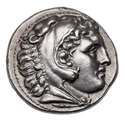
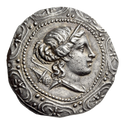


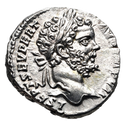



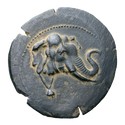
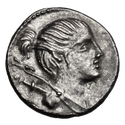

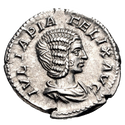
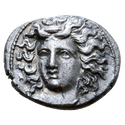
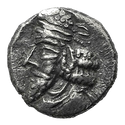
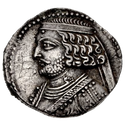
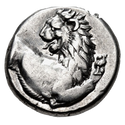
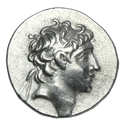

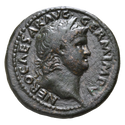







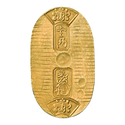
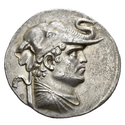



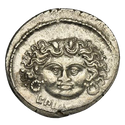

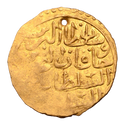
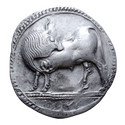
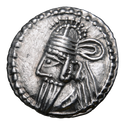
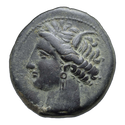


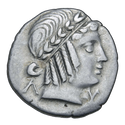

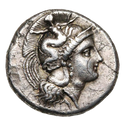

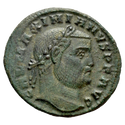
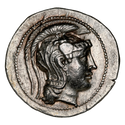

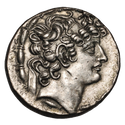


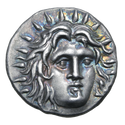










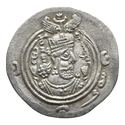





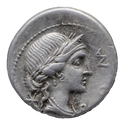
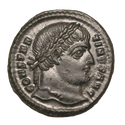
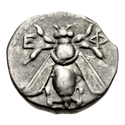


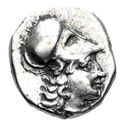

INFO
INFO
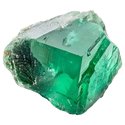
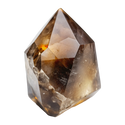
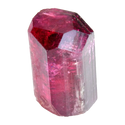


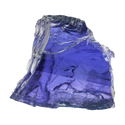
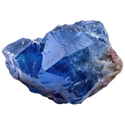
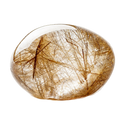
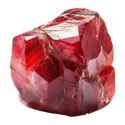

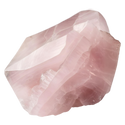
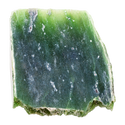
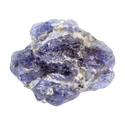
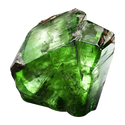
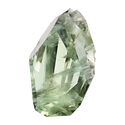

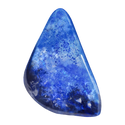

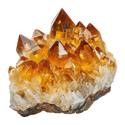

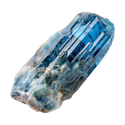


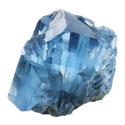
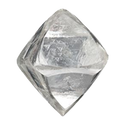
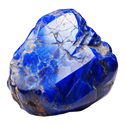
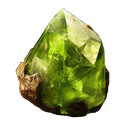
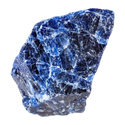
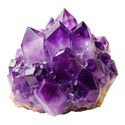
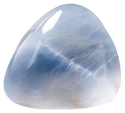
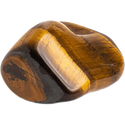

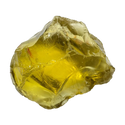
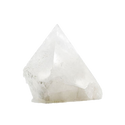
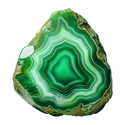
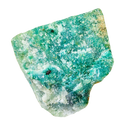
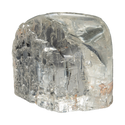
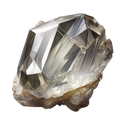
INFO







INFO
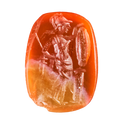



INFO

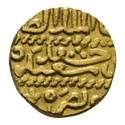
INFO



INFO
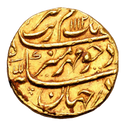


INFO
INFO
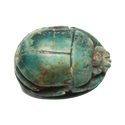



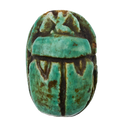
INFO

Contact us to study the personalized creation of the jewel that will accompany you throughout your life.
Call us
If you have any questions regarding our jewellery, the use of our website, or a general customer enquiry about Dubini.
Phone
+44 (0)207 924 6442
Contact
If you have any questions regarding our jewellery, the use of our website, or a general customer enquiry about Dubini.
Monday – Friday: 10am – 5pm (GMT)
+44 (0)207 924 6442
shop@dubini.co.uk
Join us
Sign up to our newsletter so we can welcome you to the Dubini community and keep you posted on new launches, events and more.






















































































